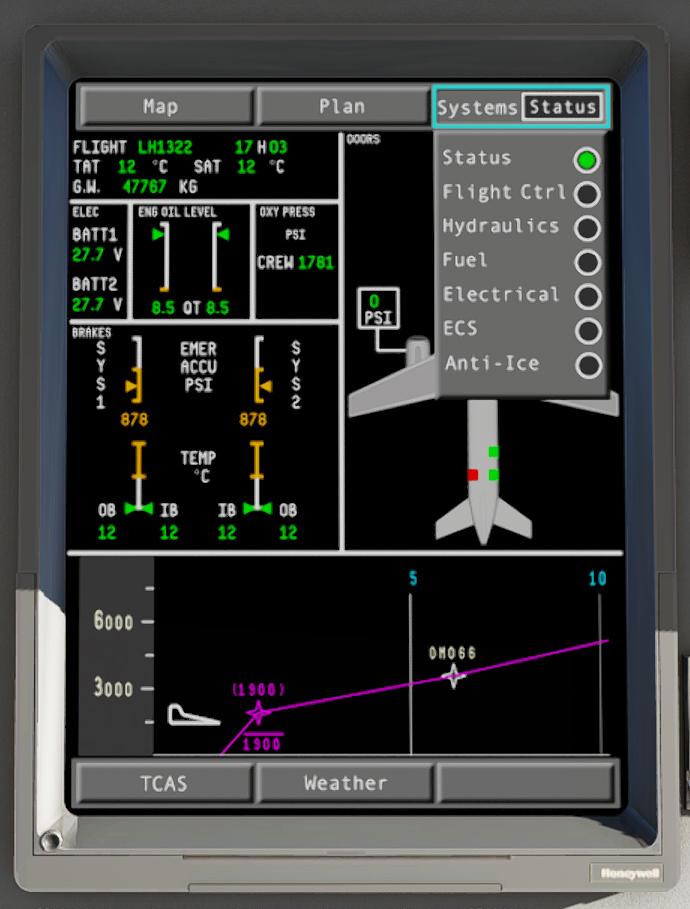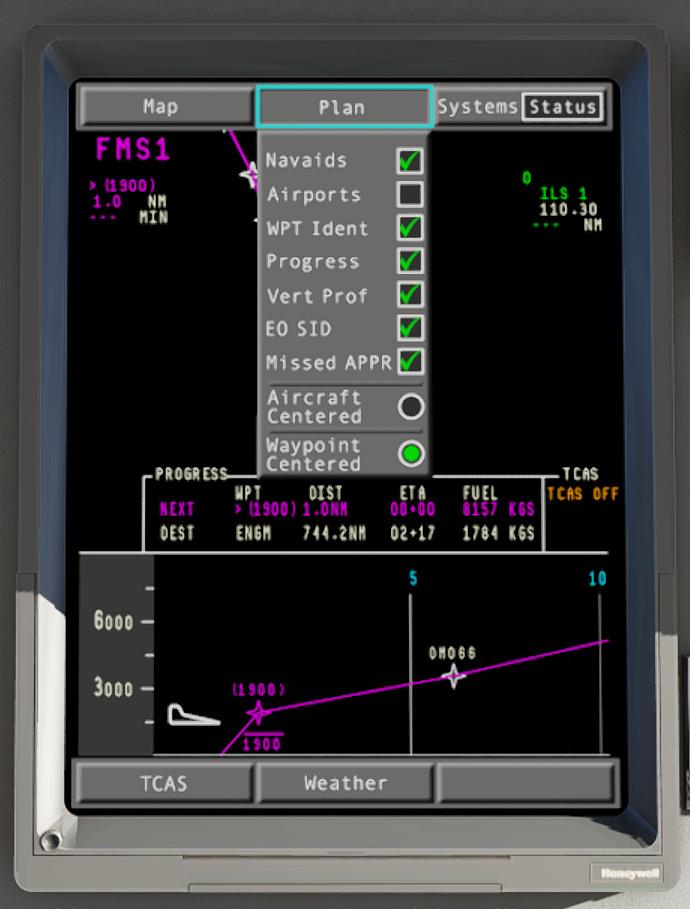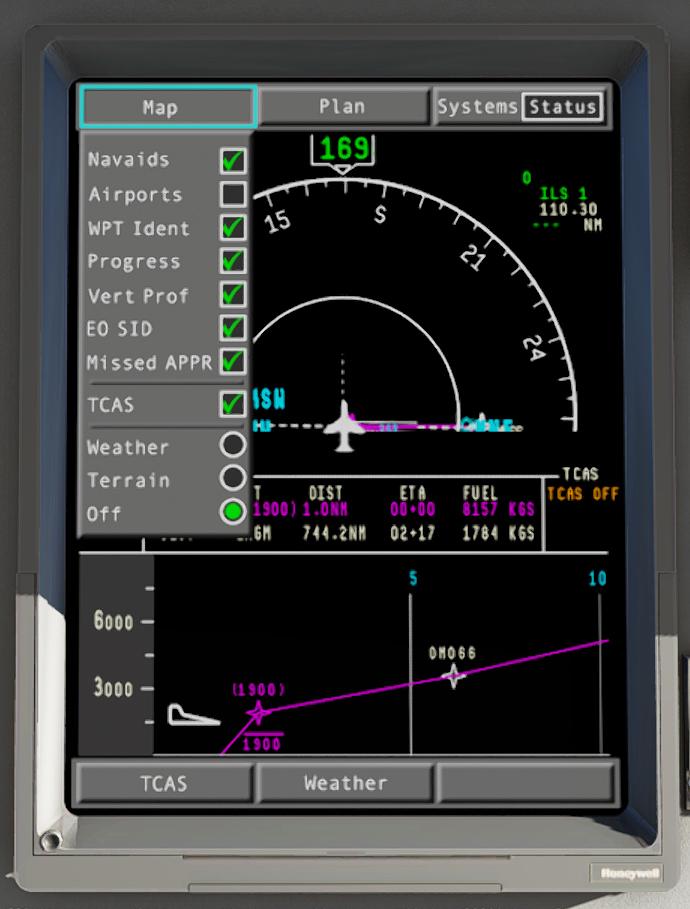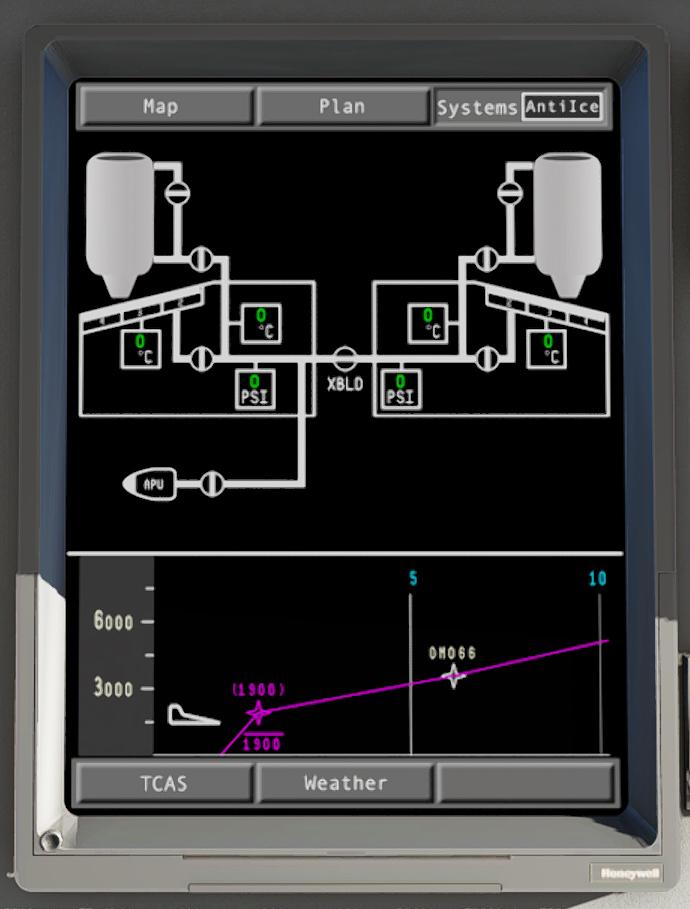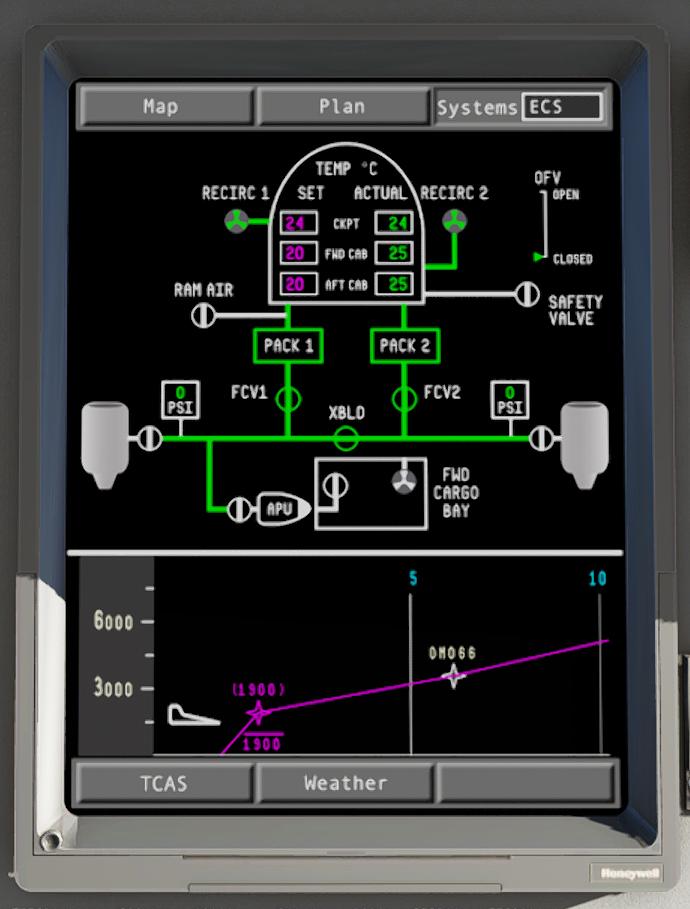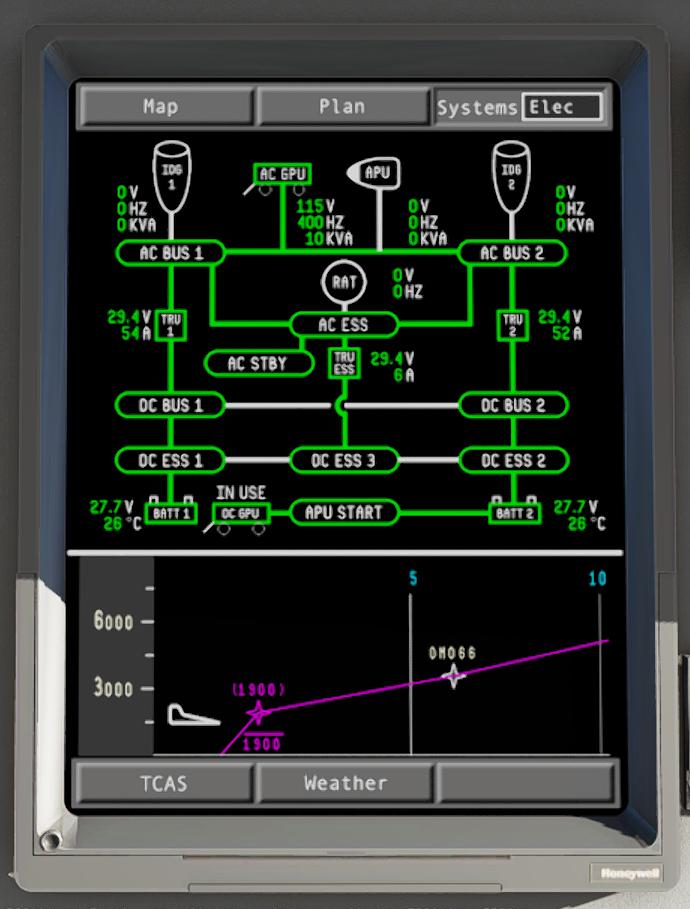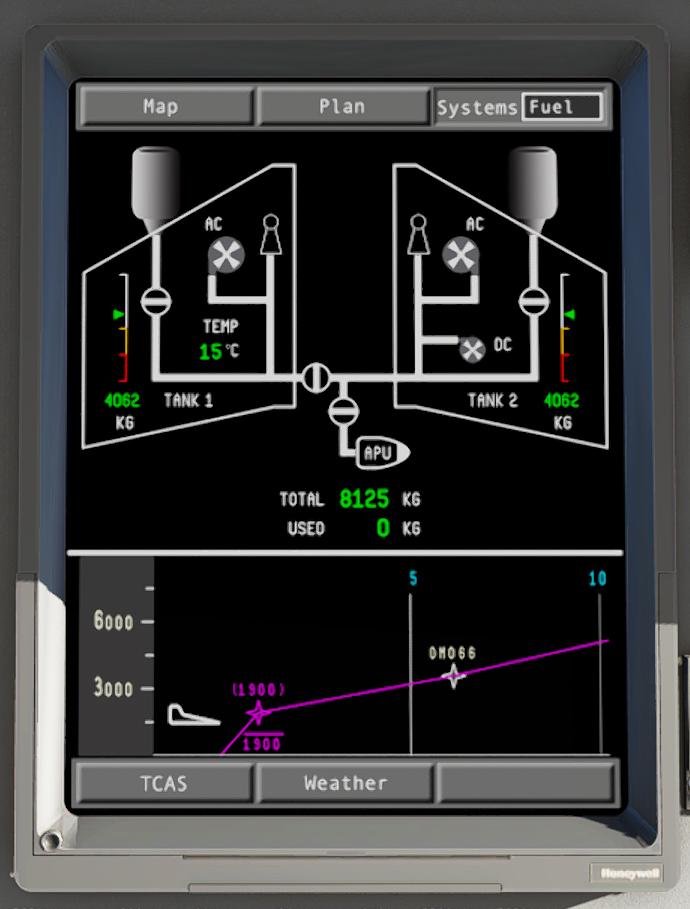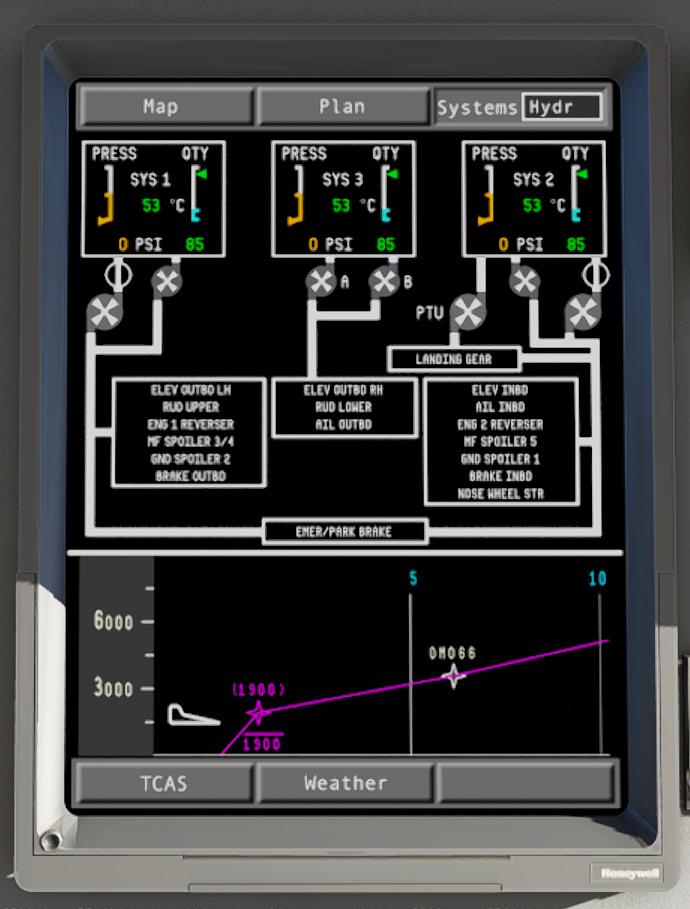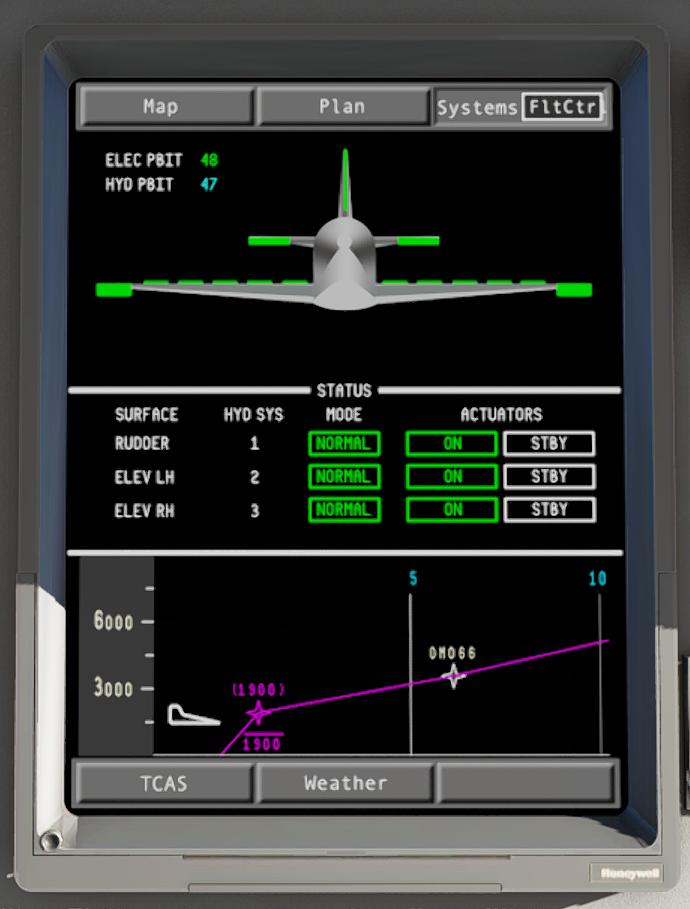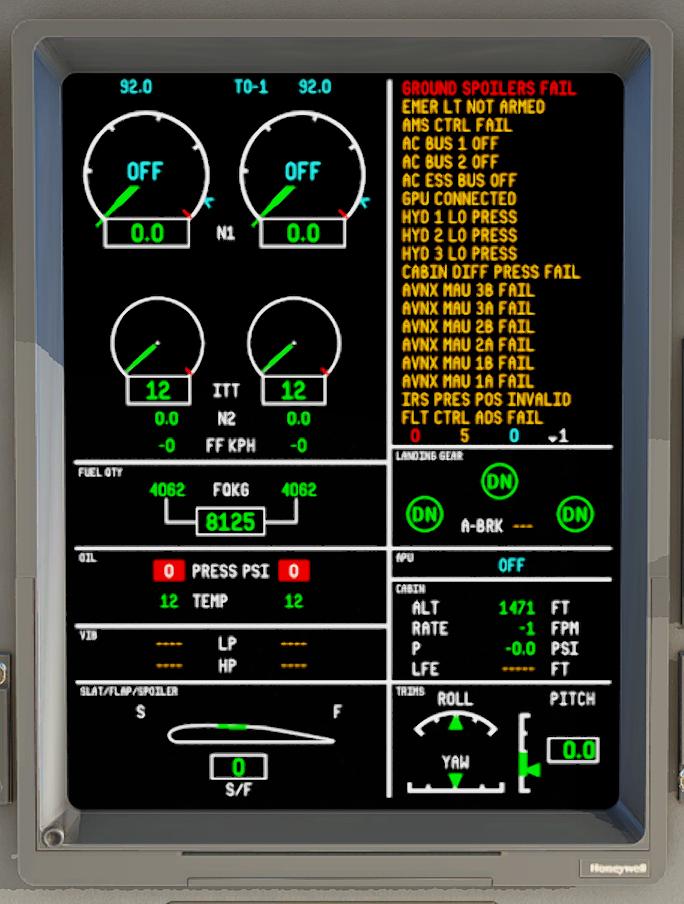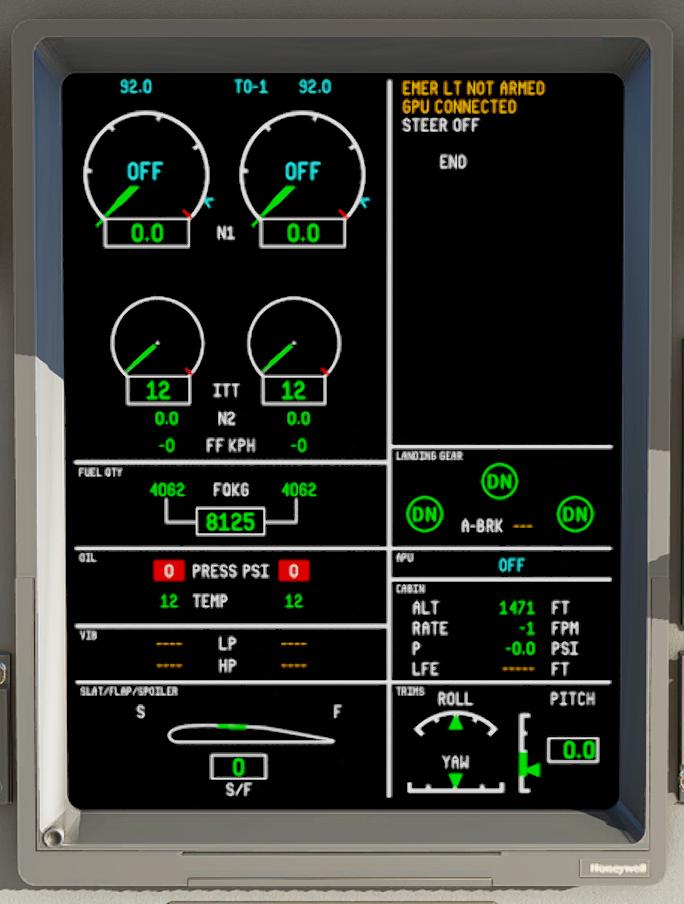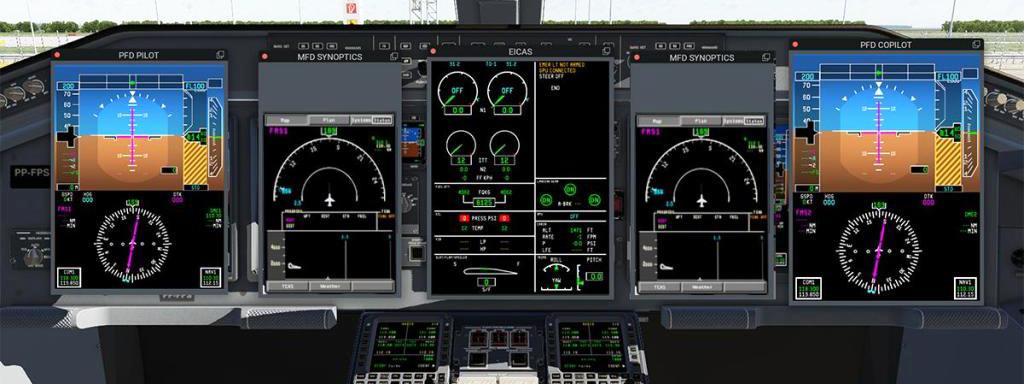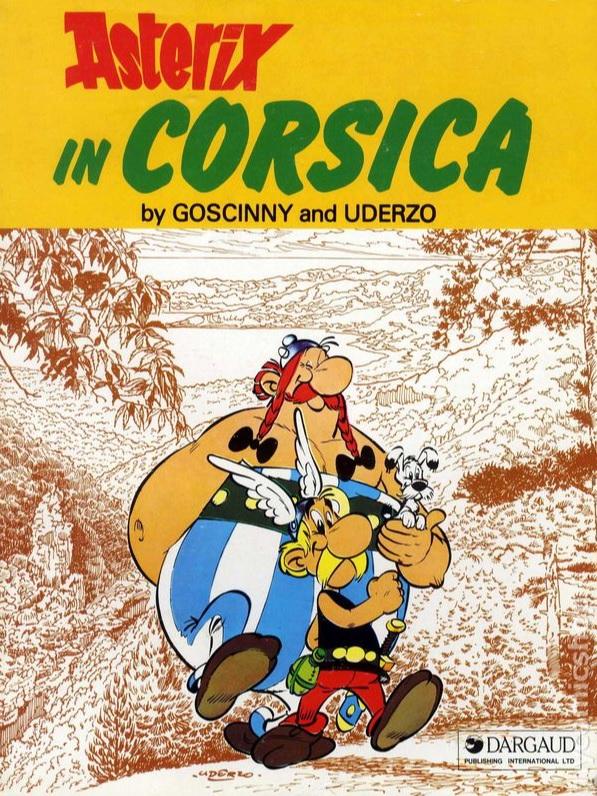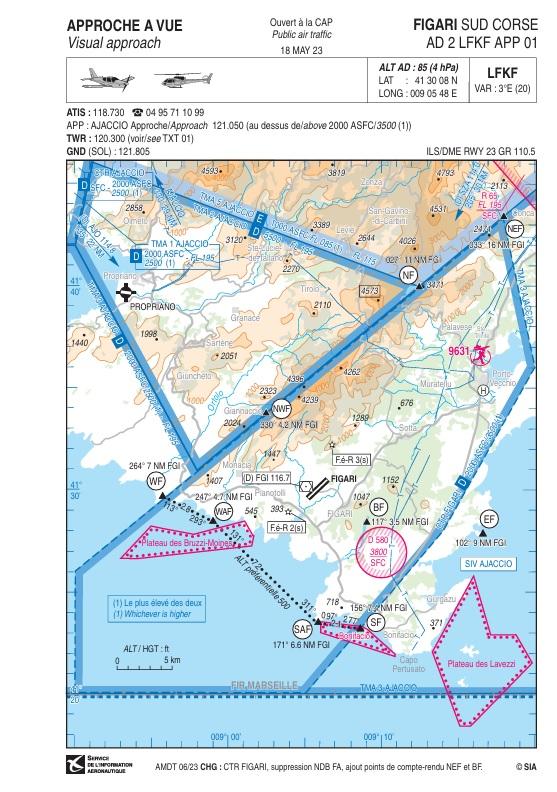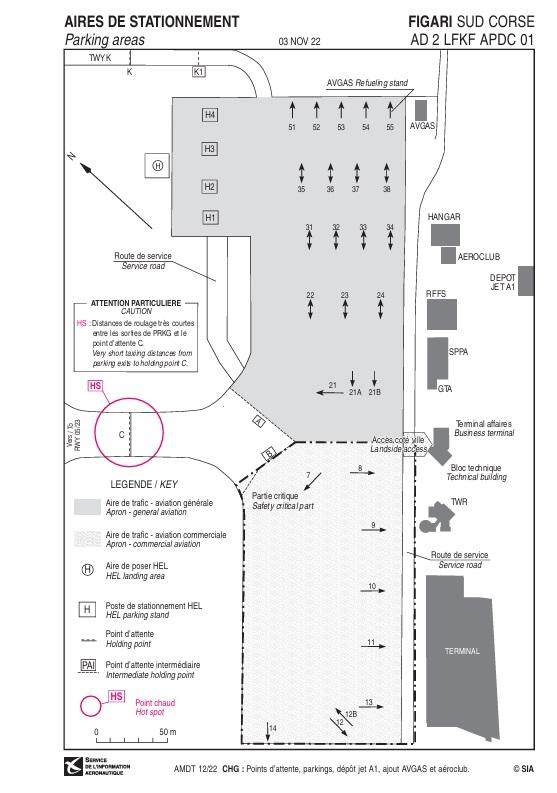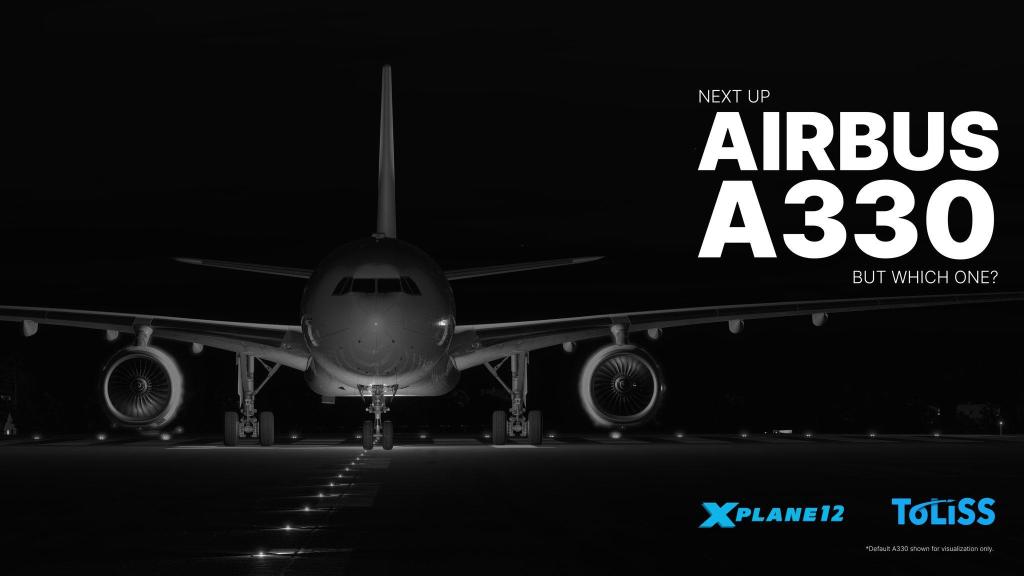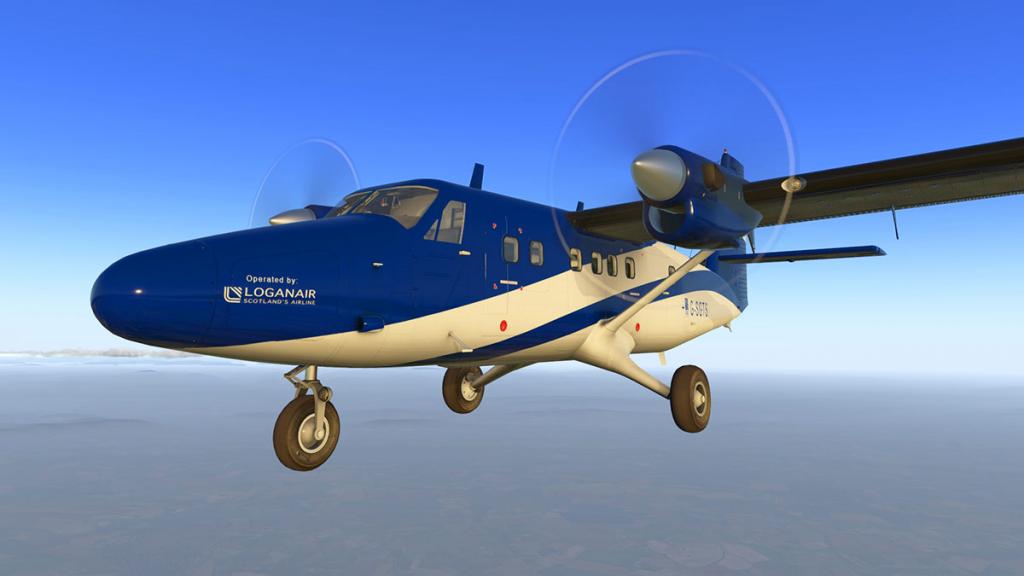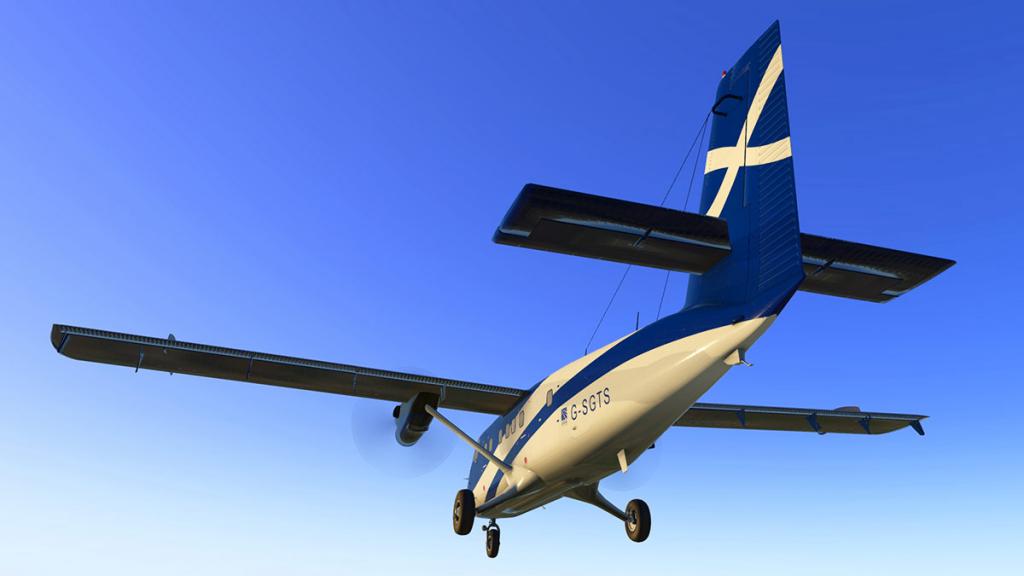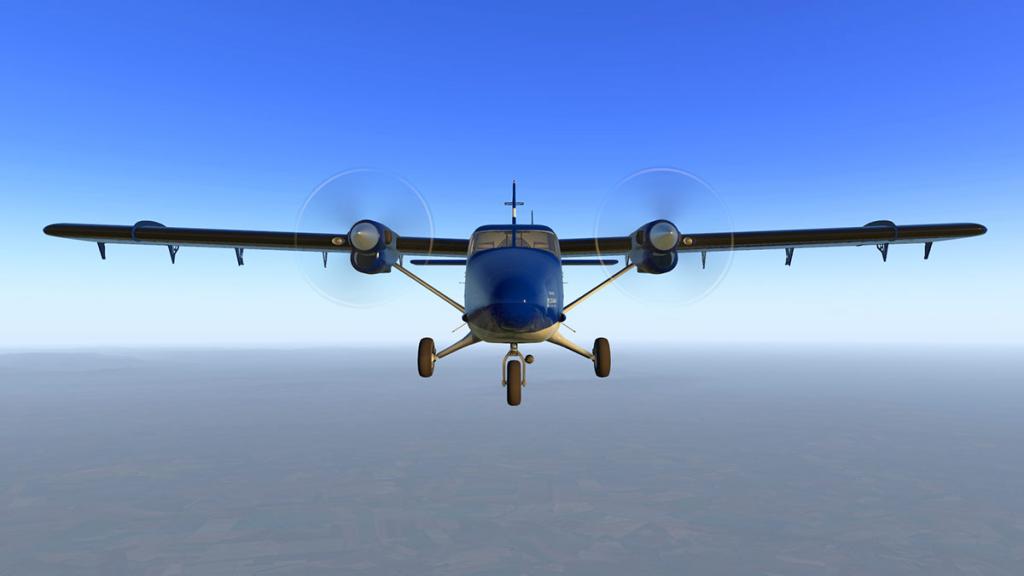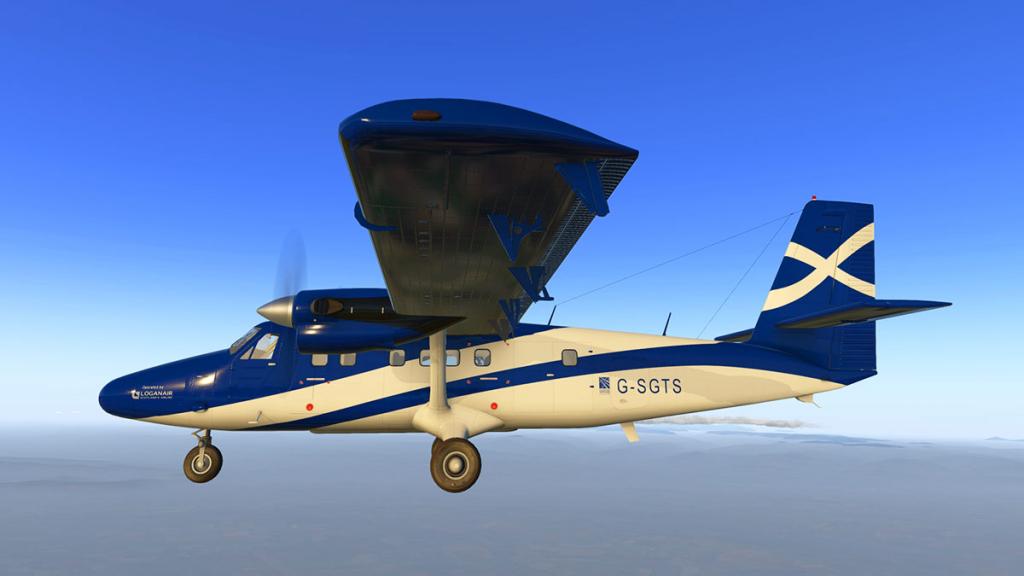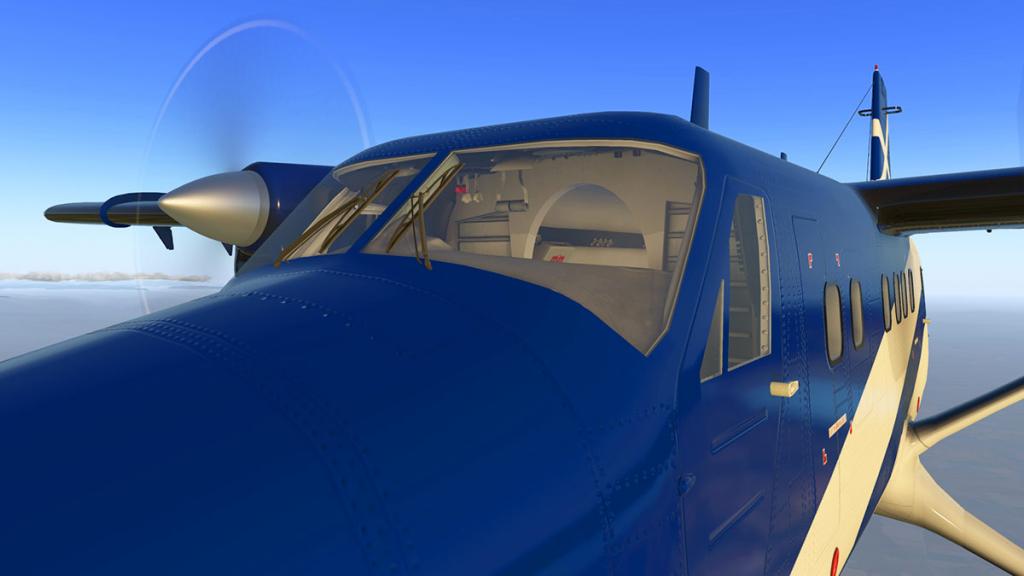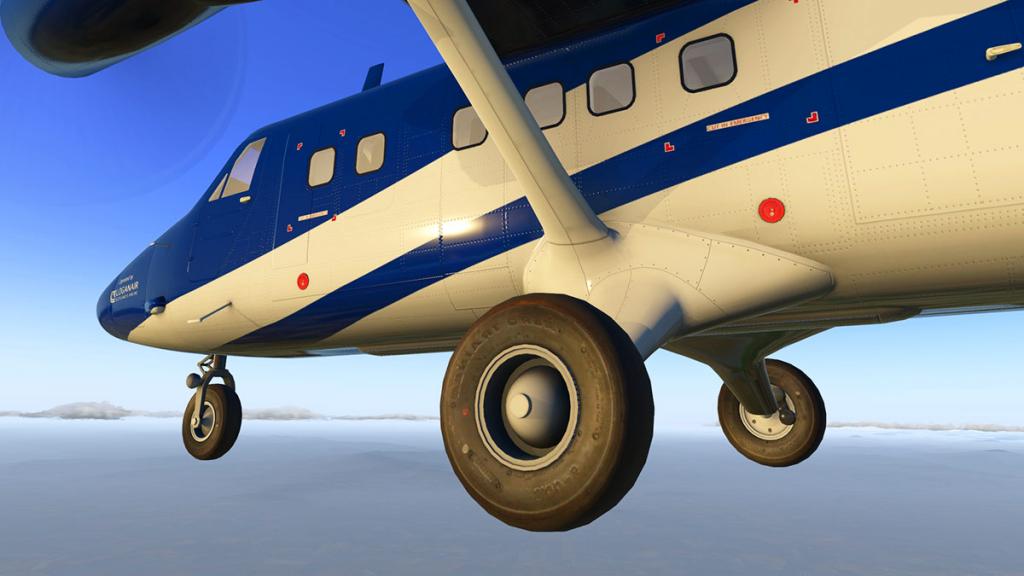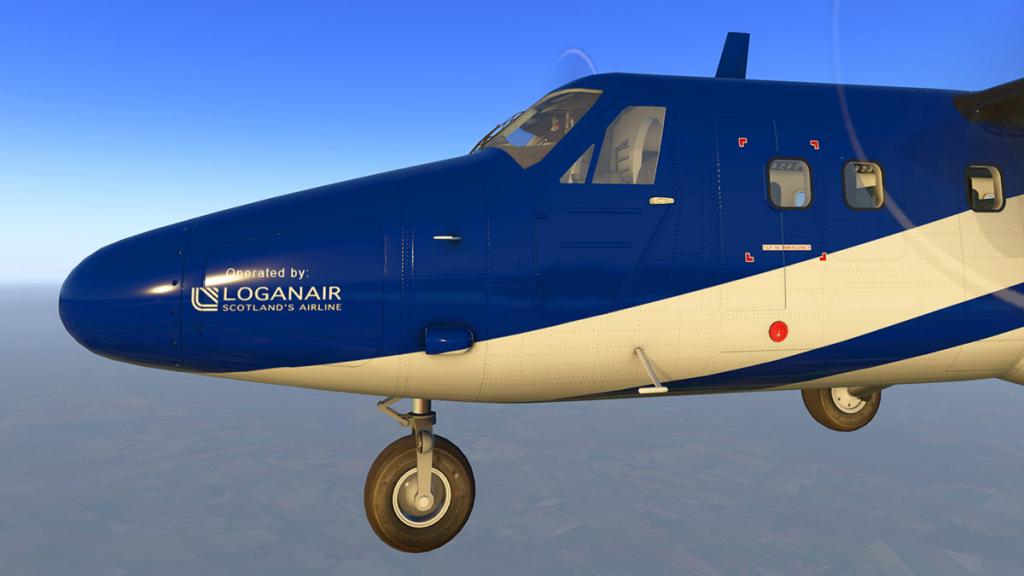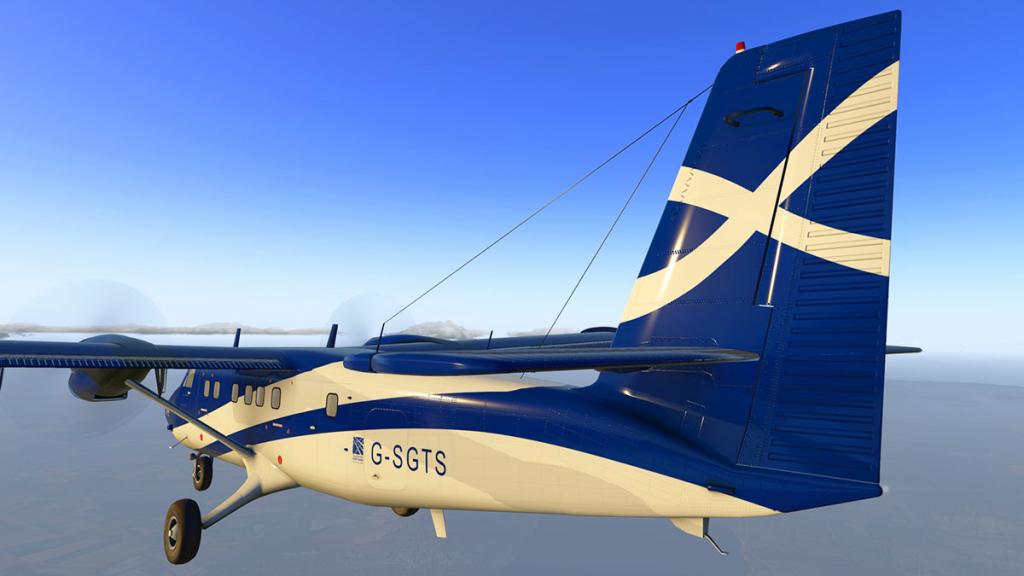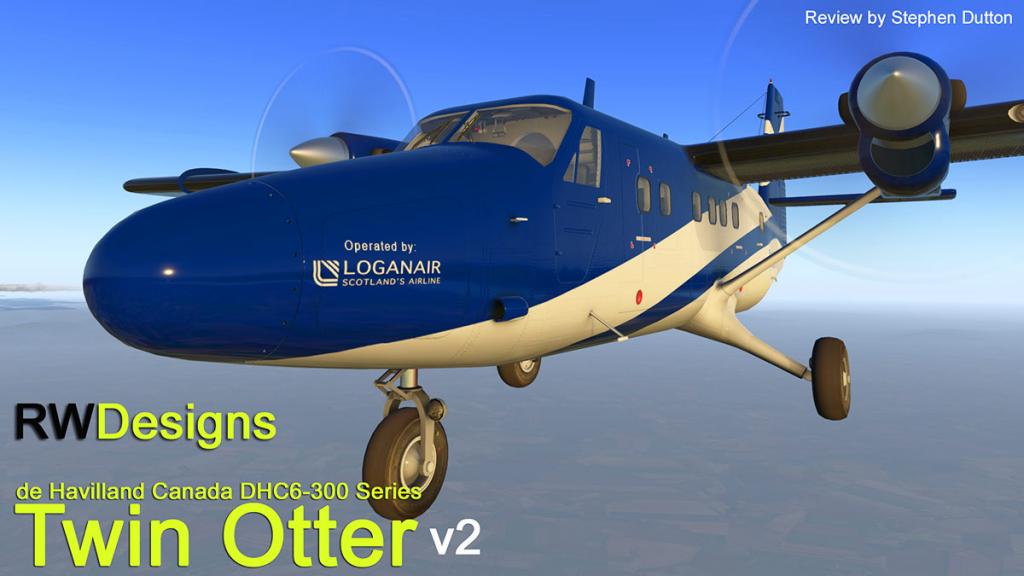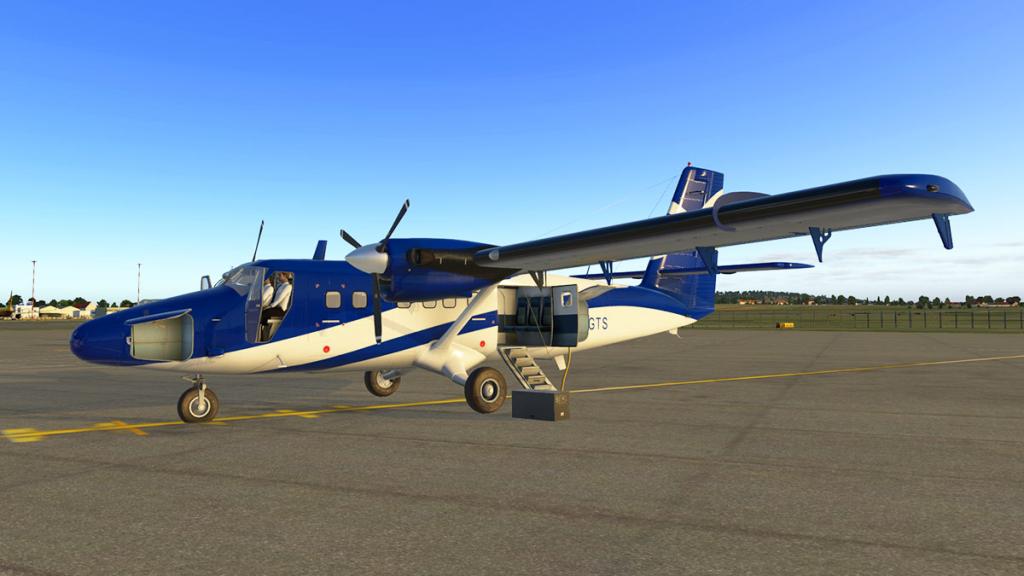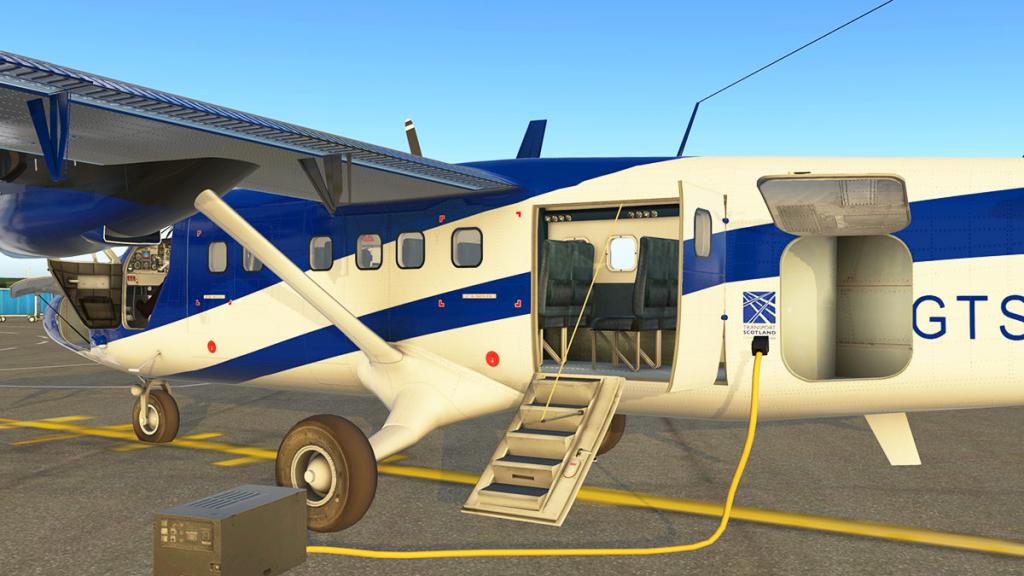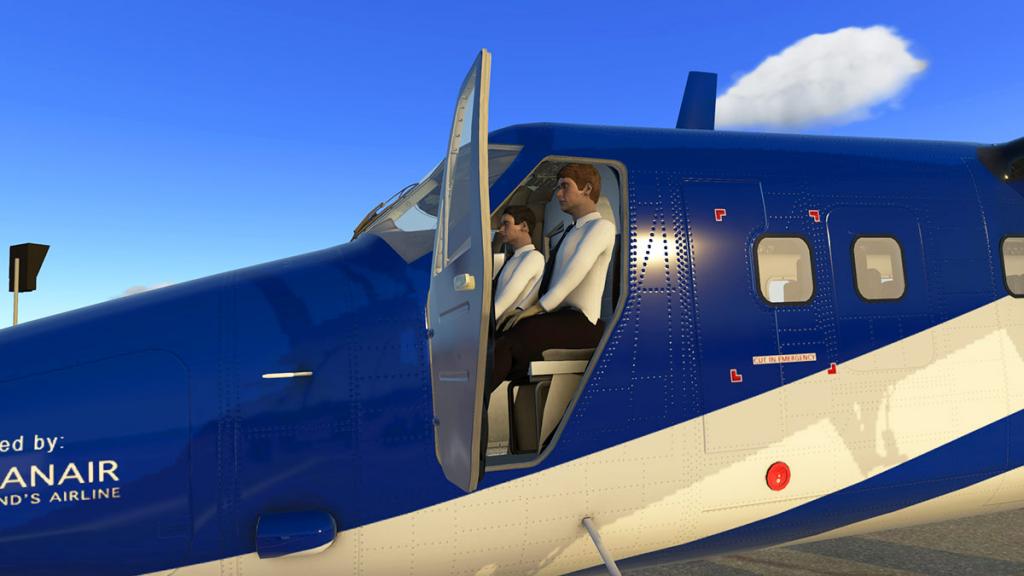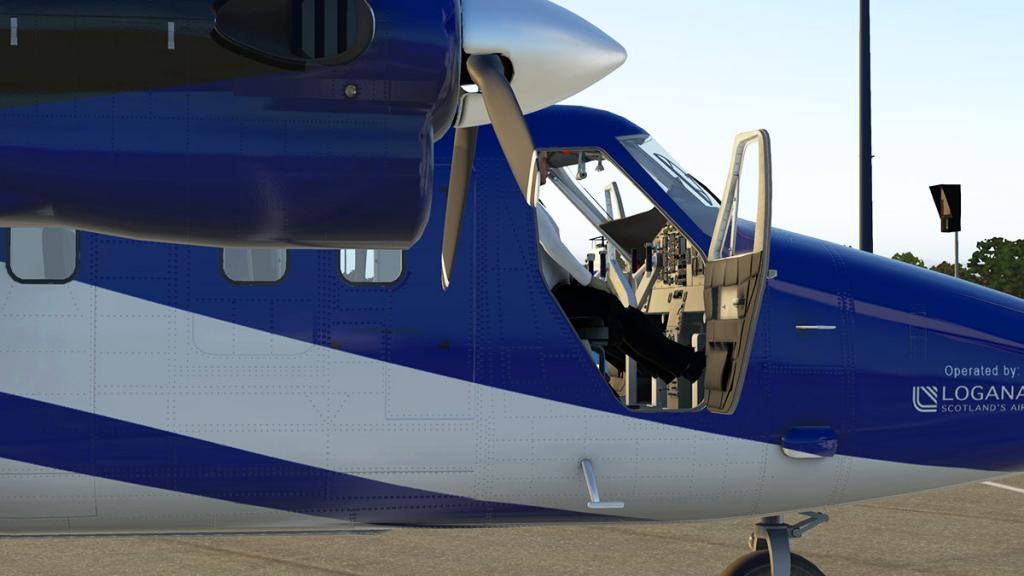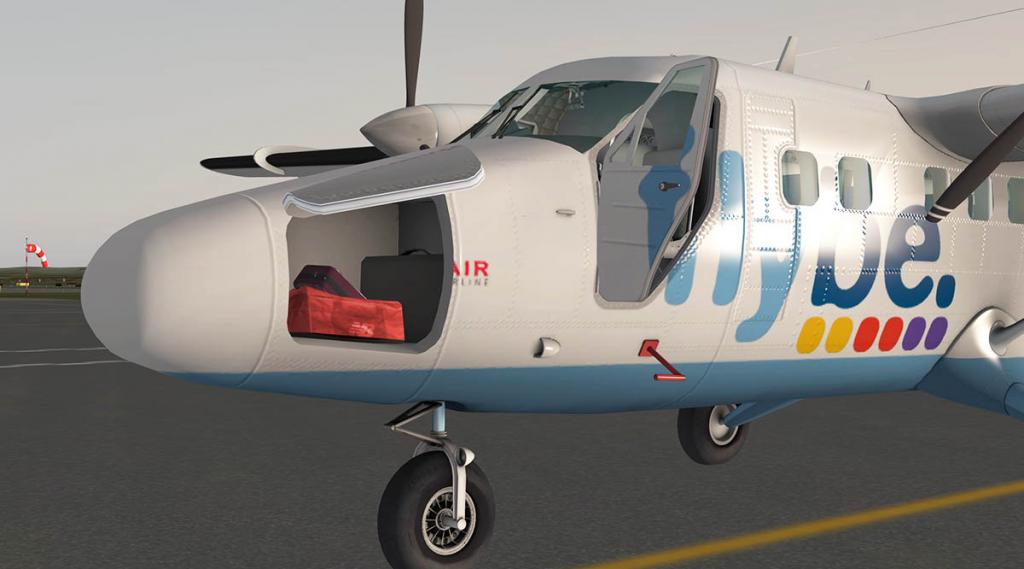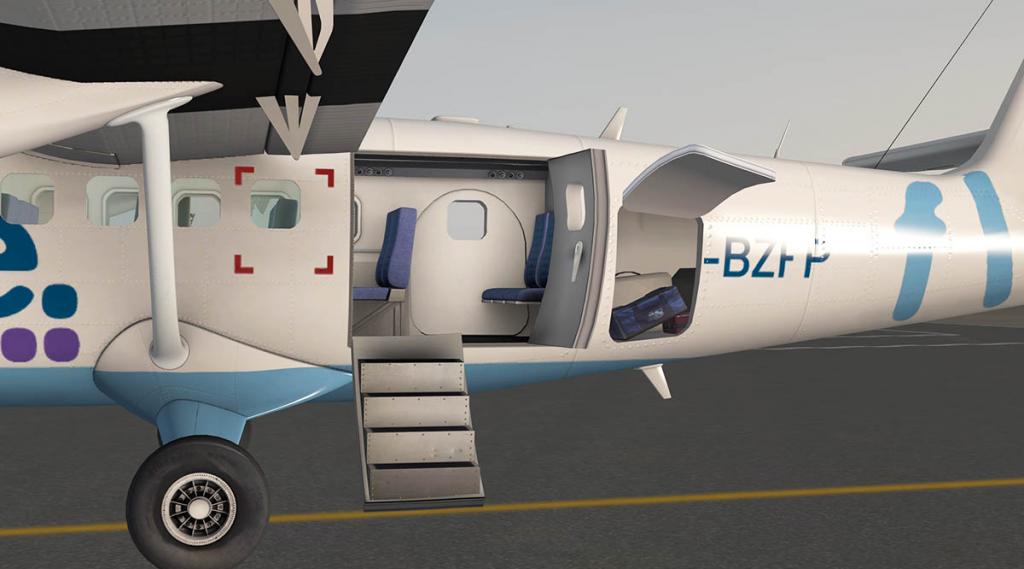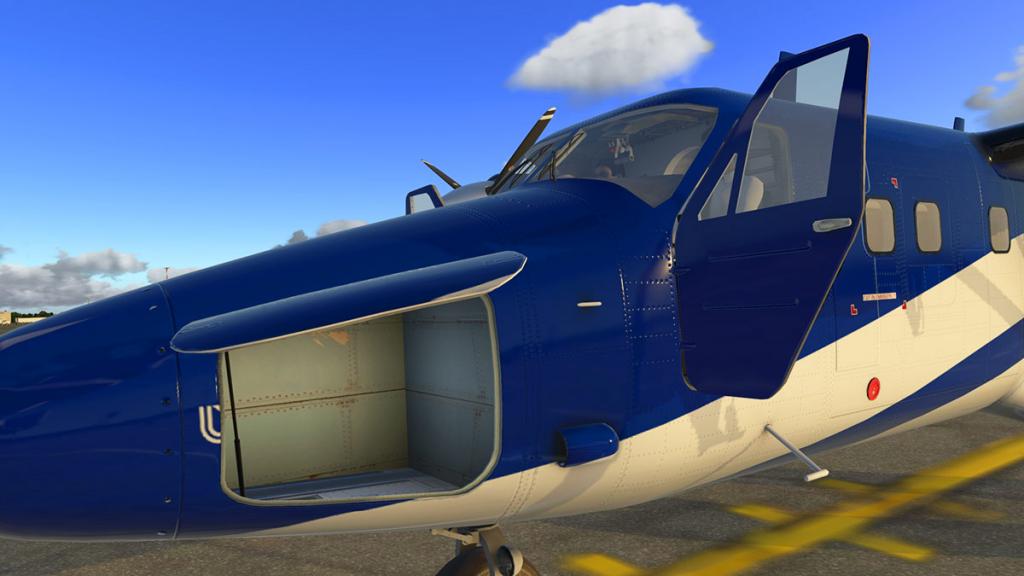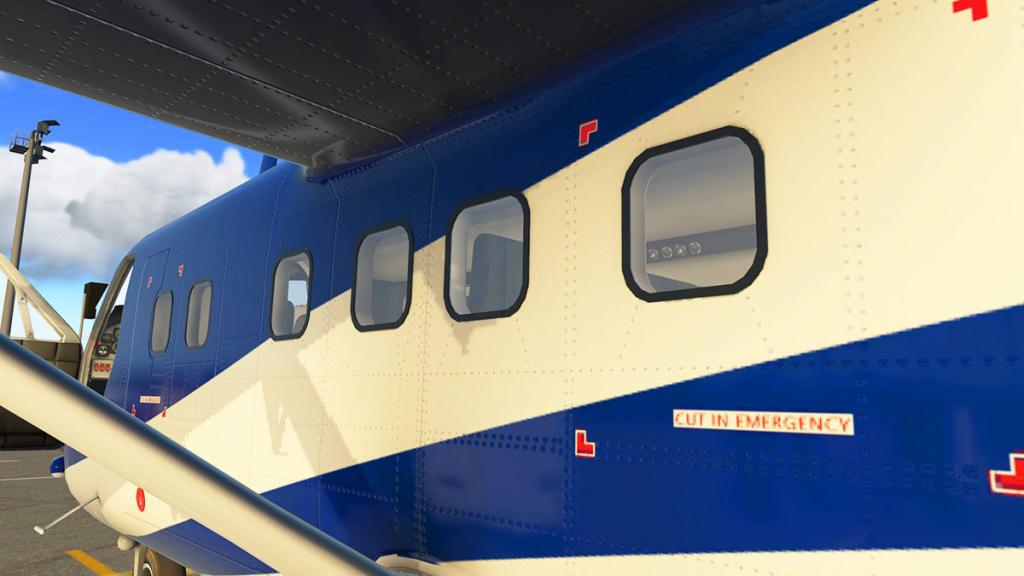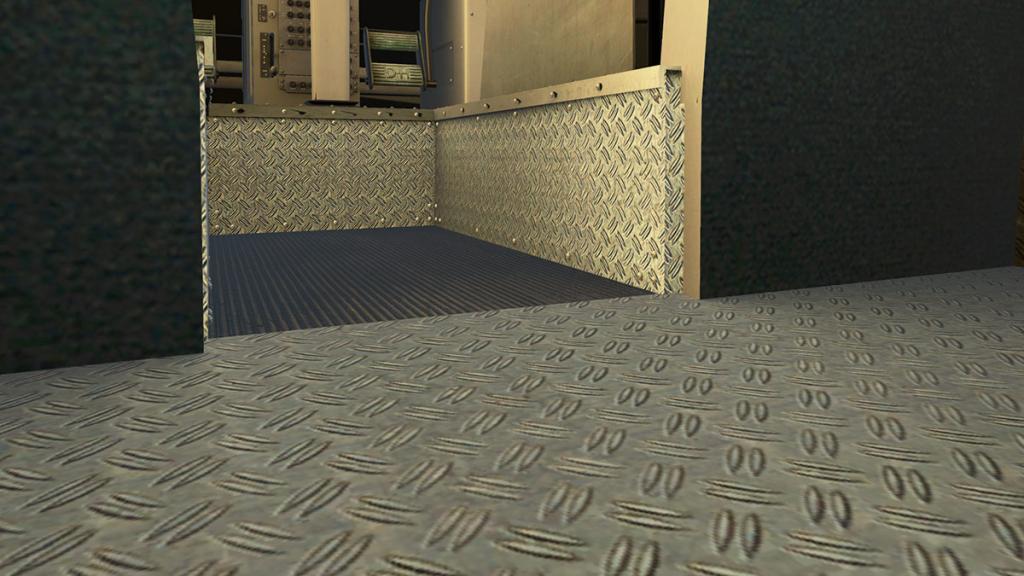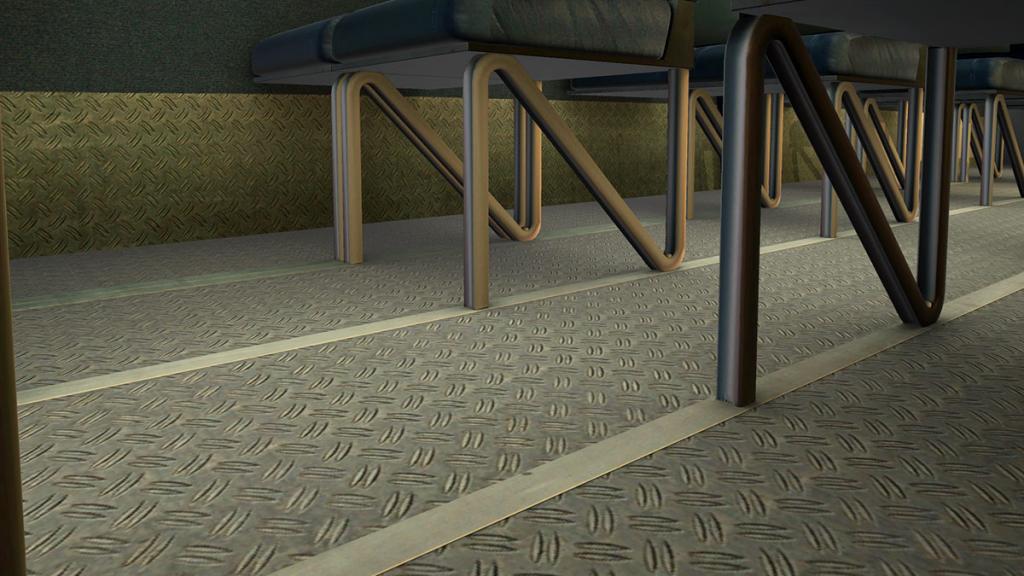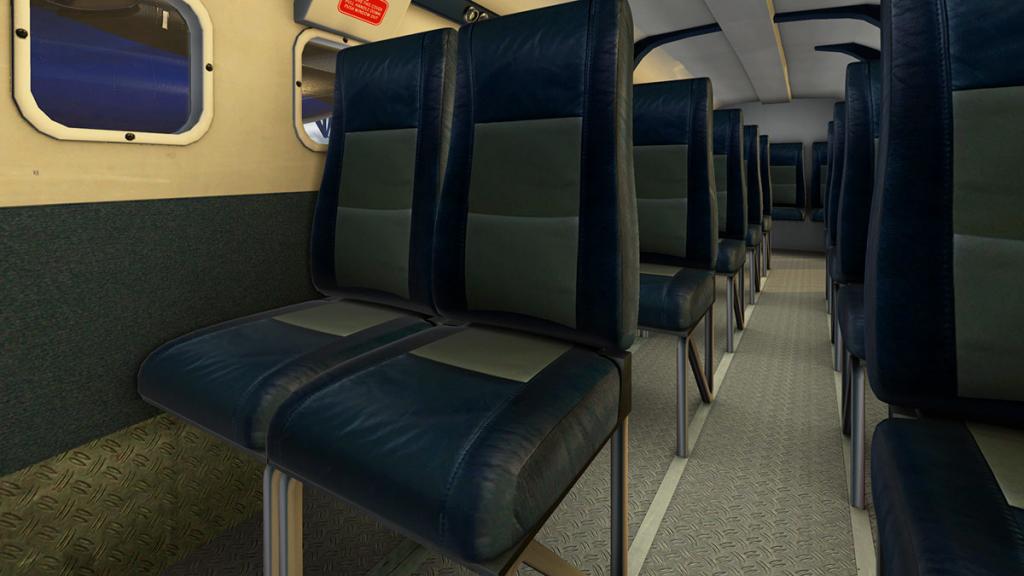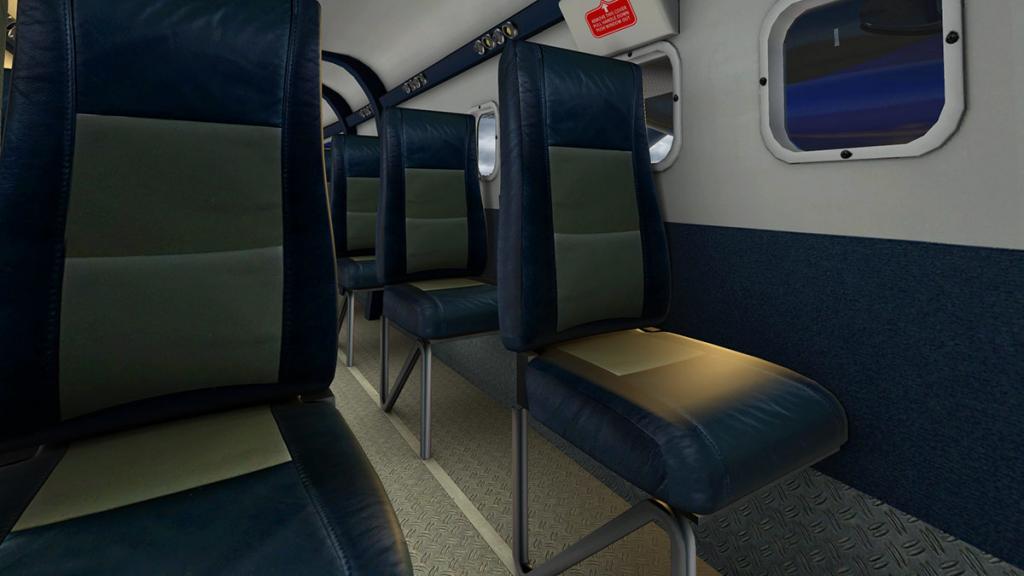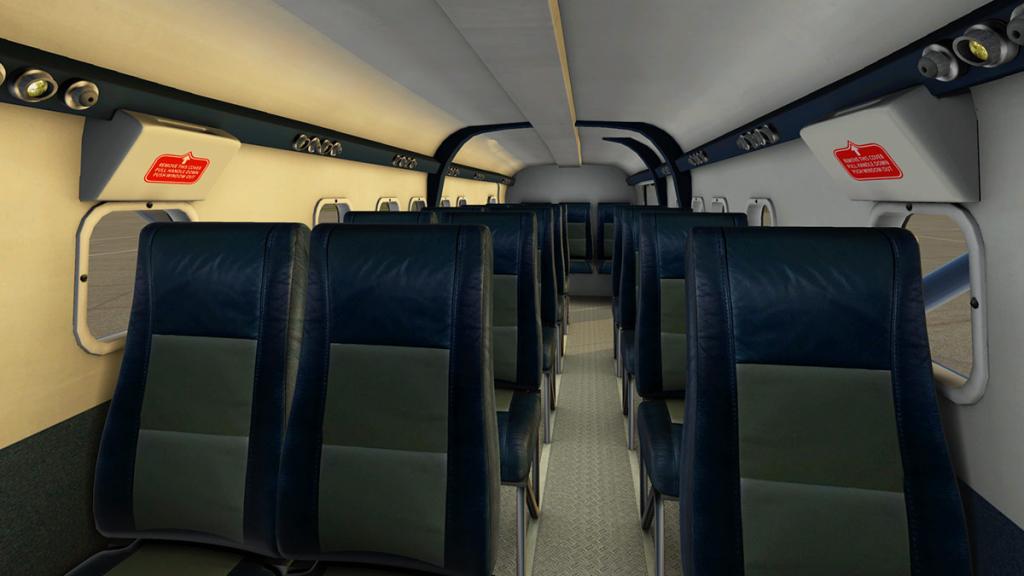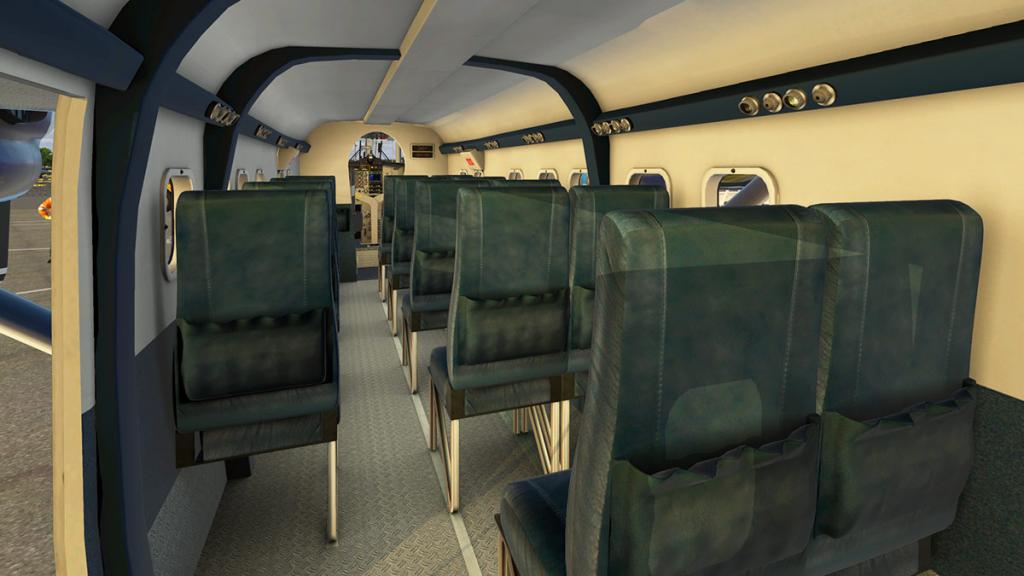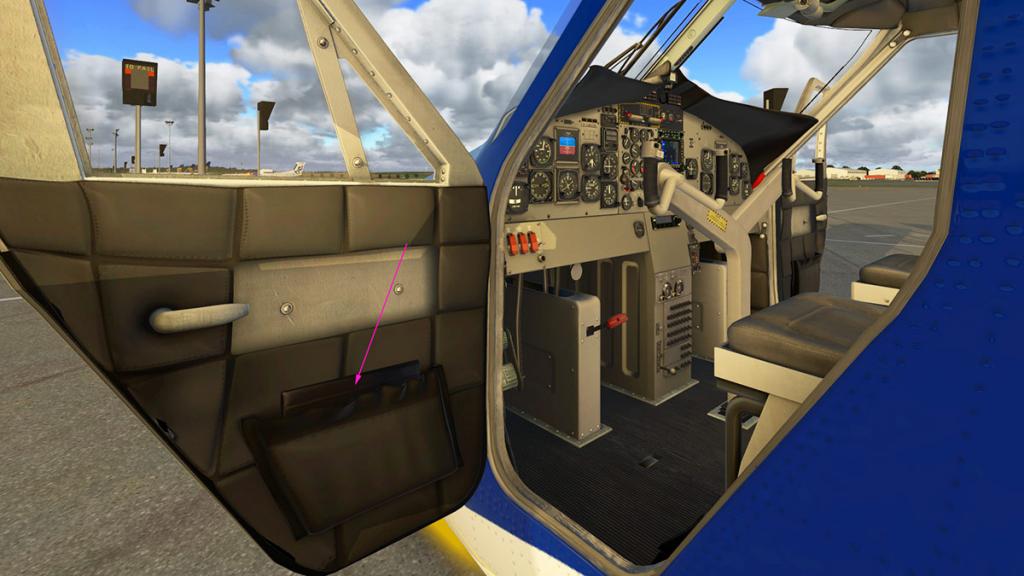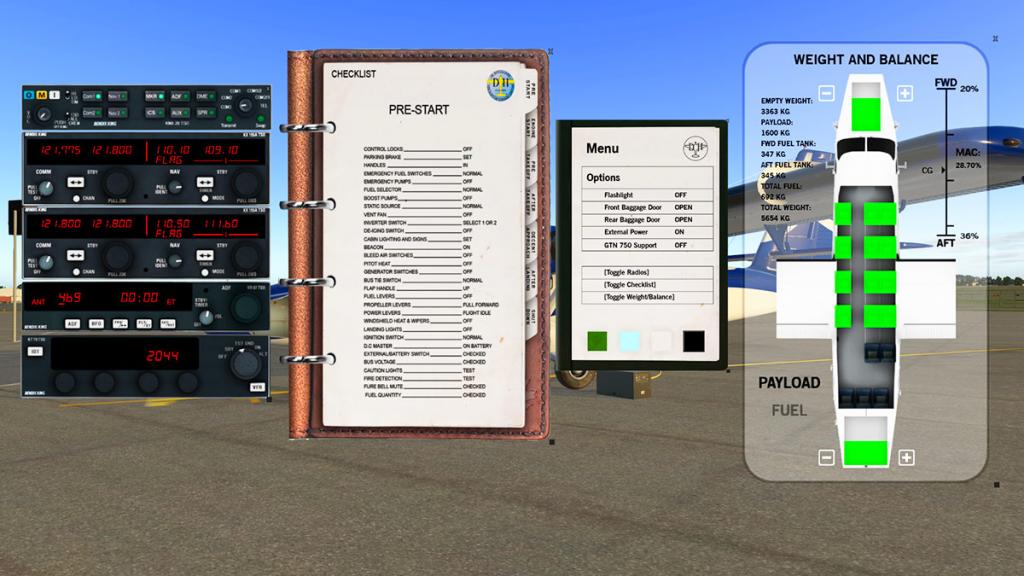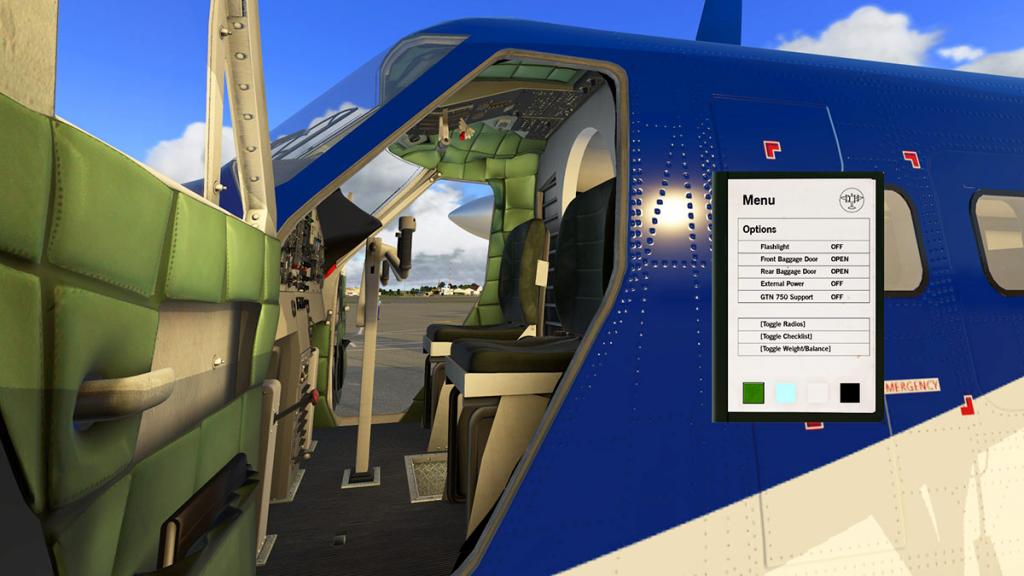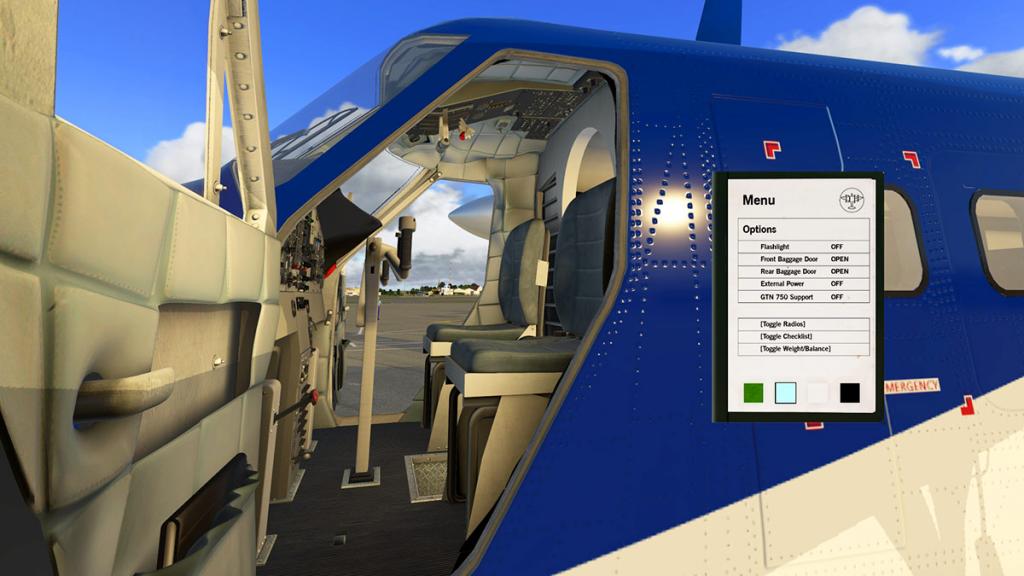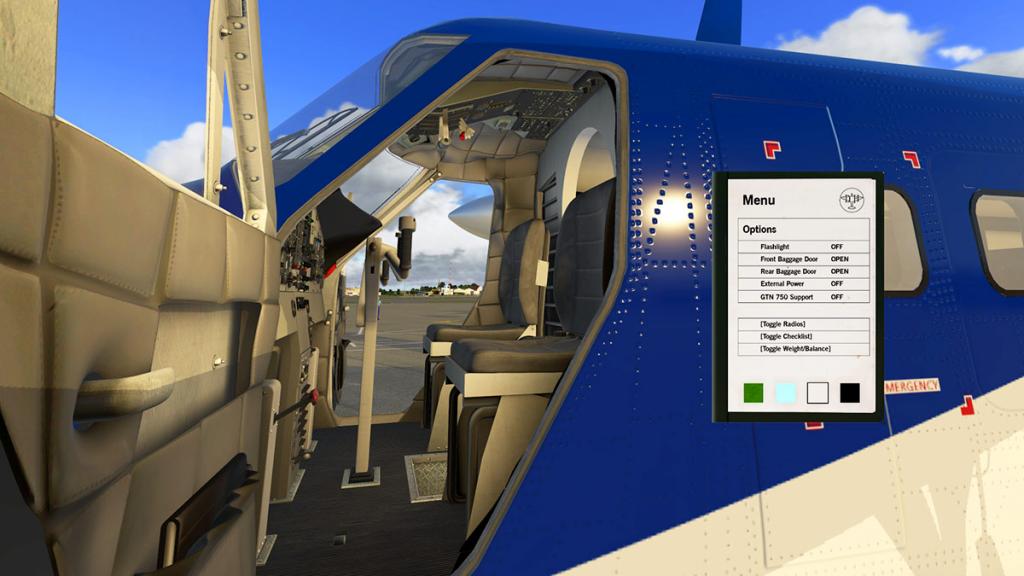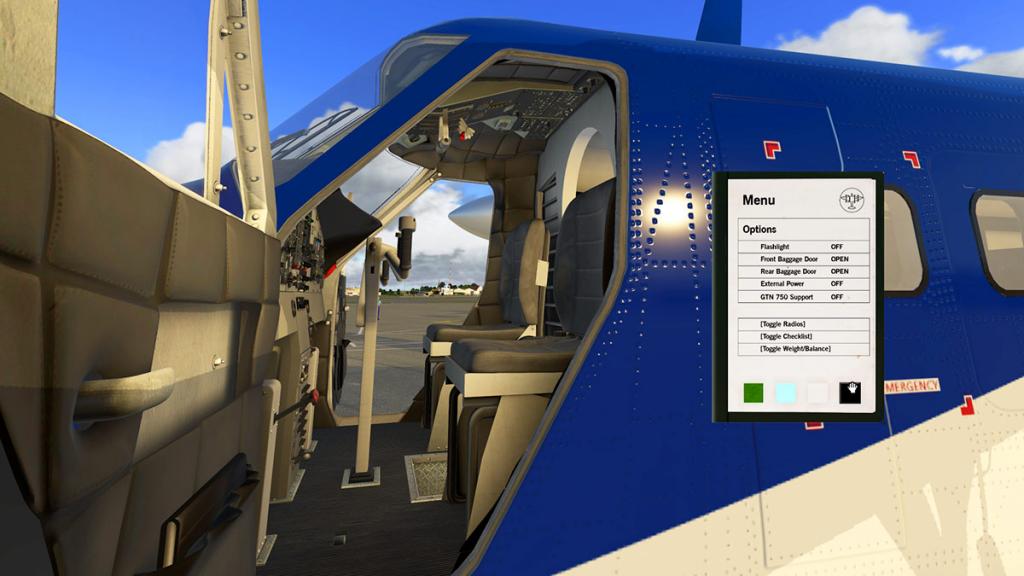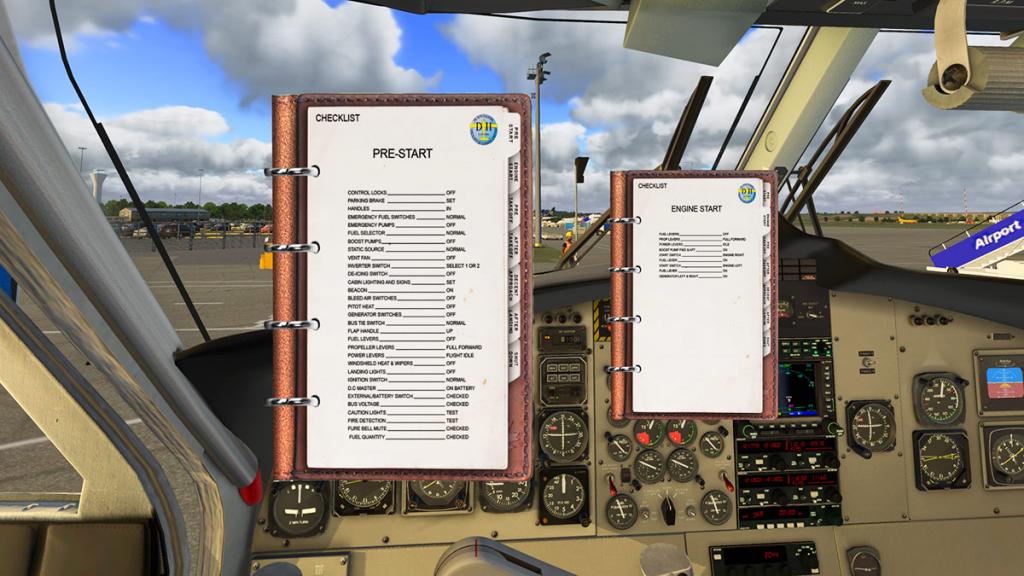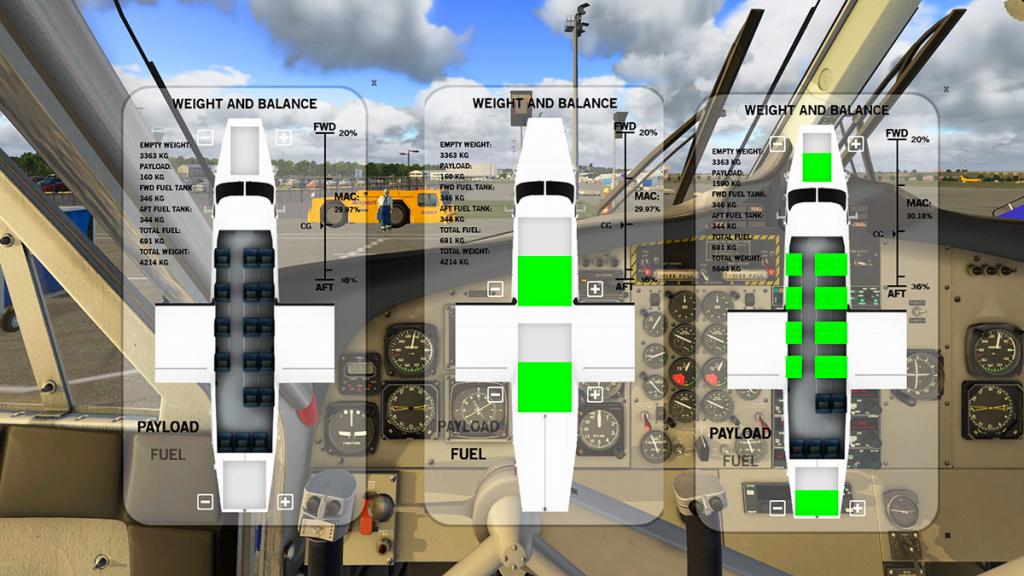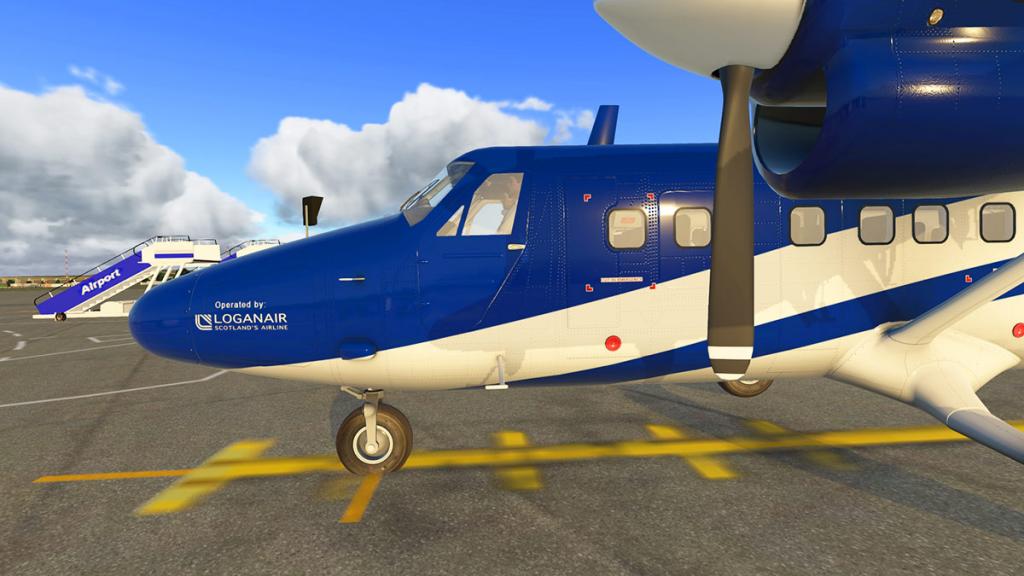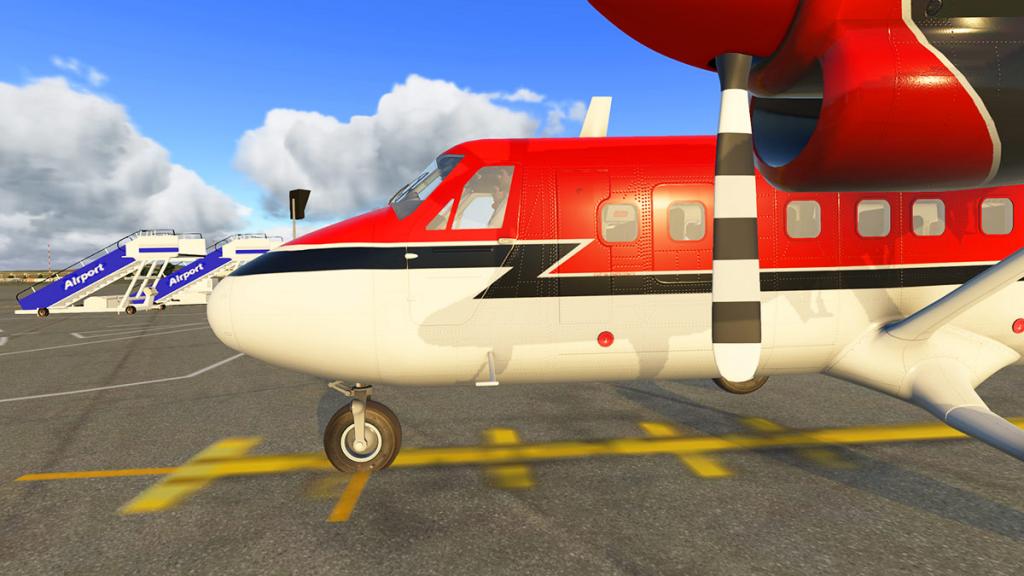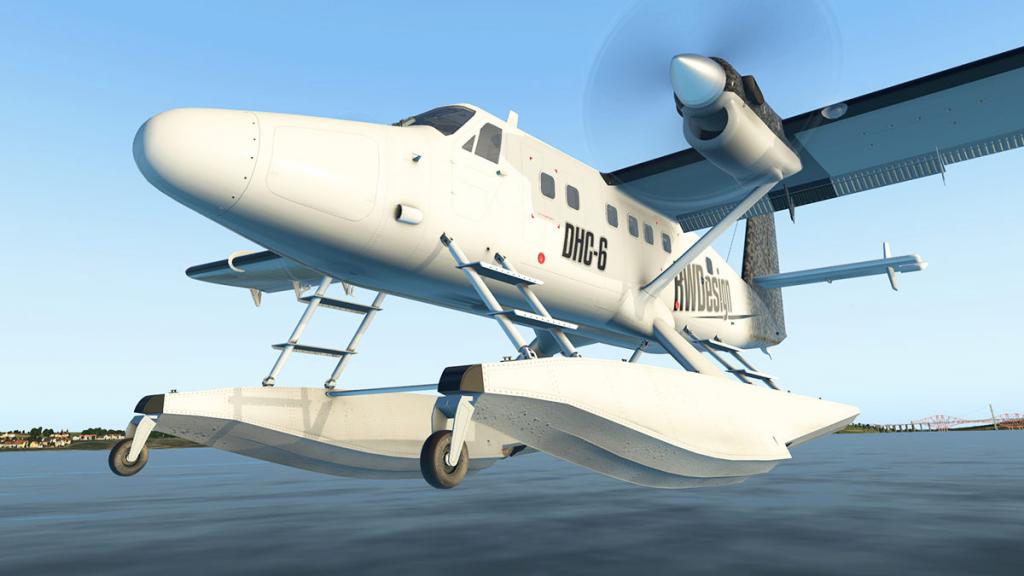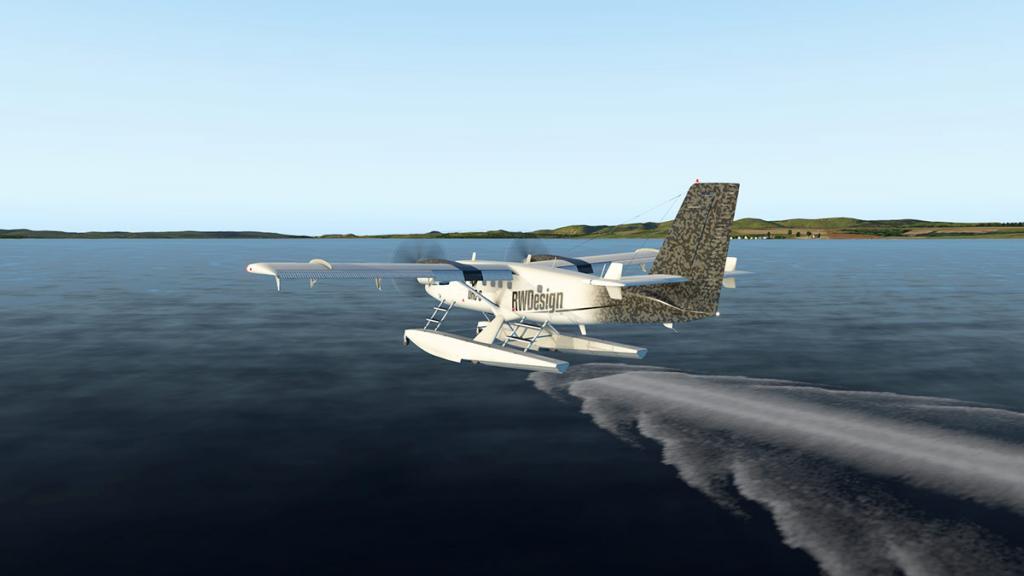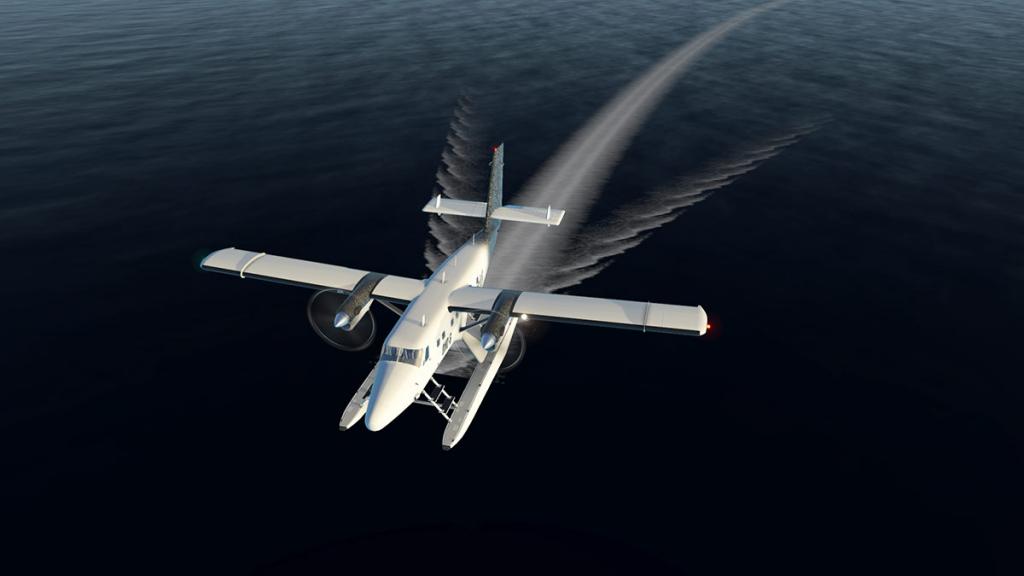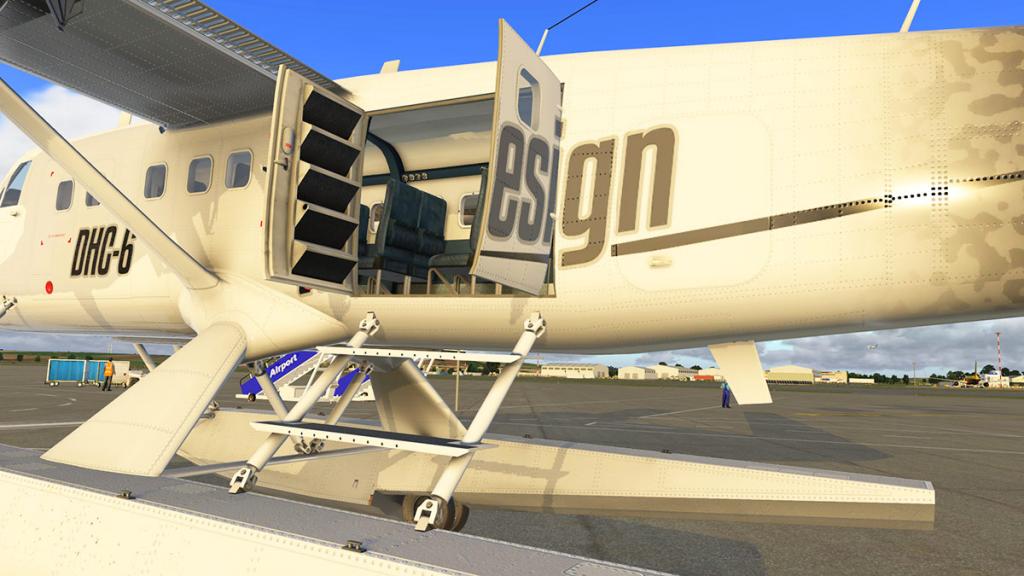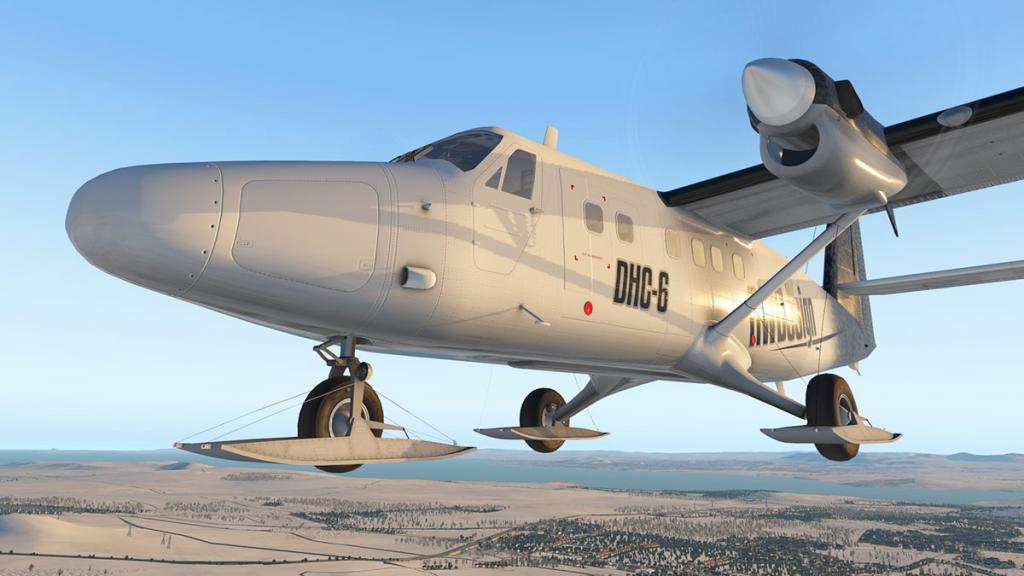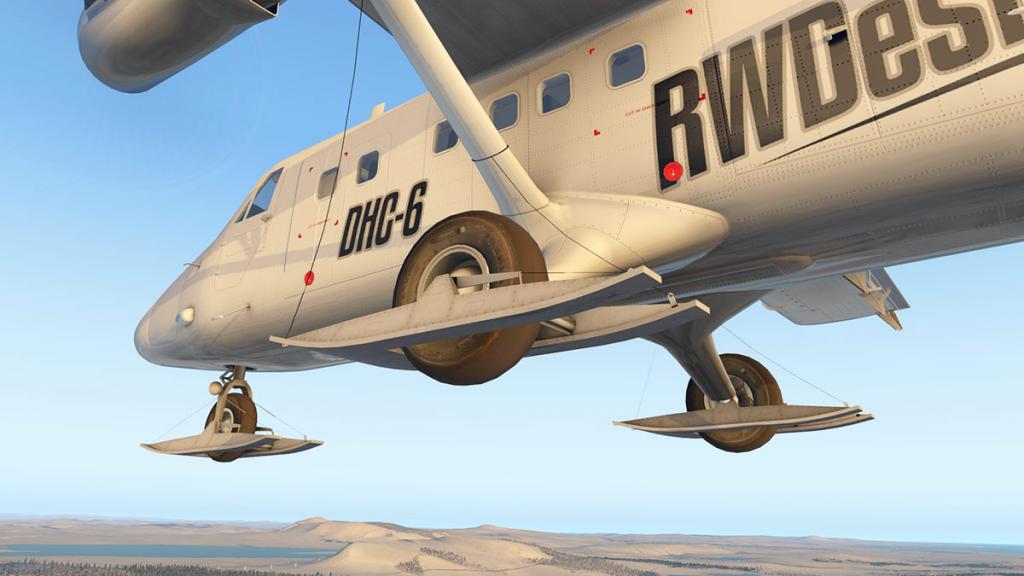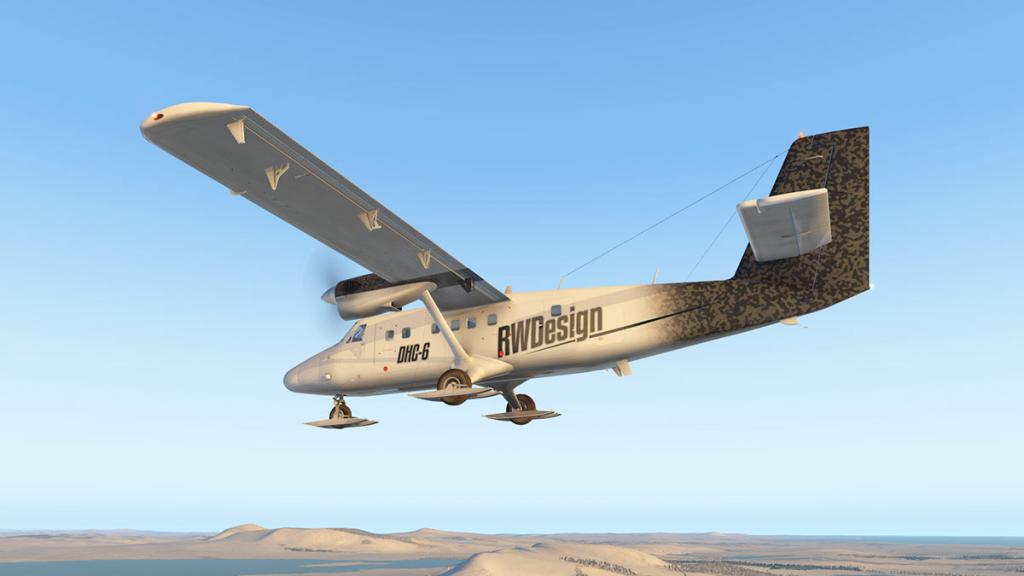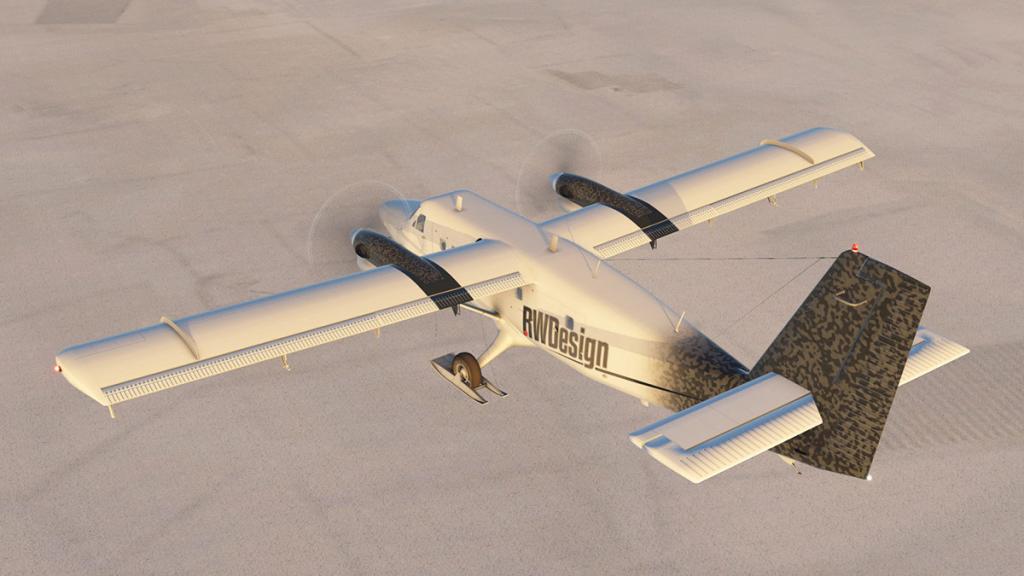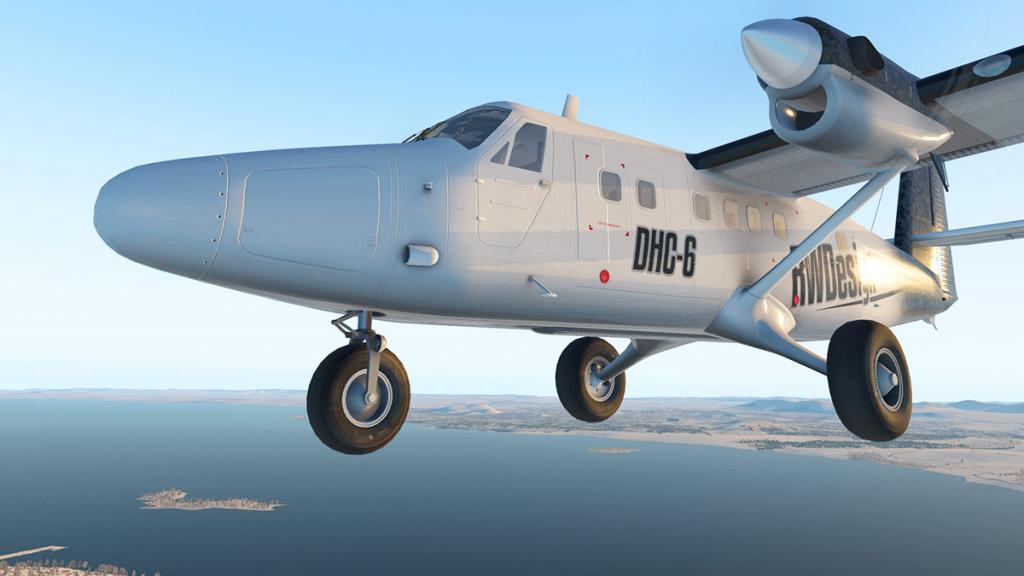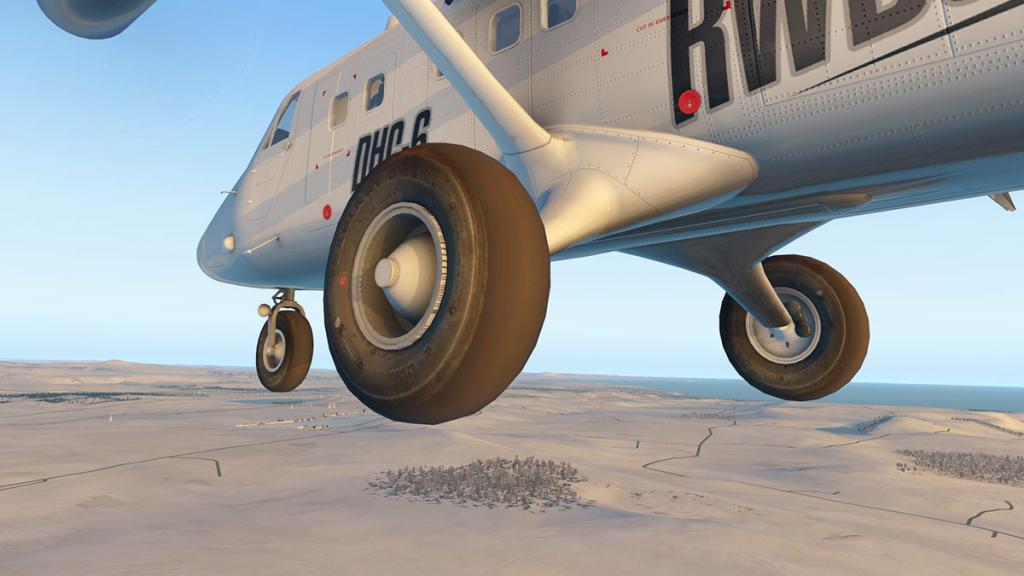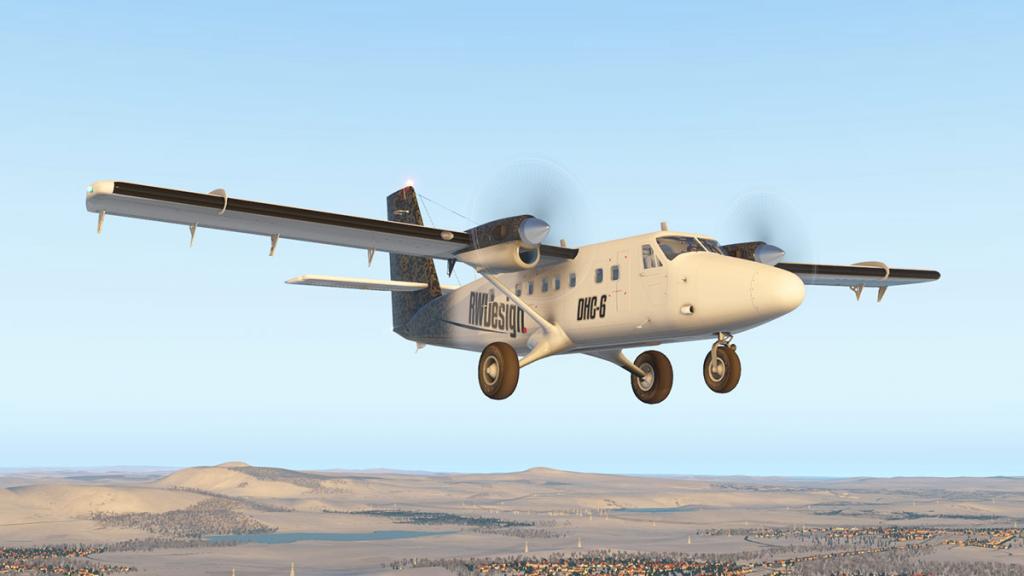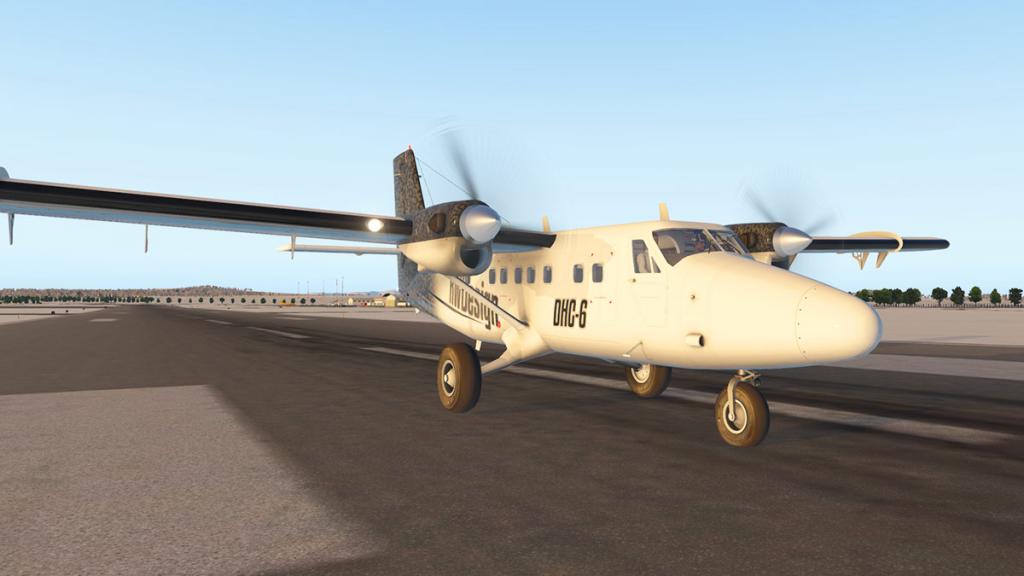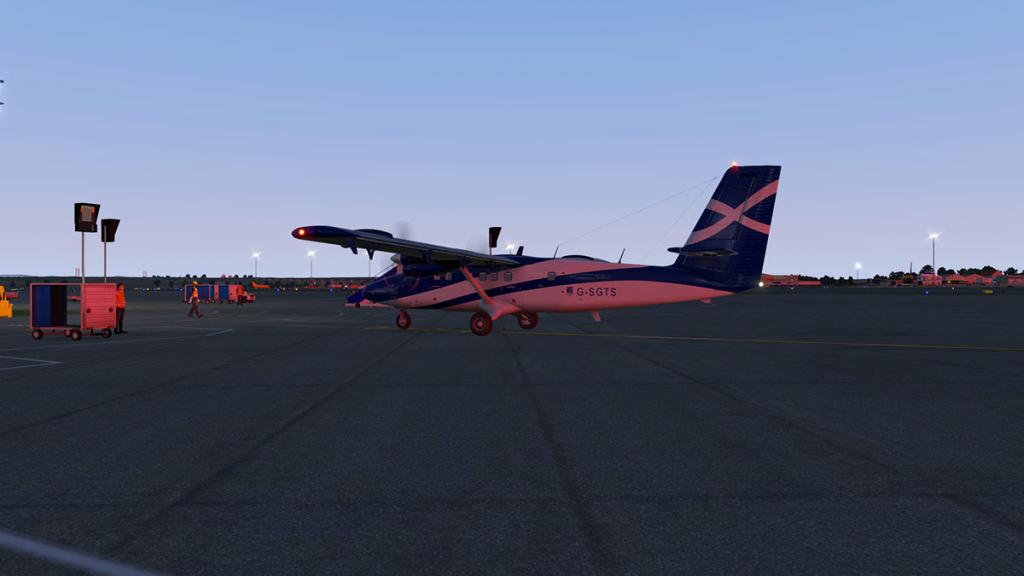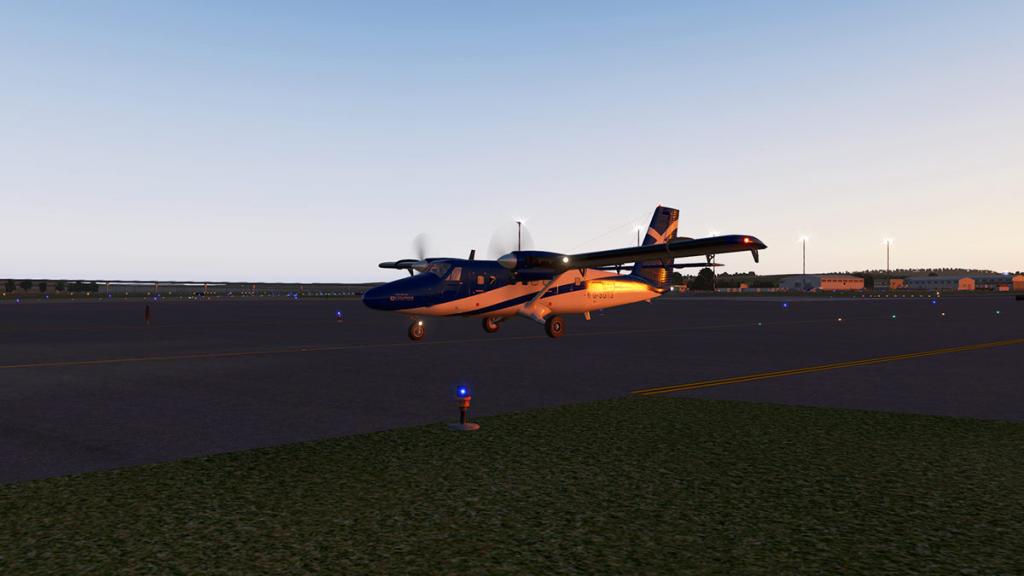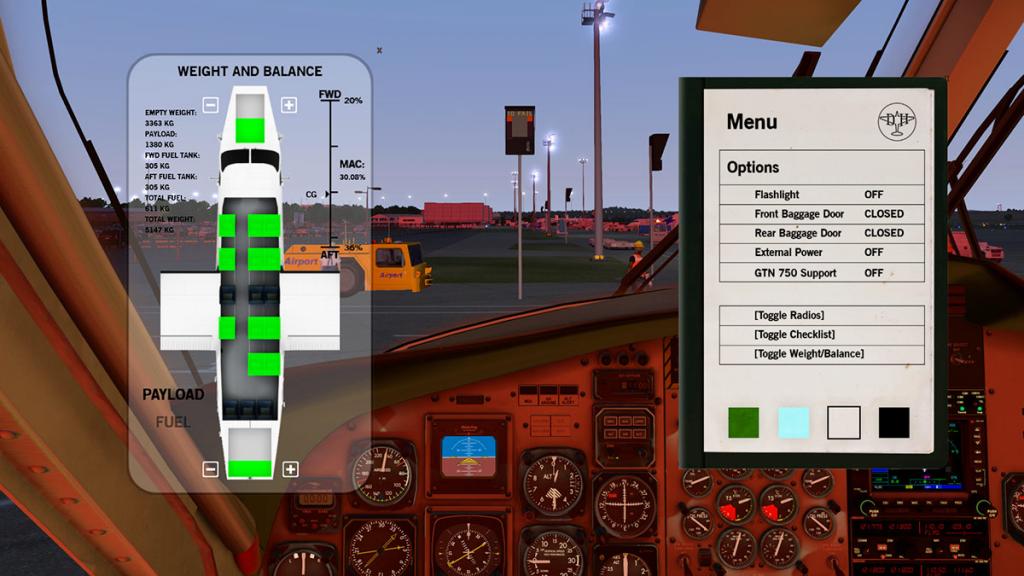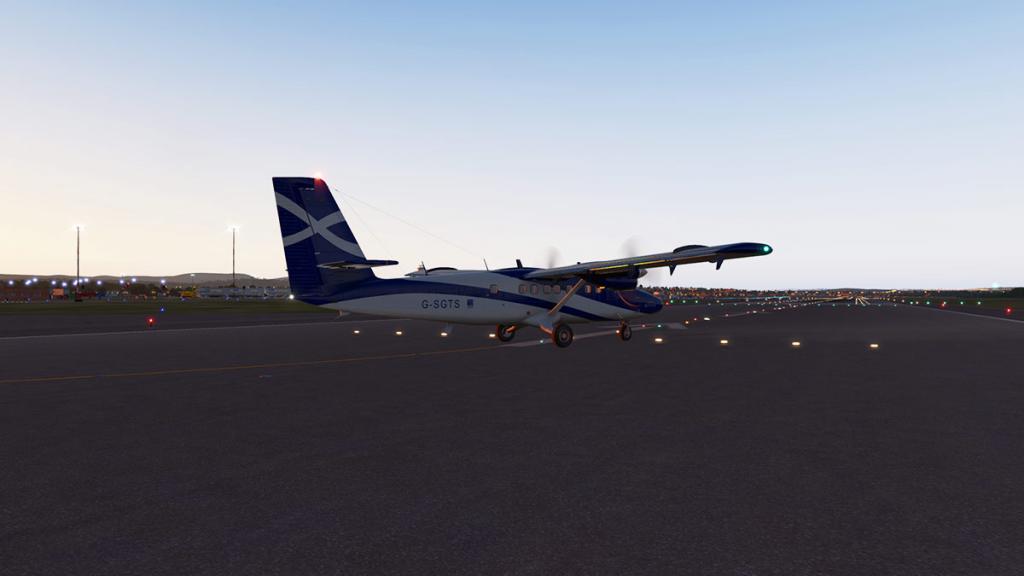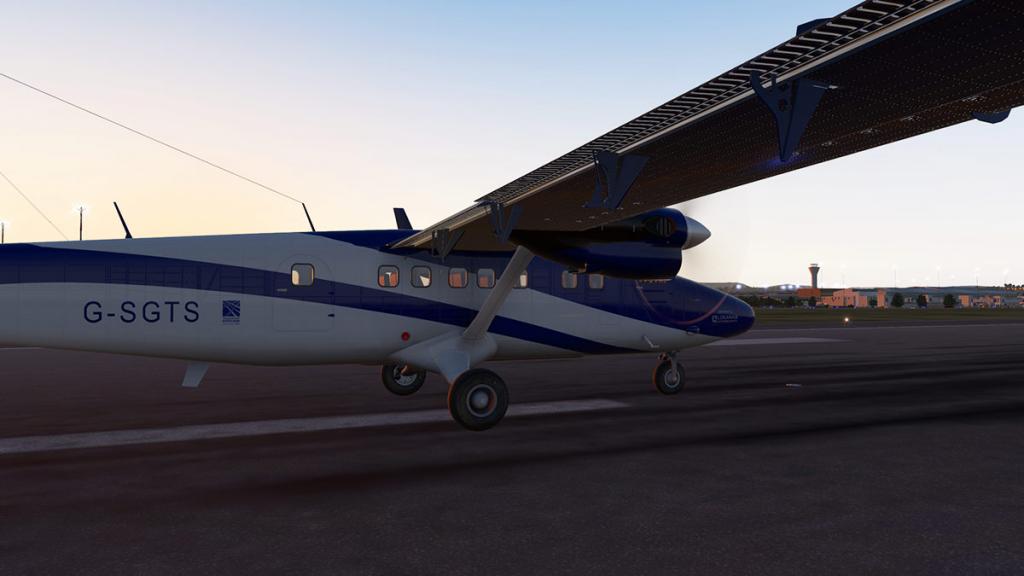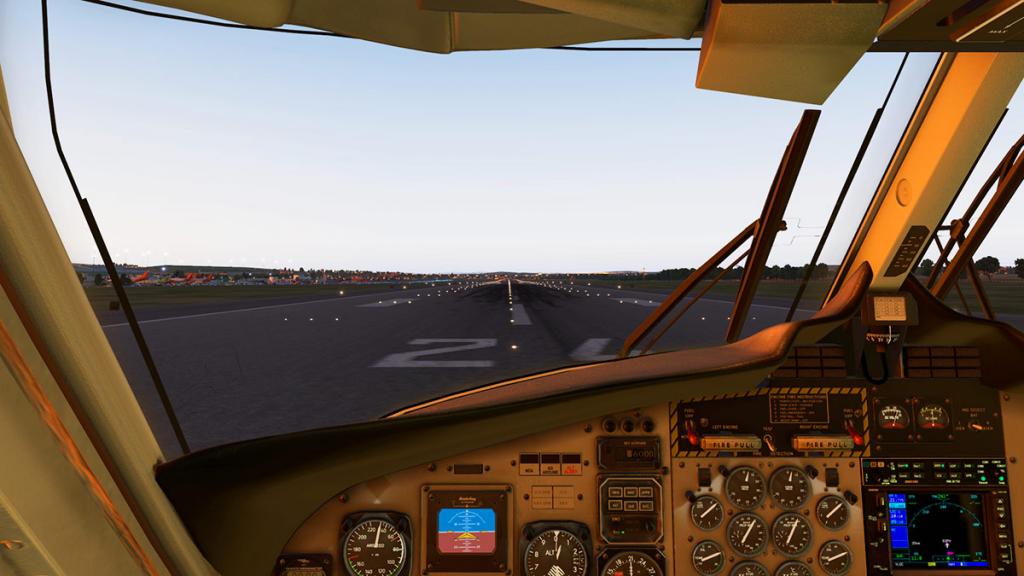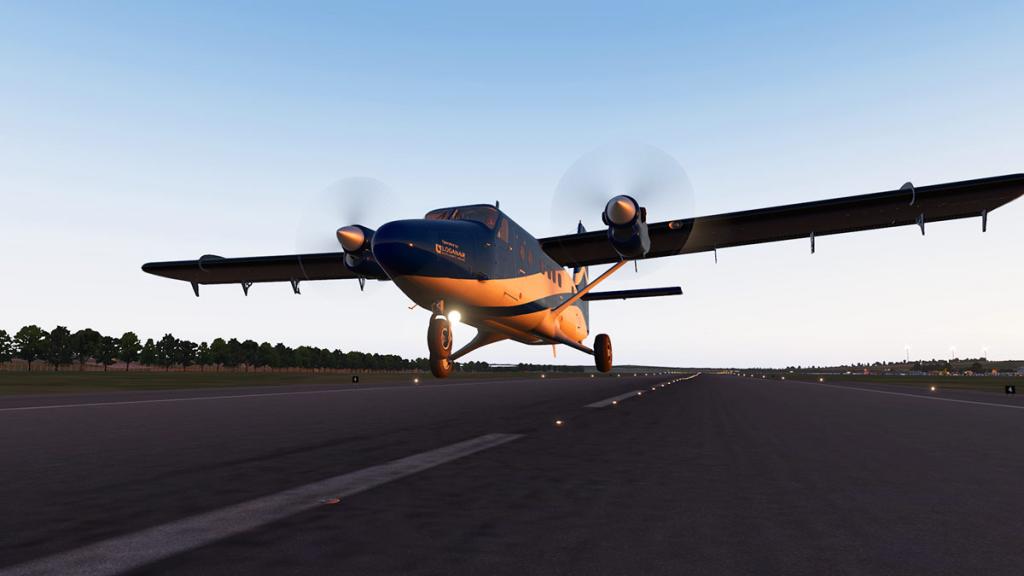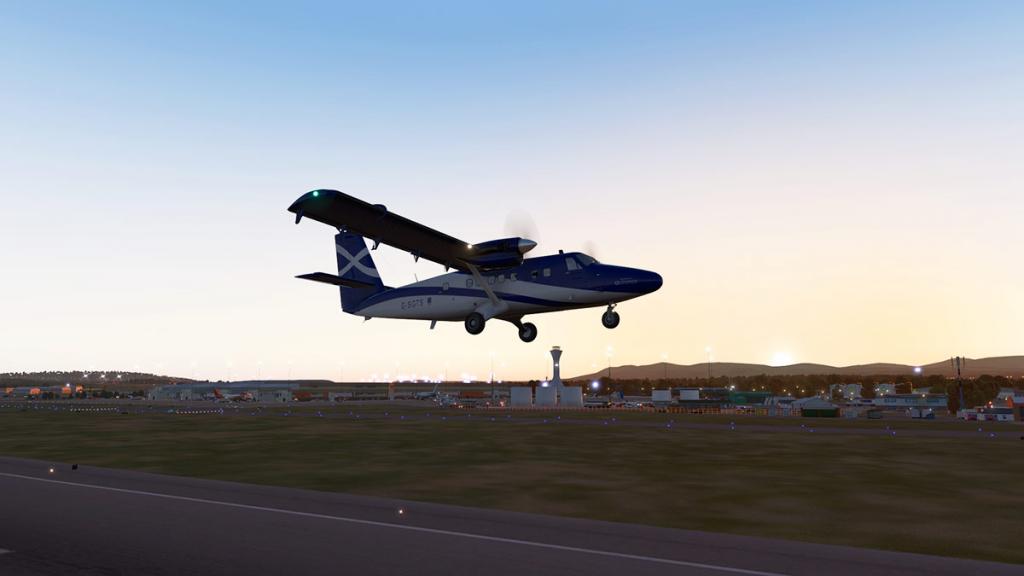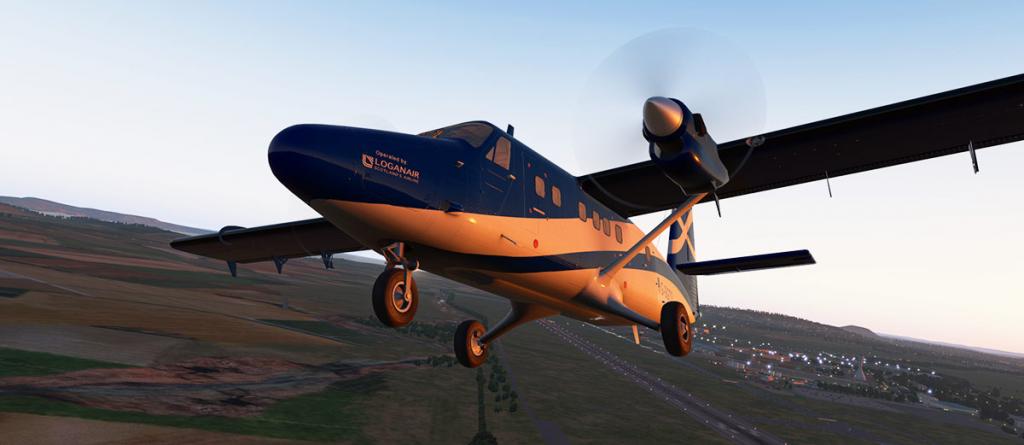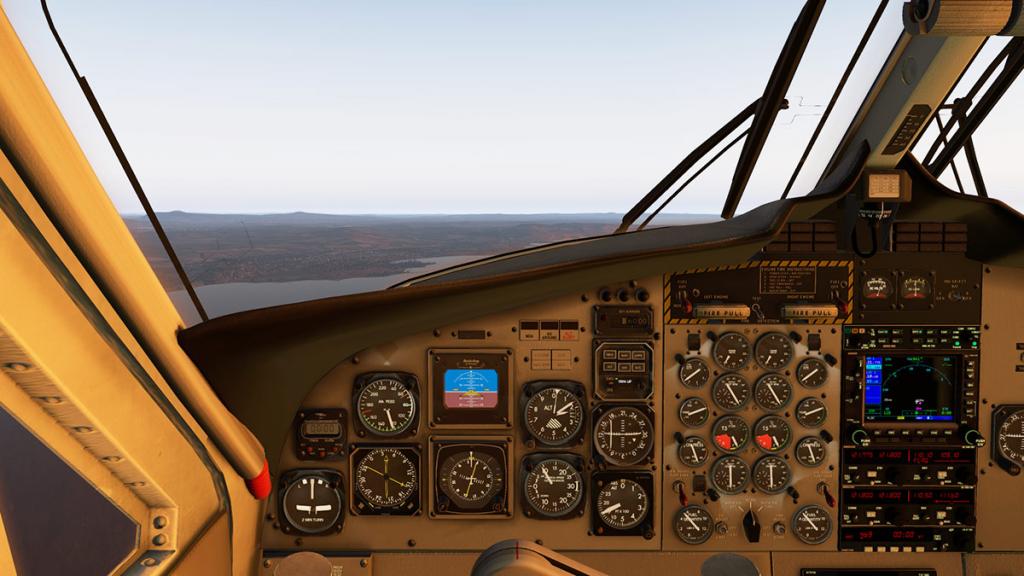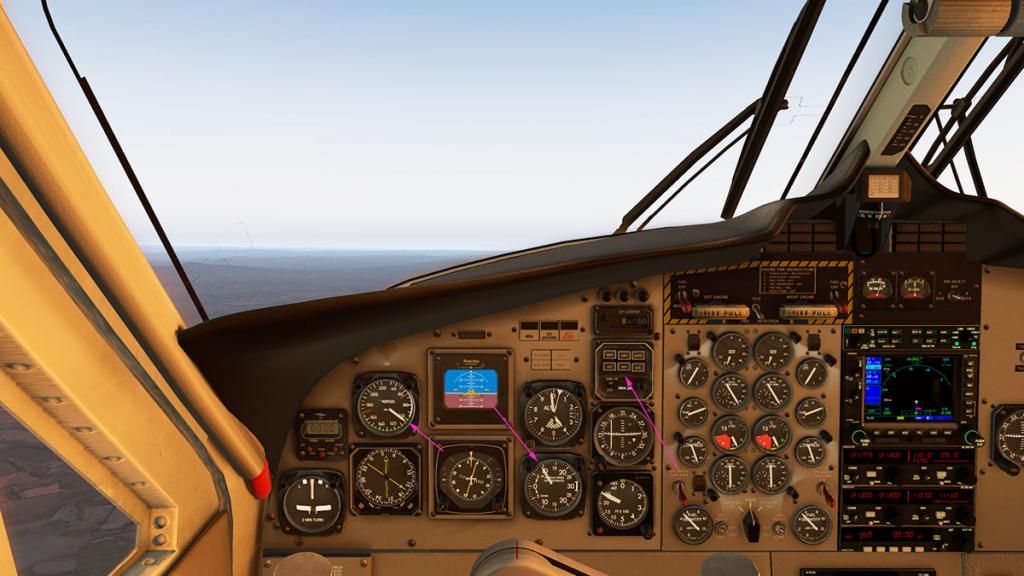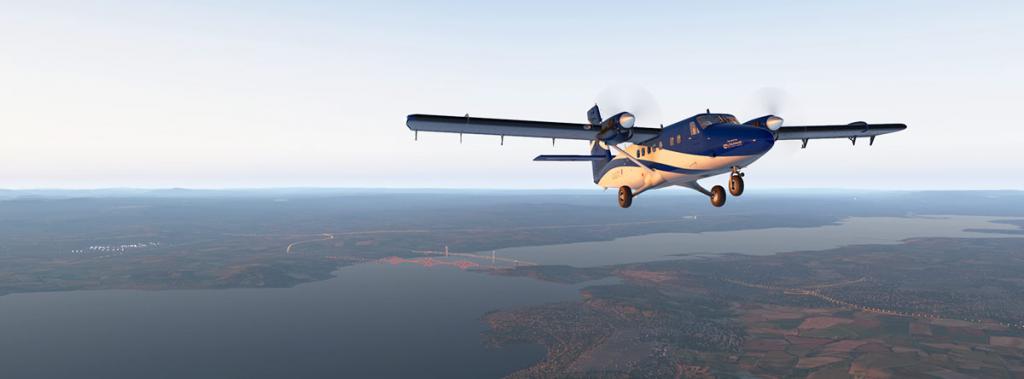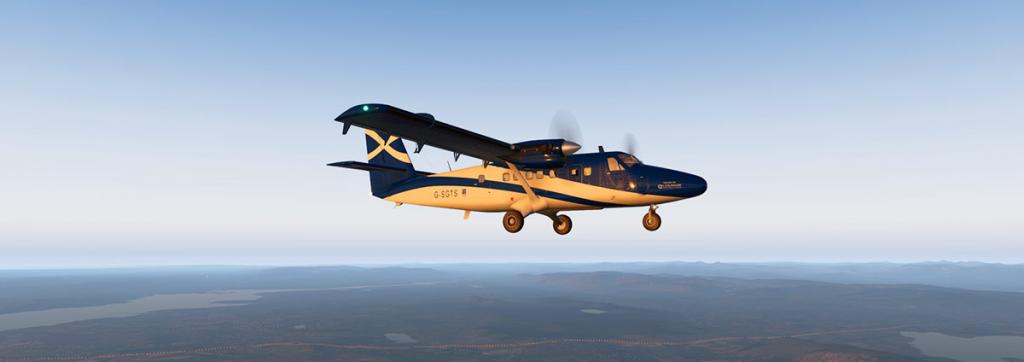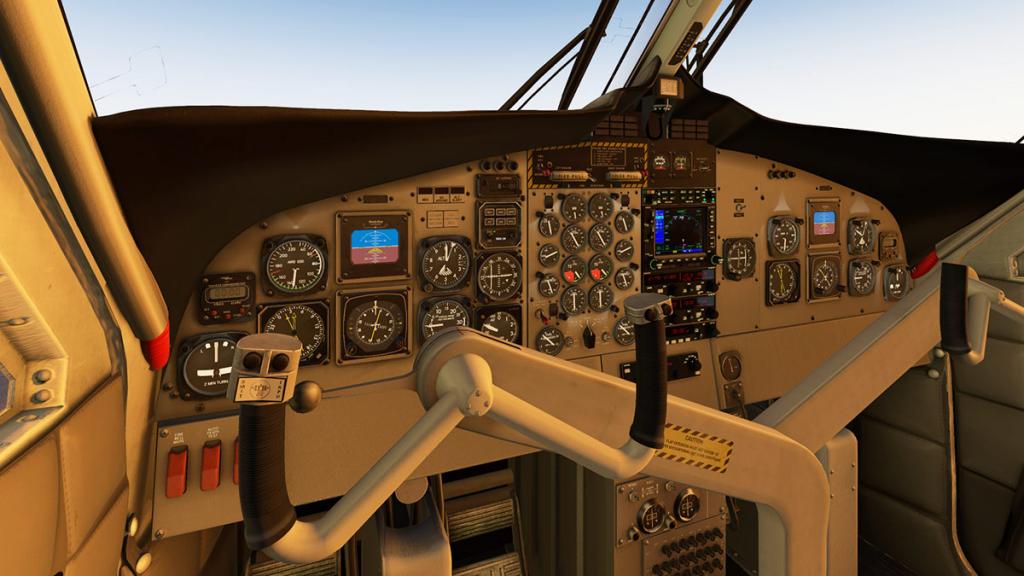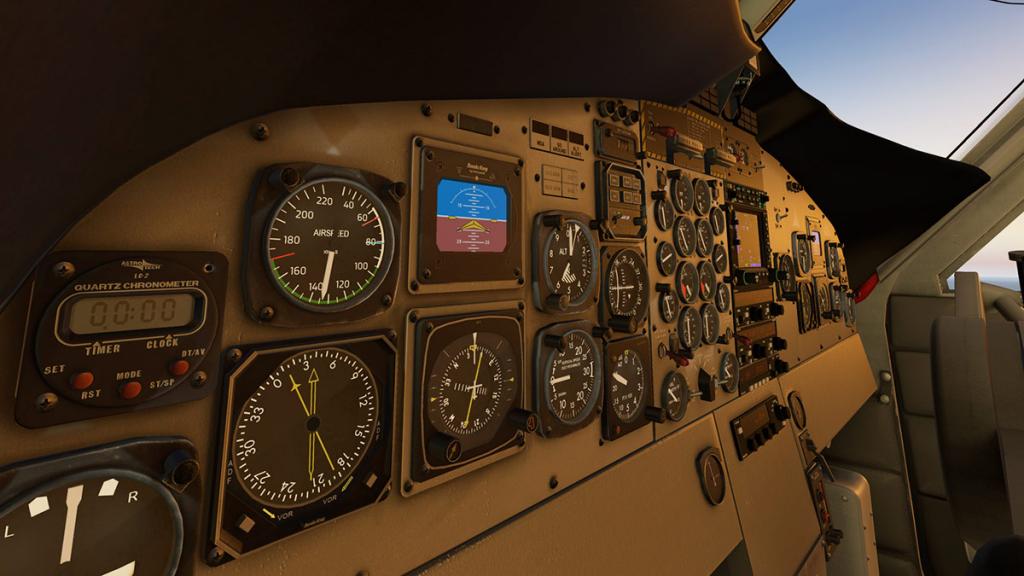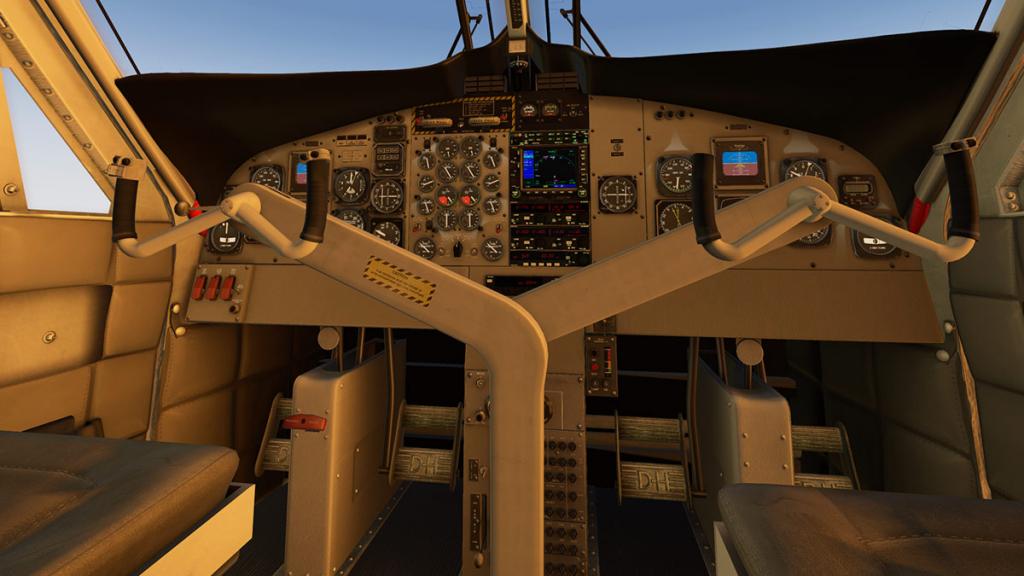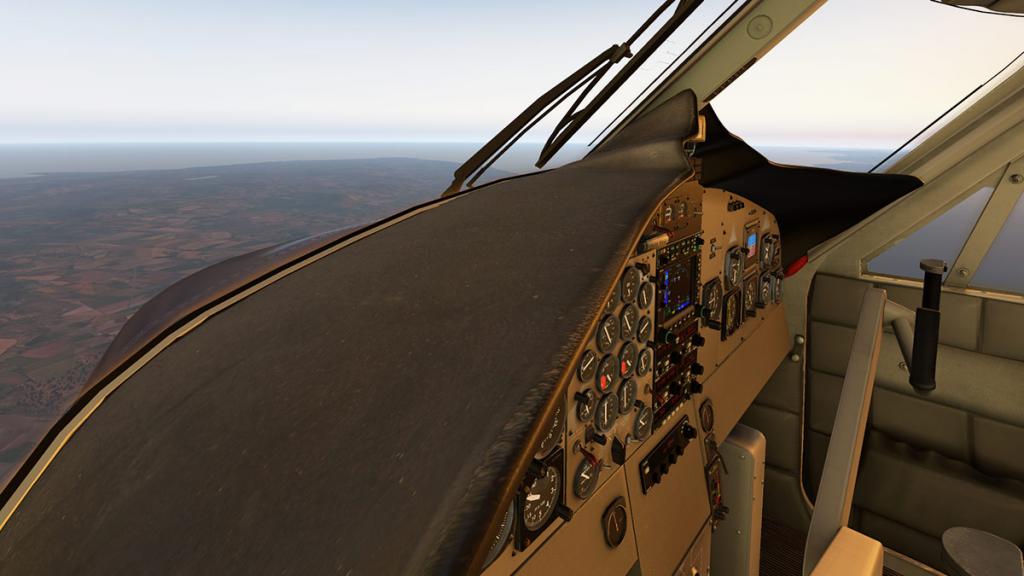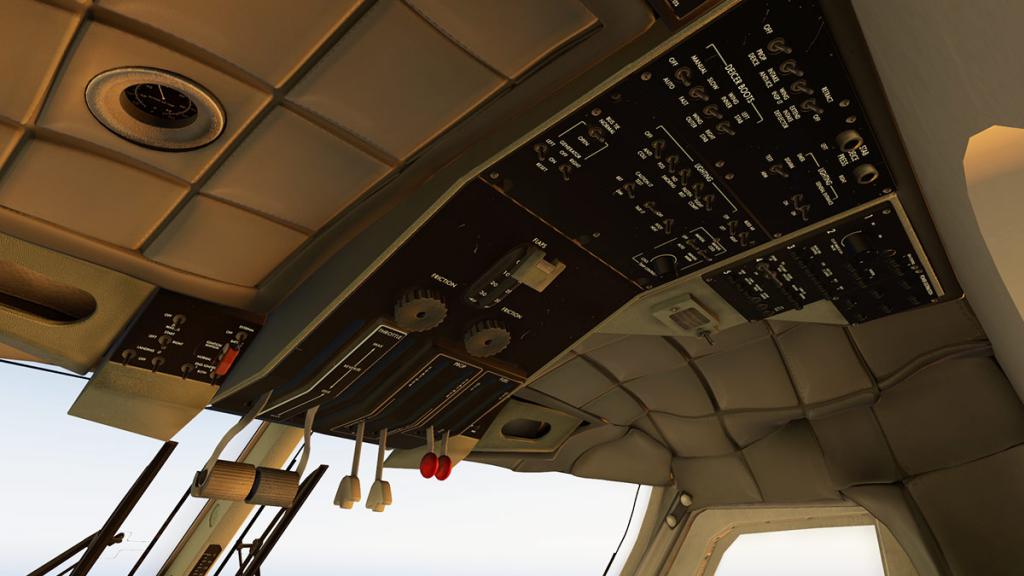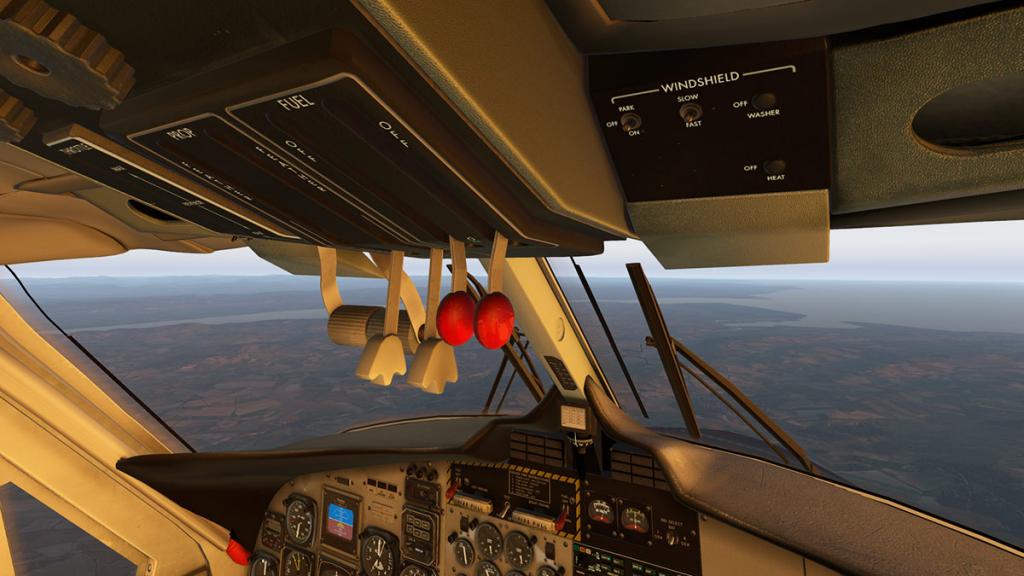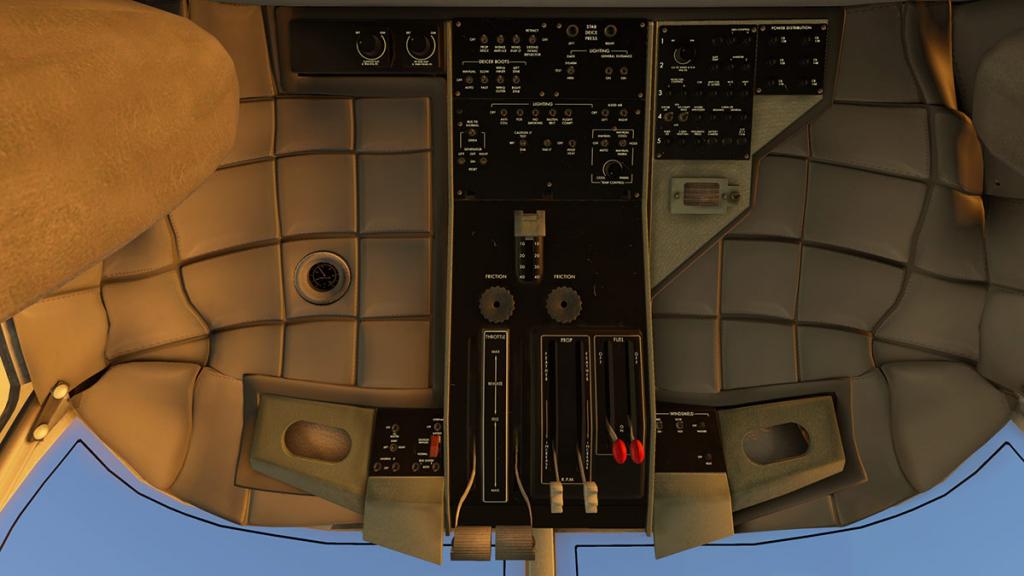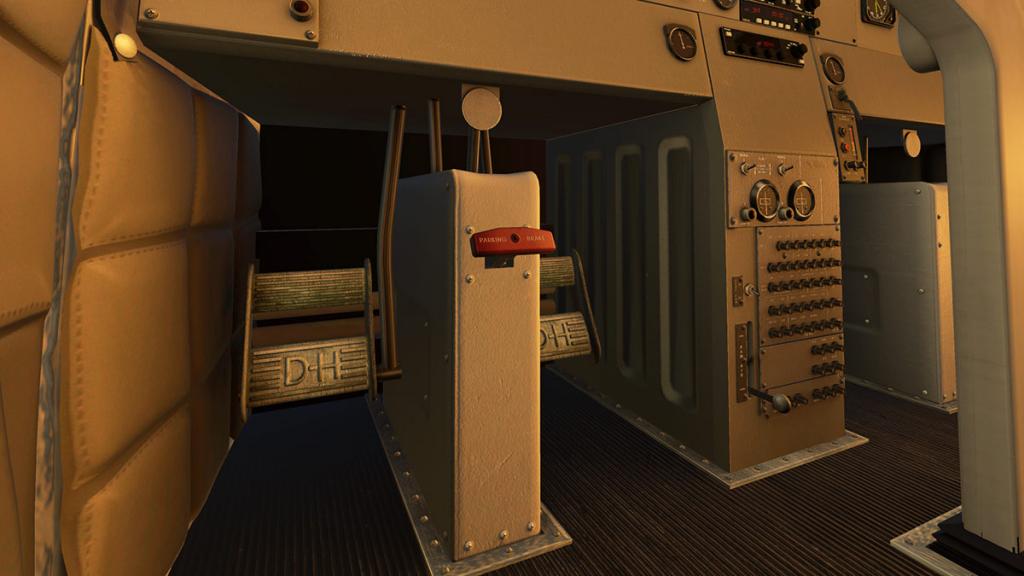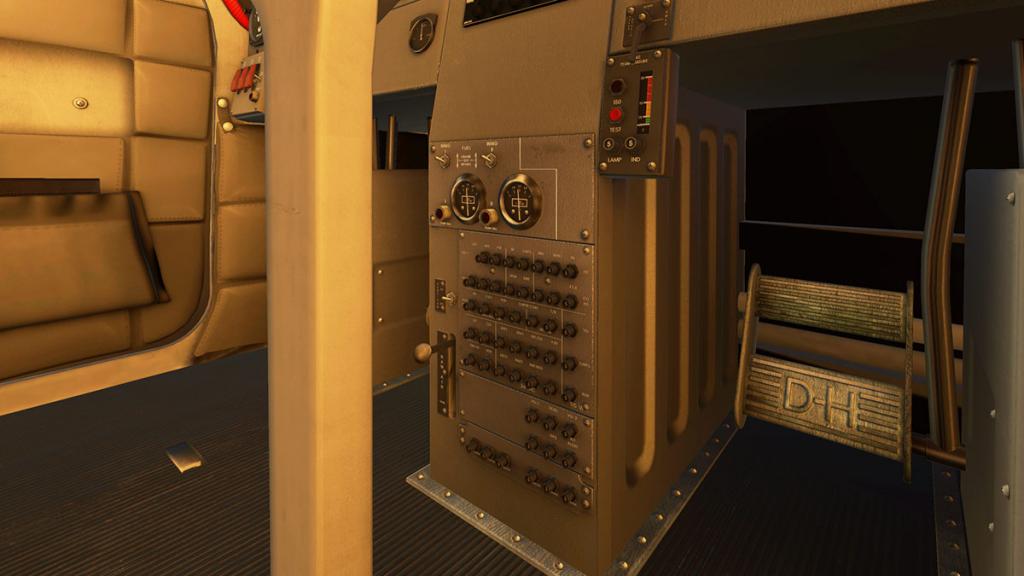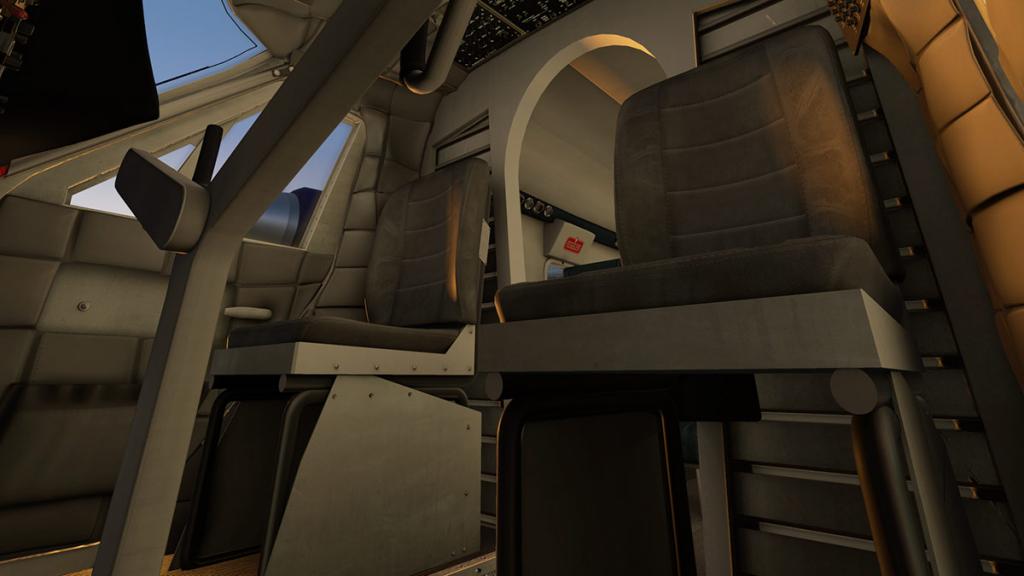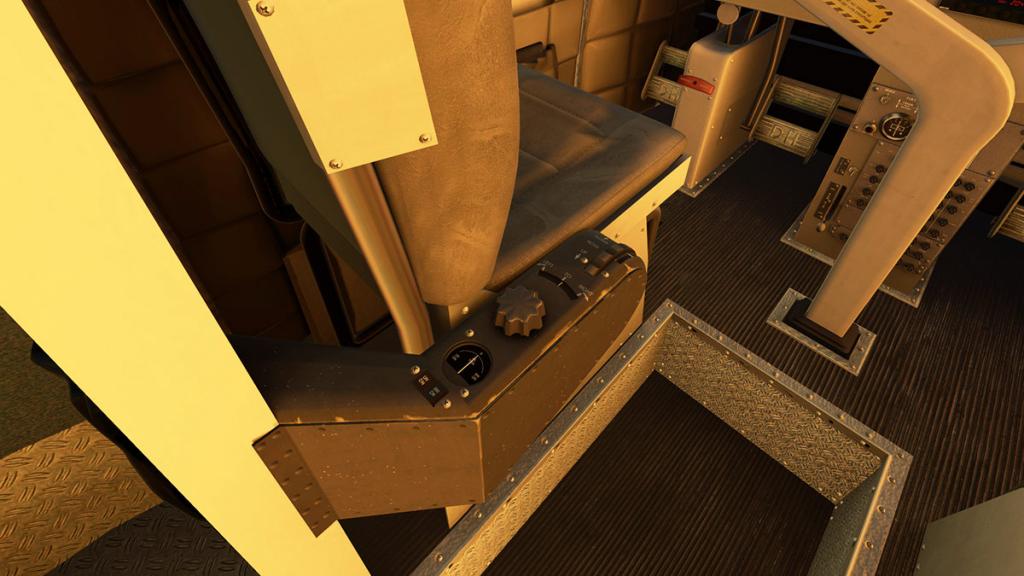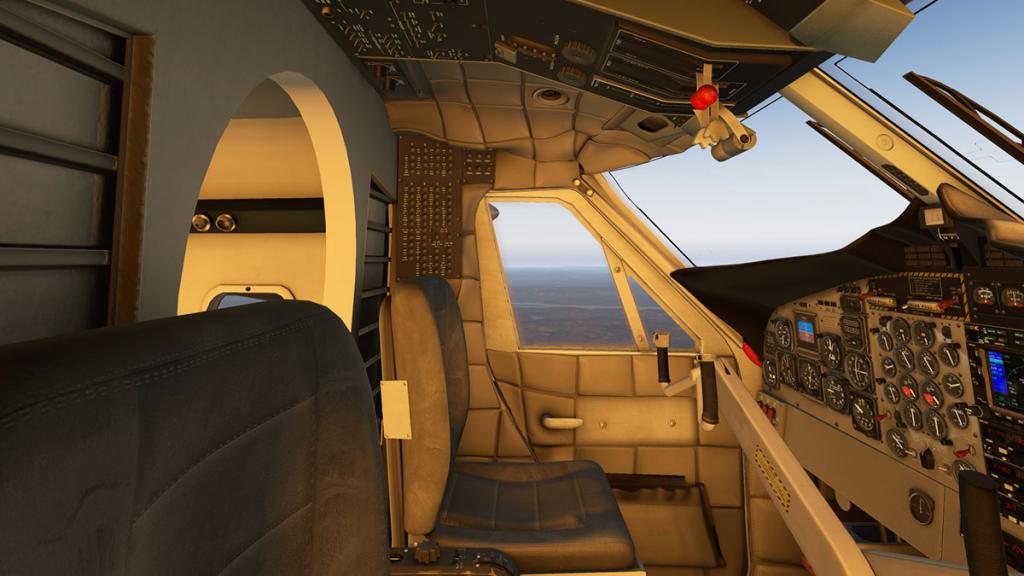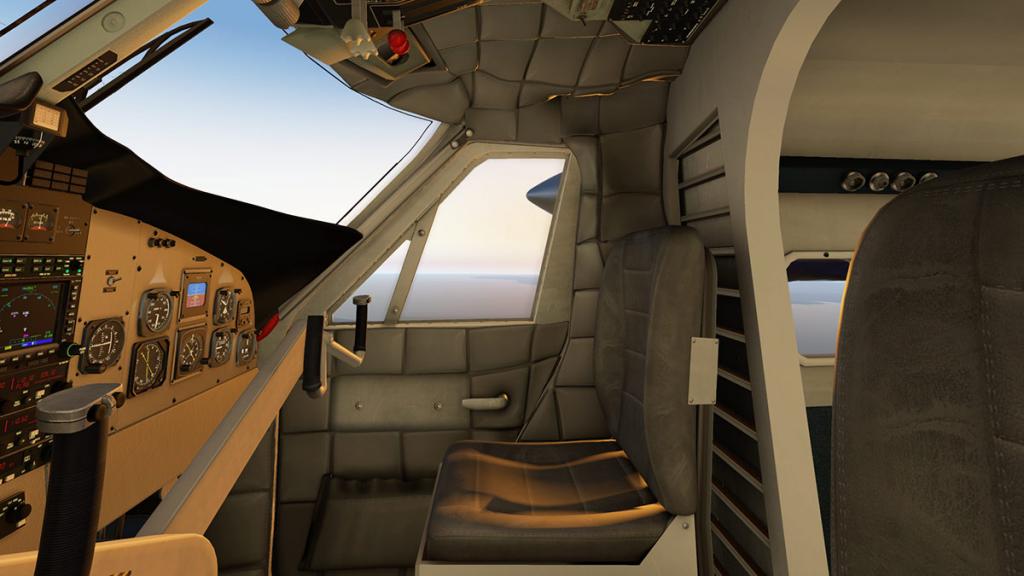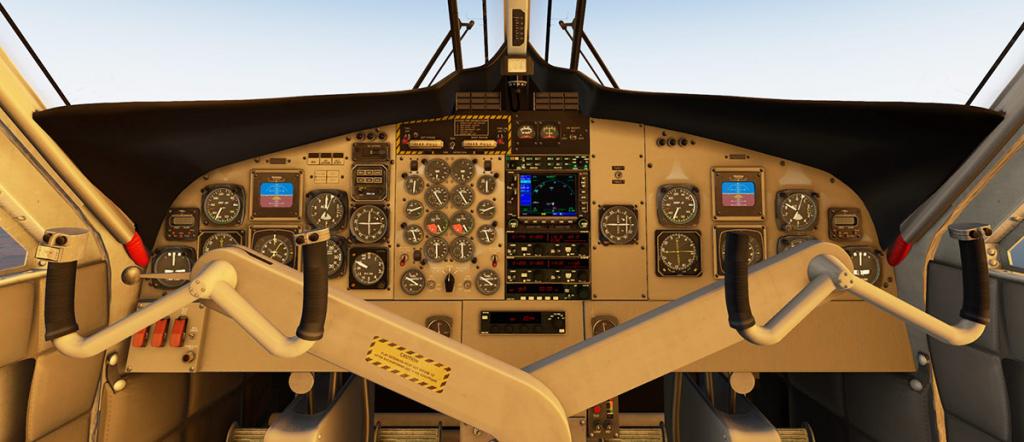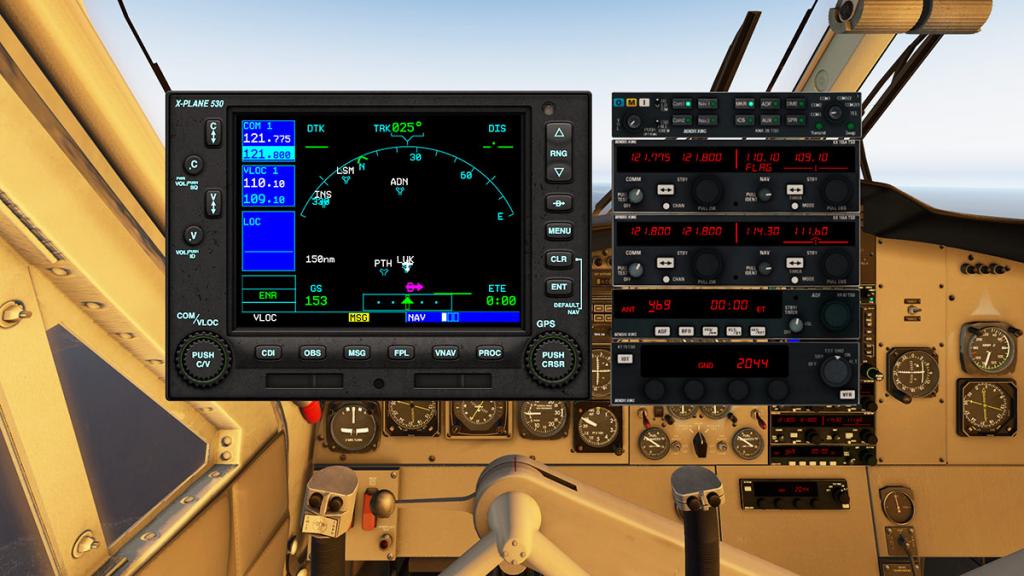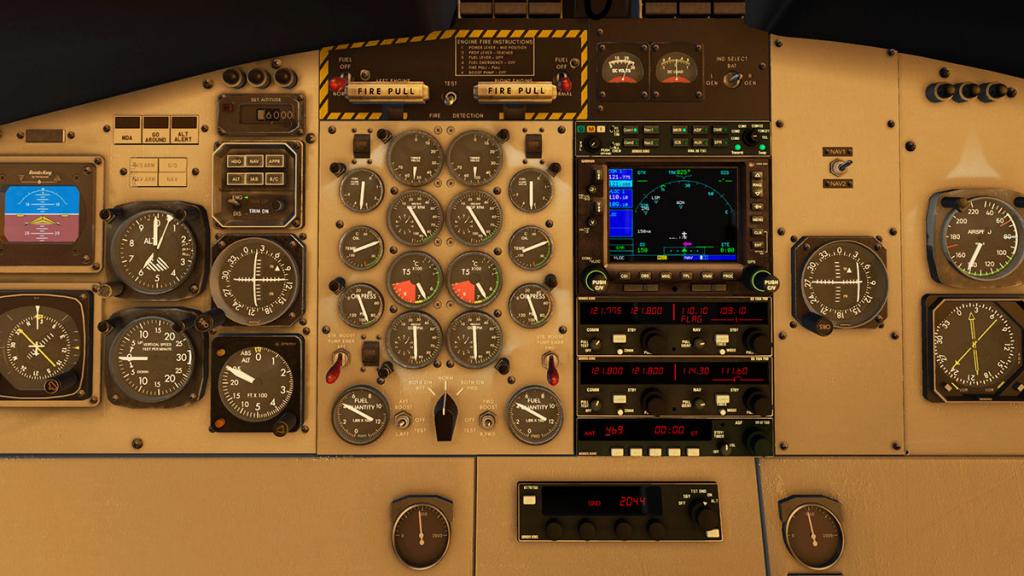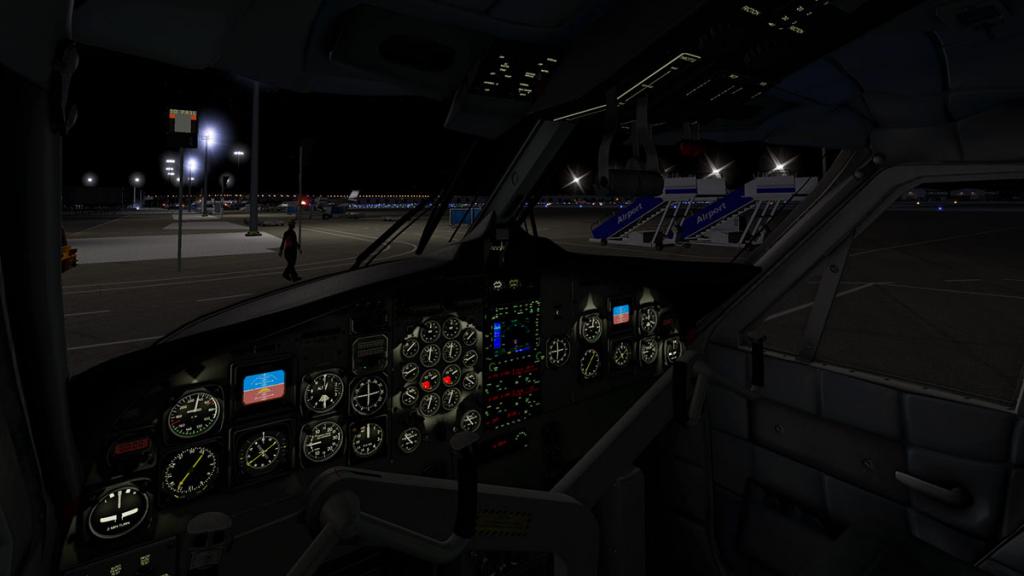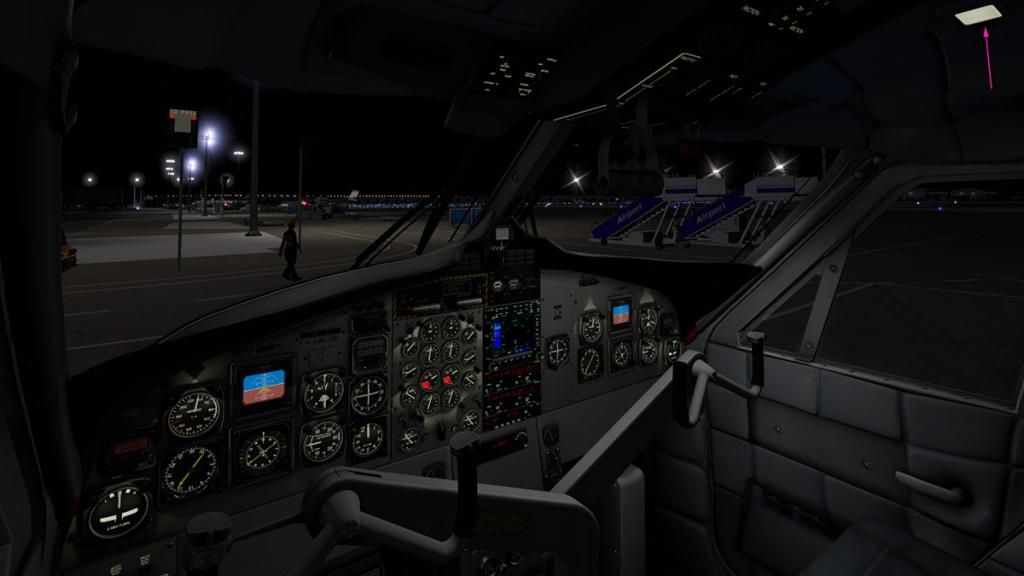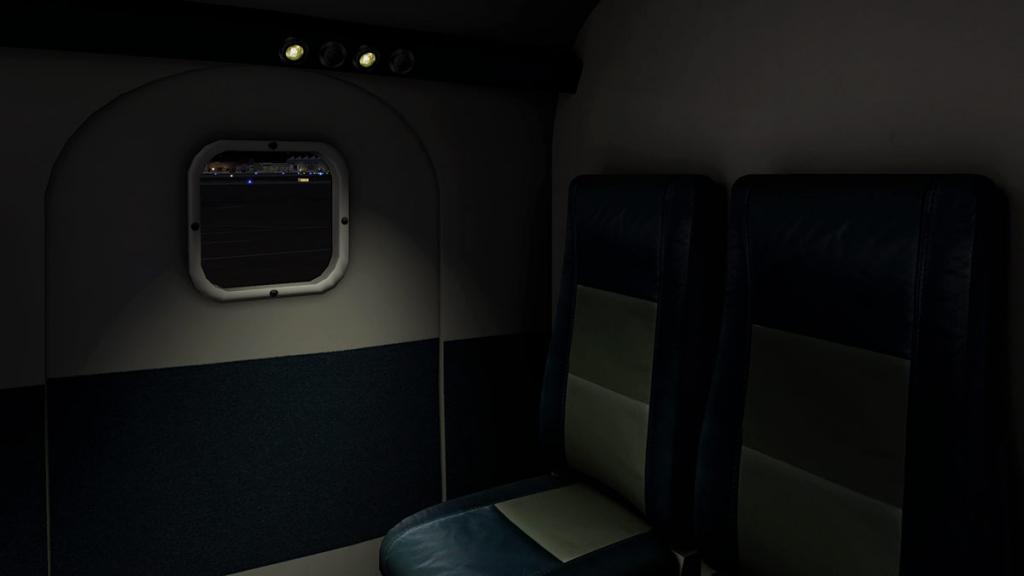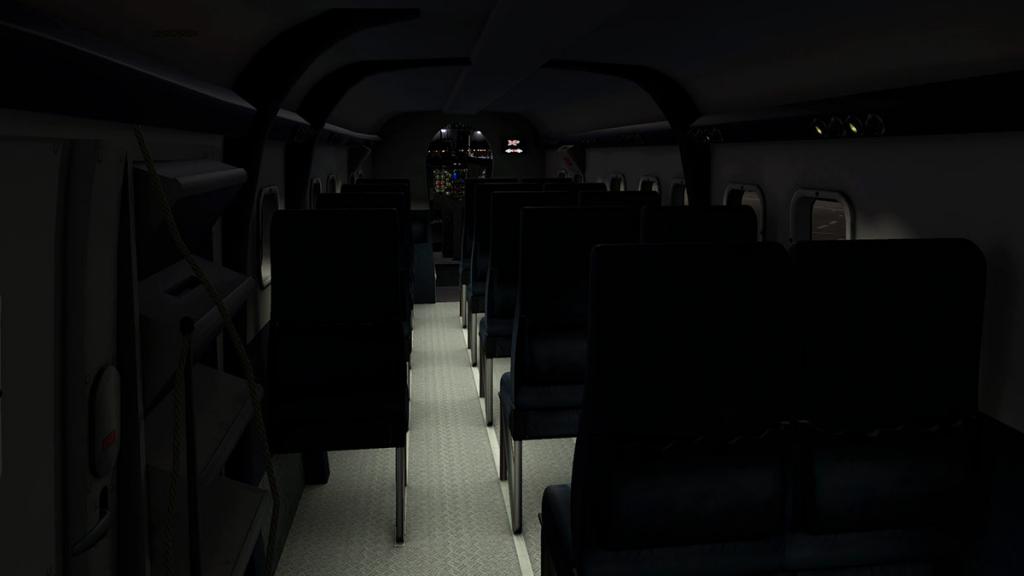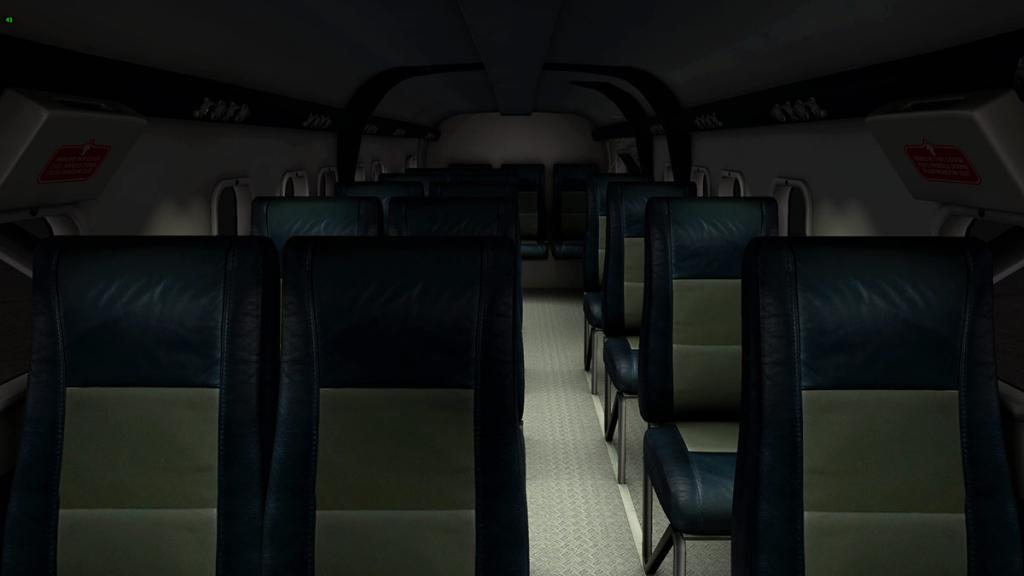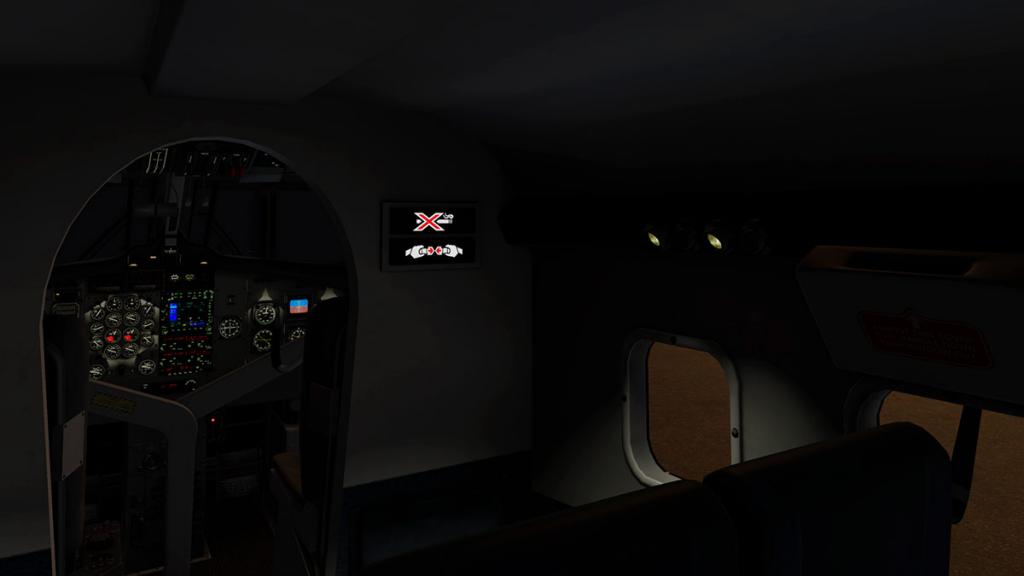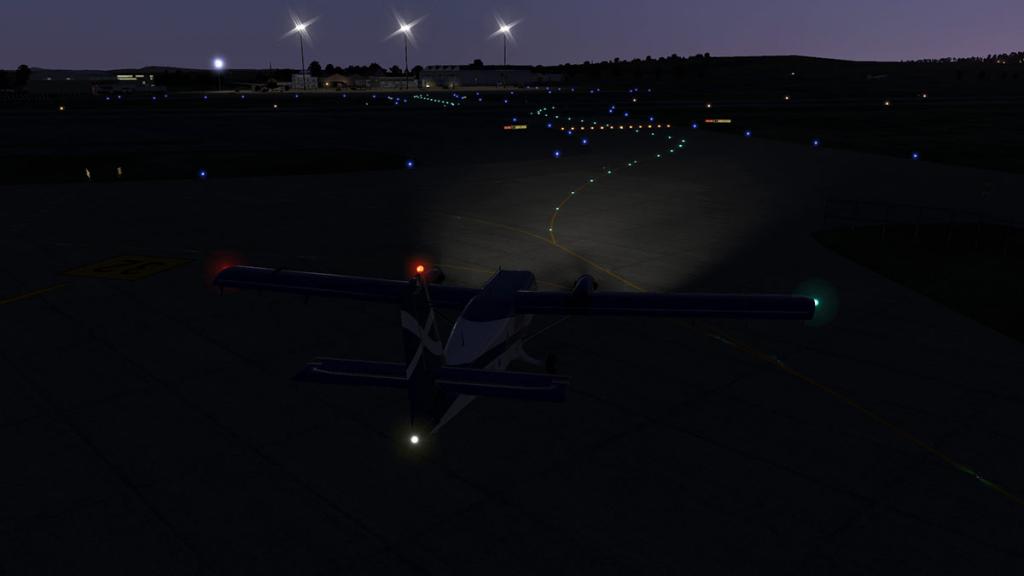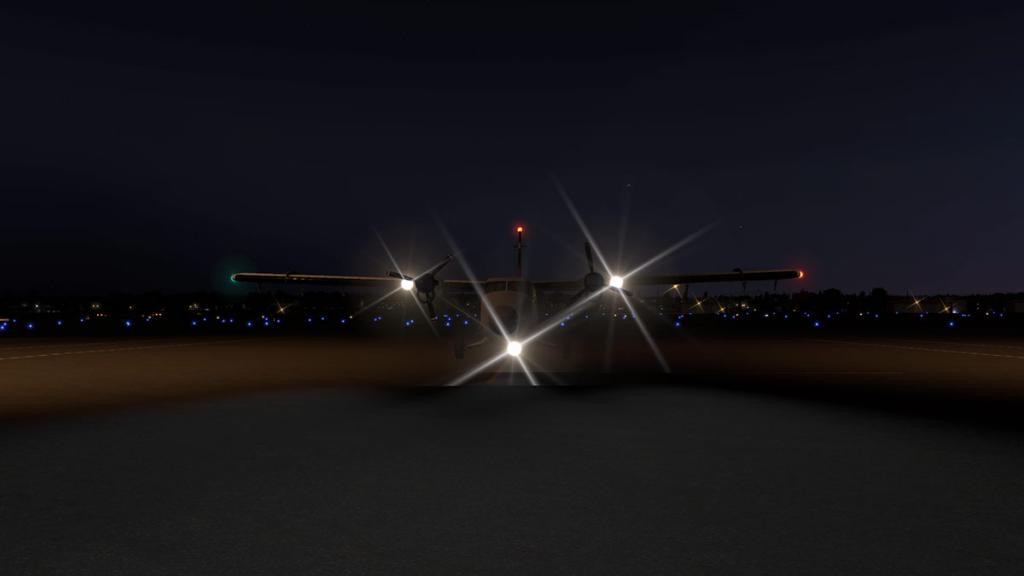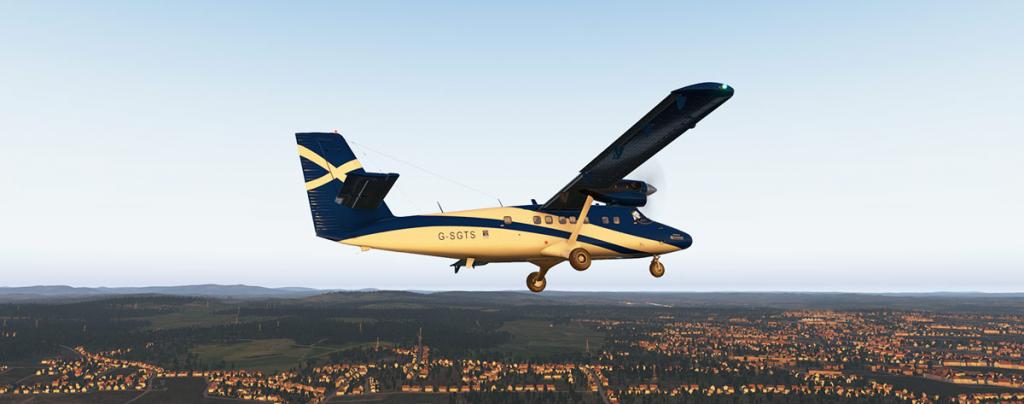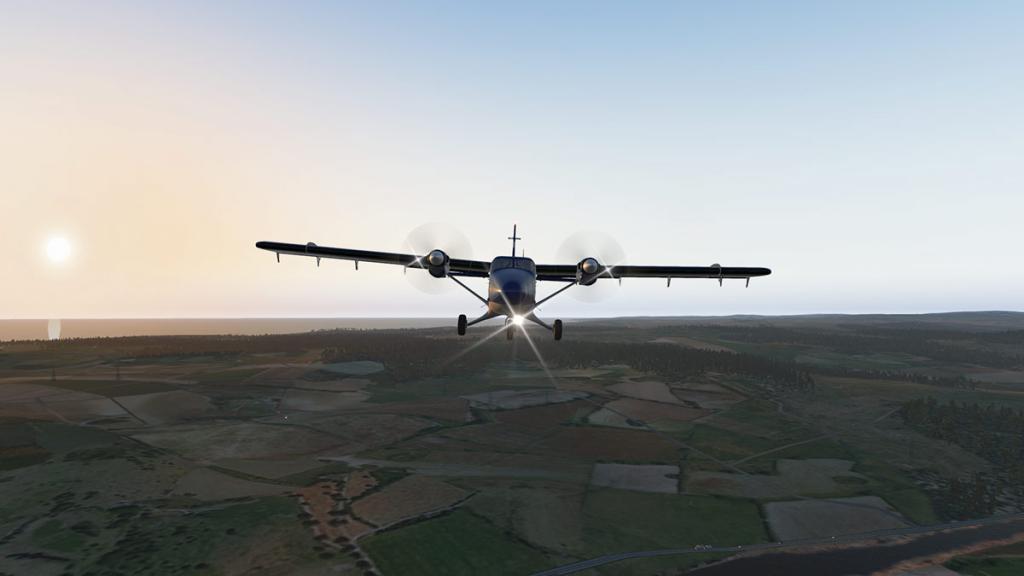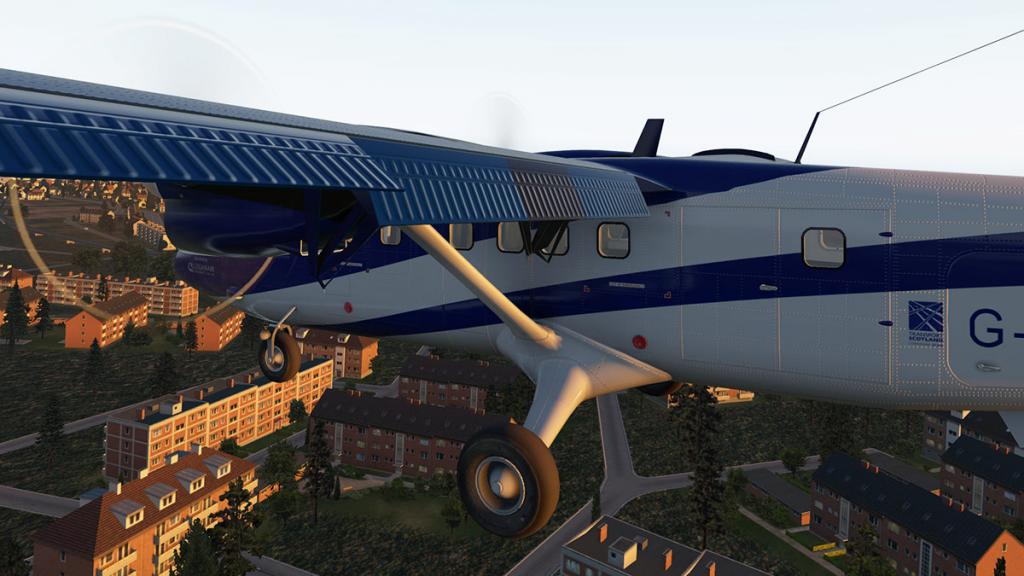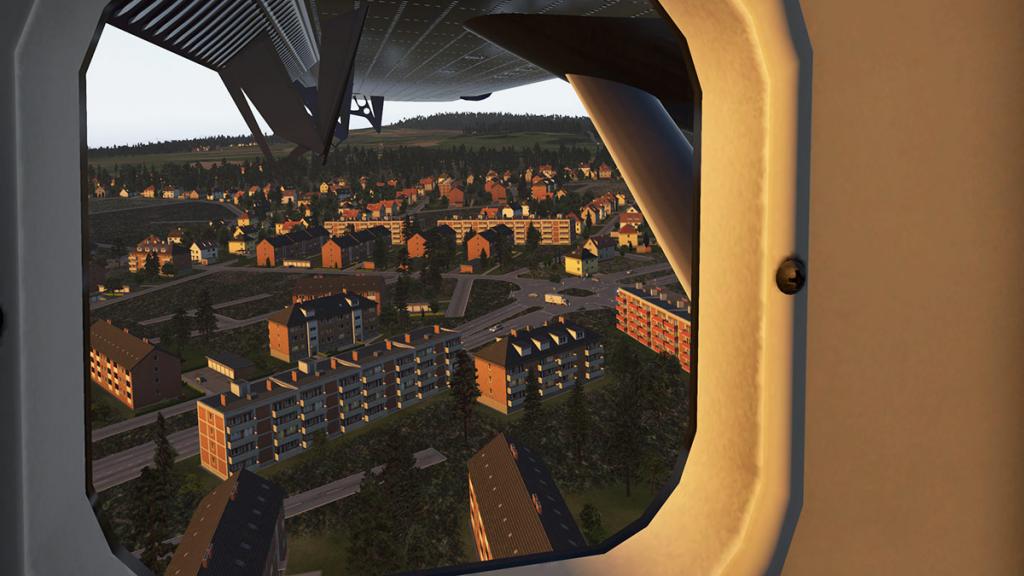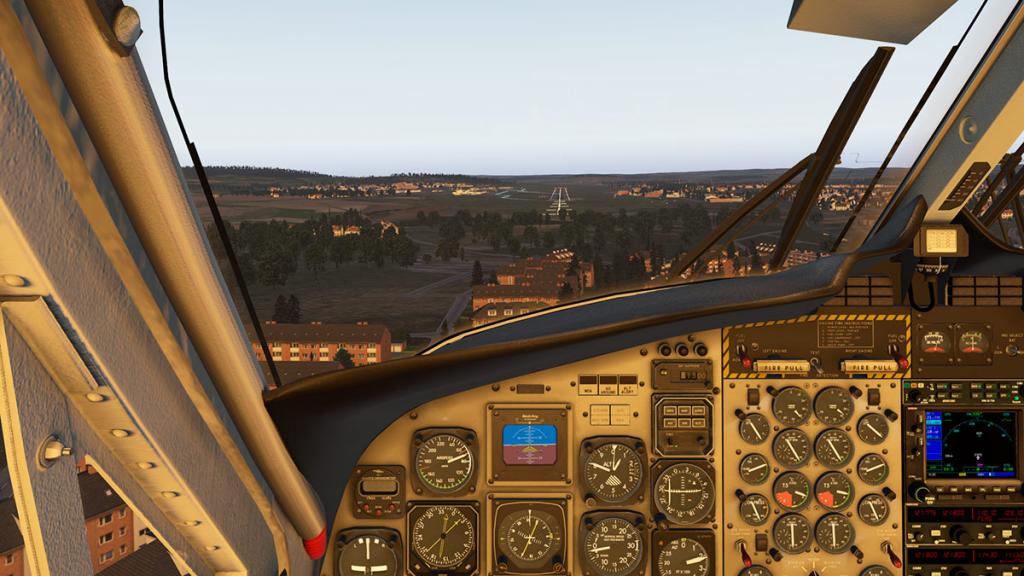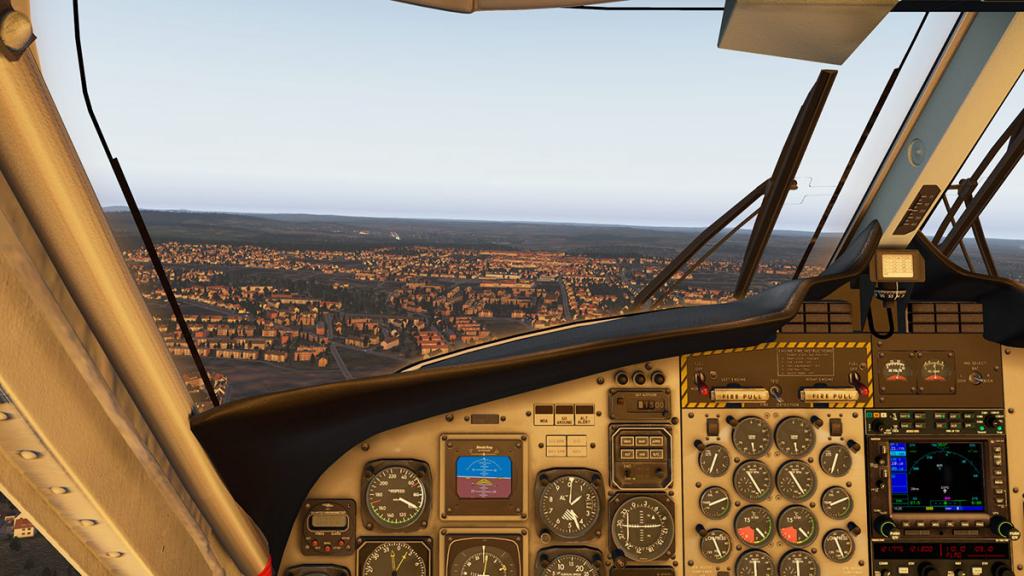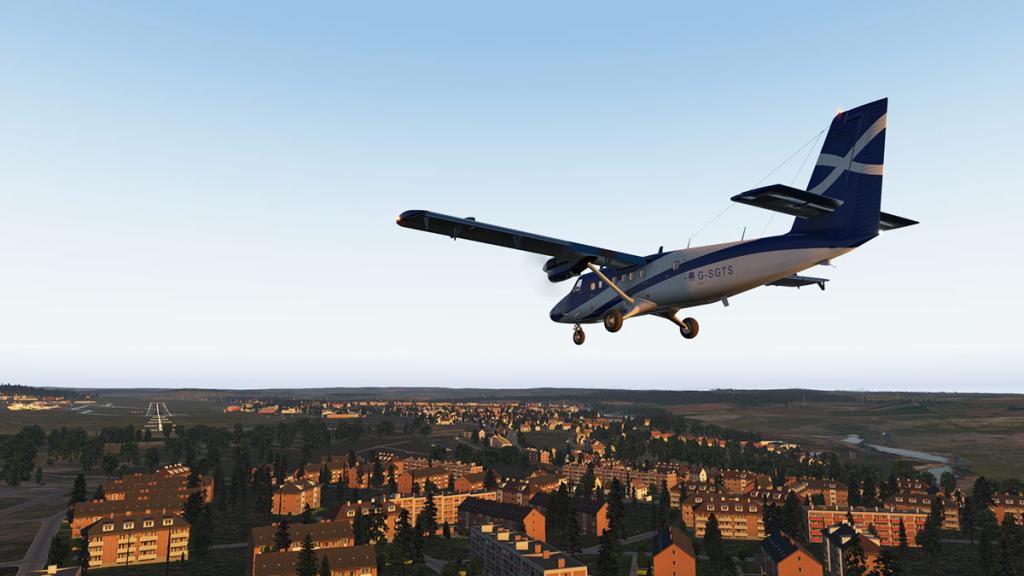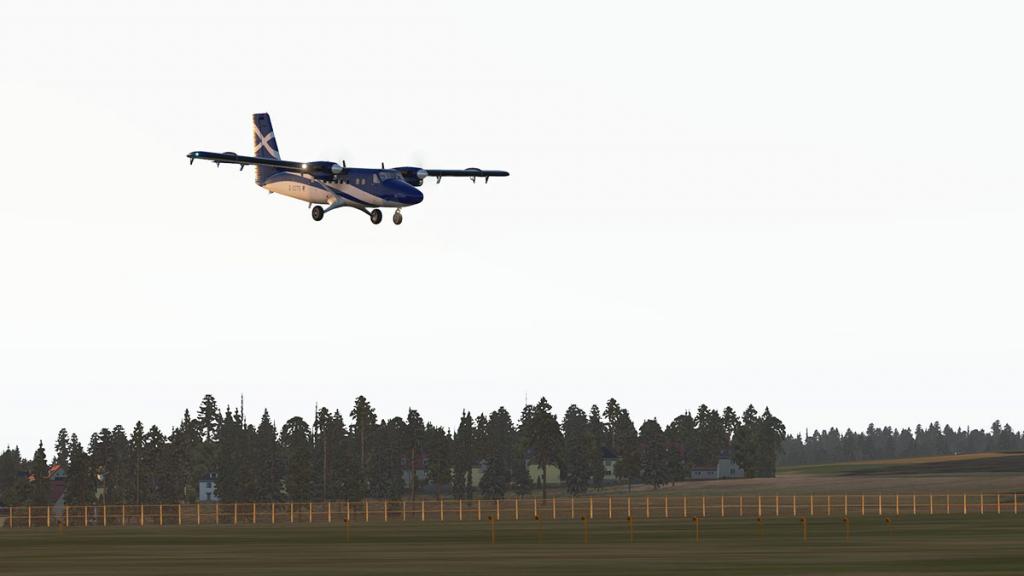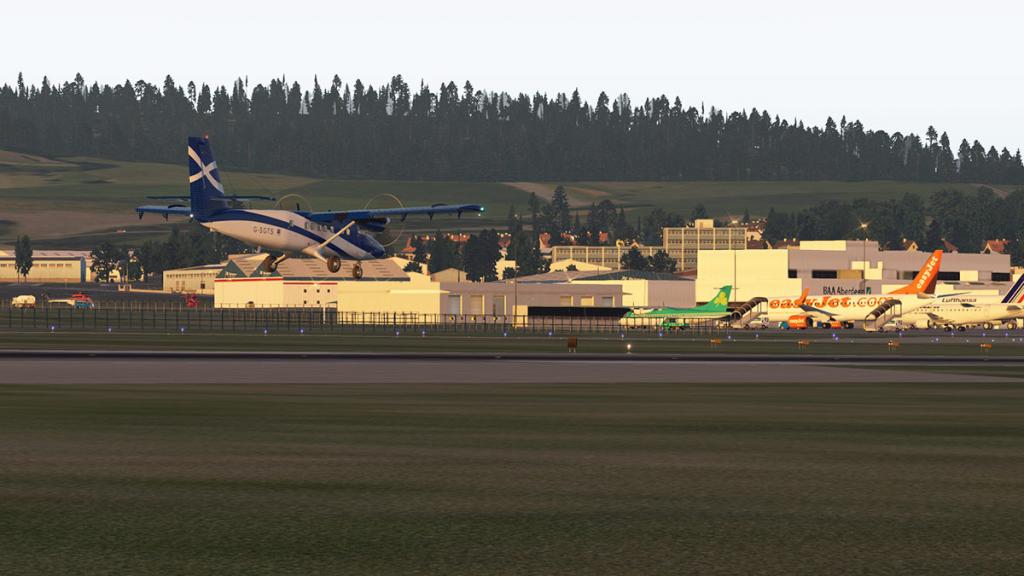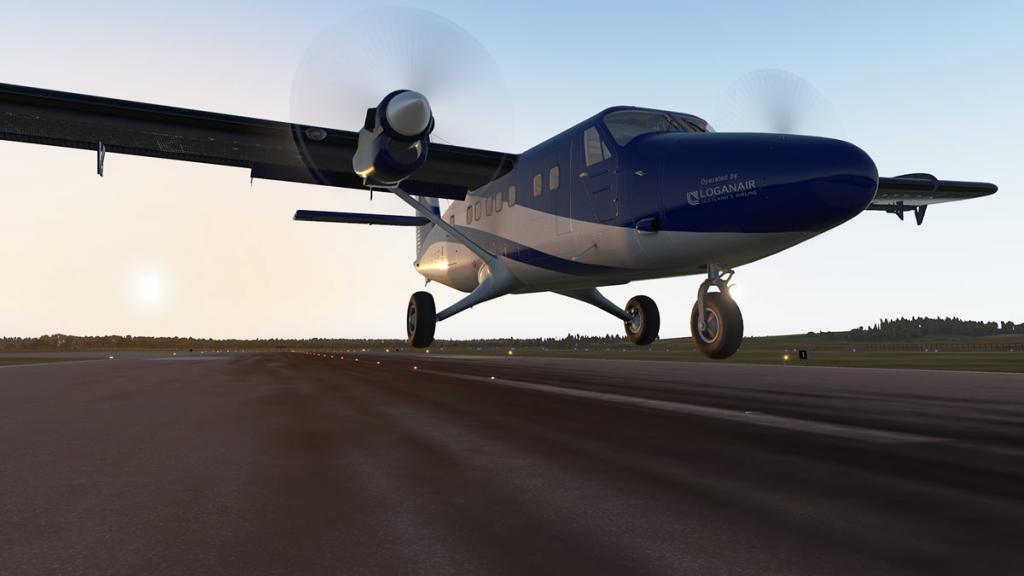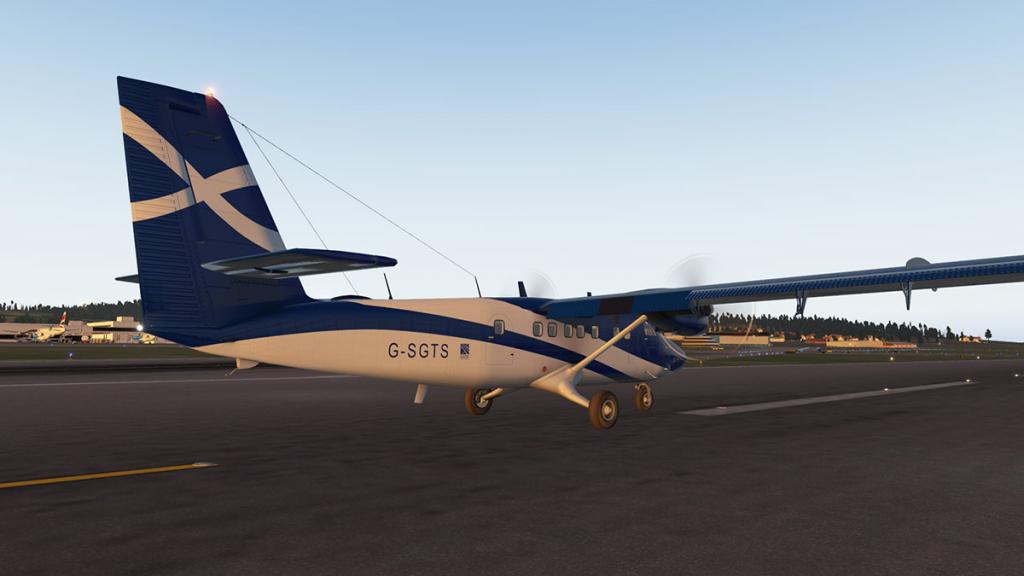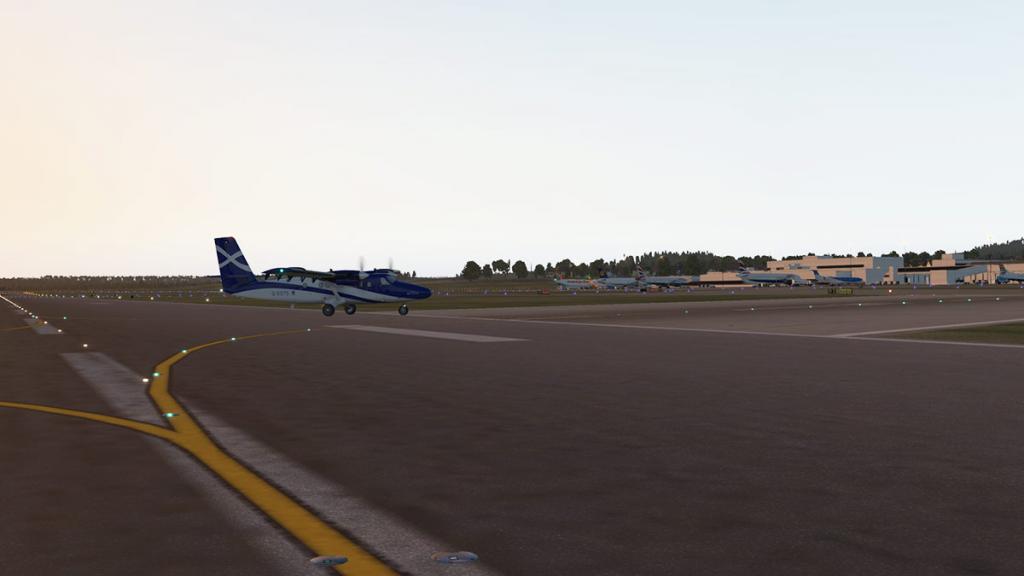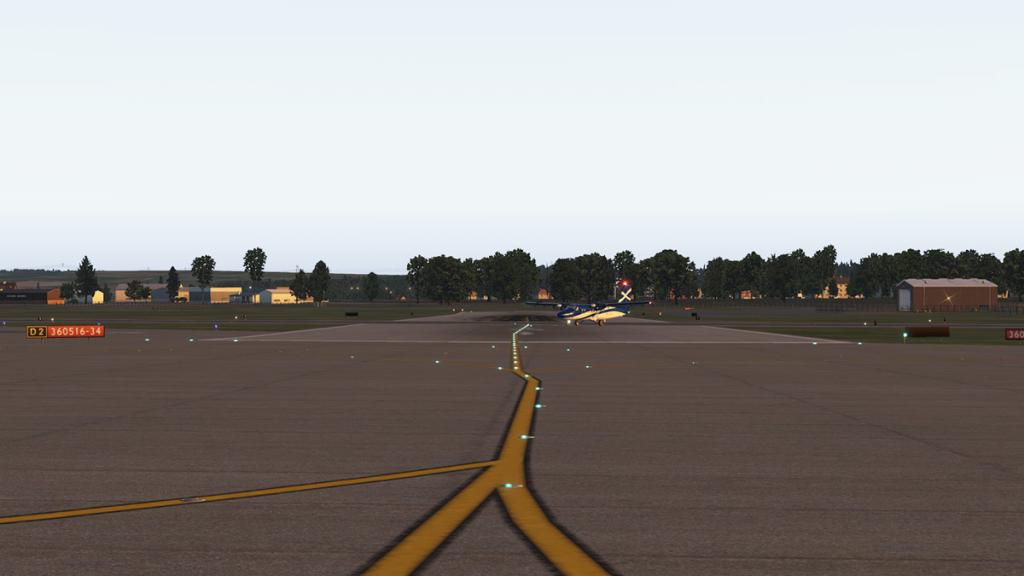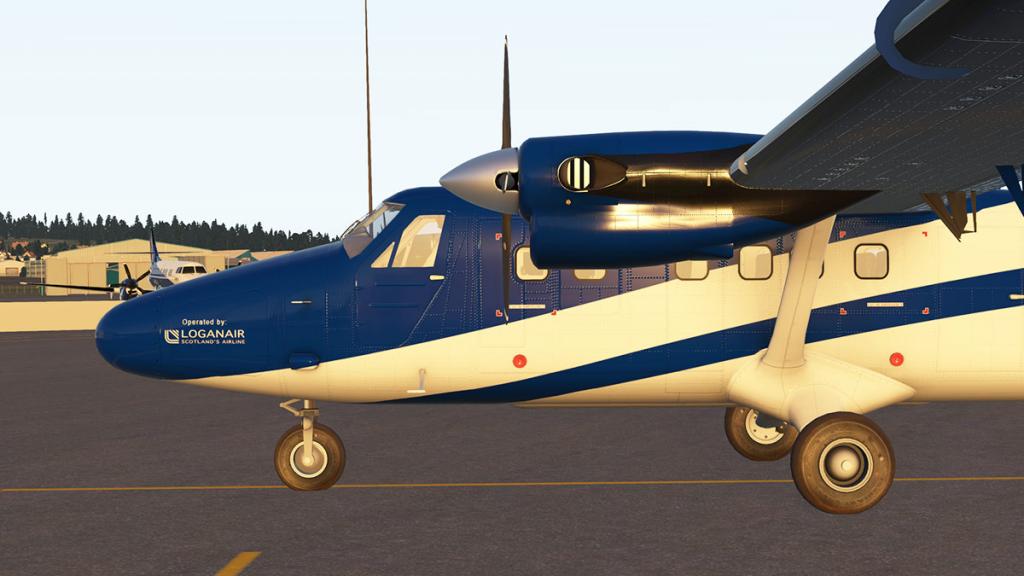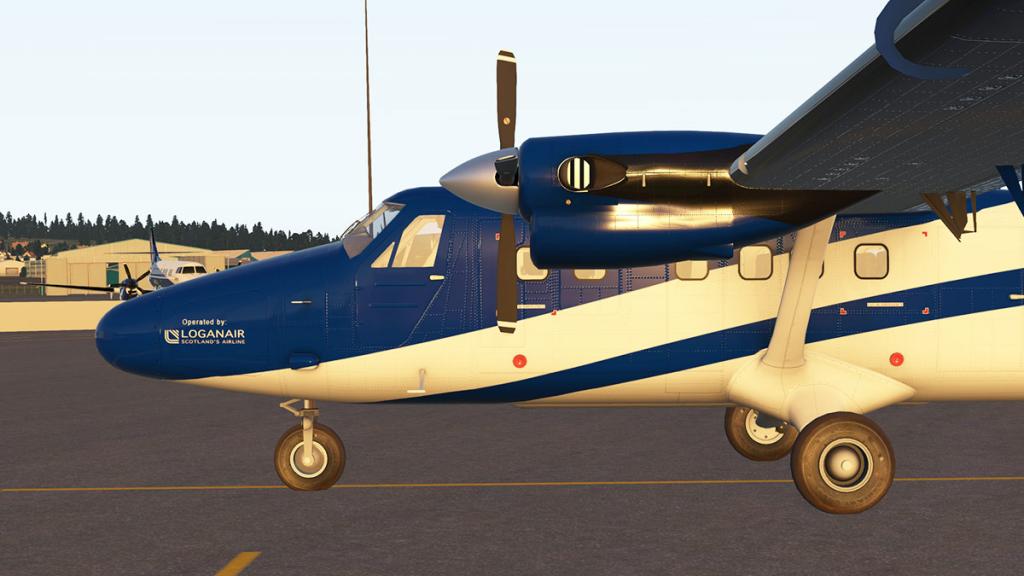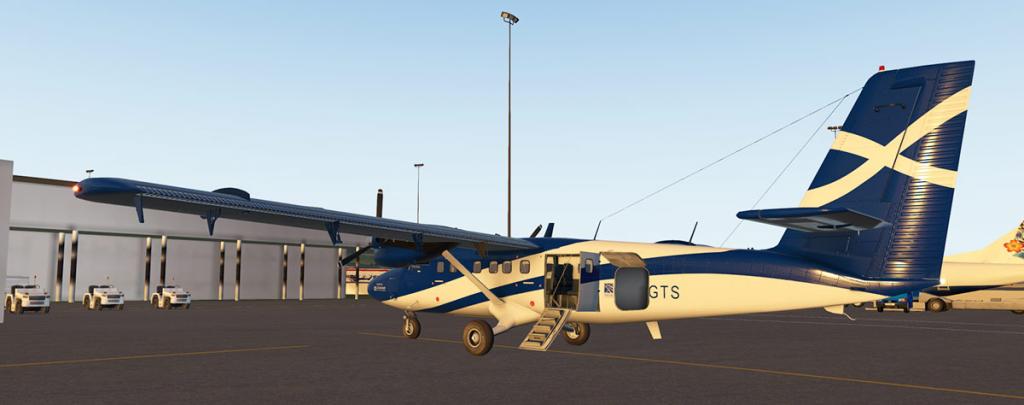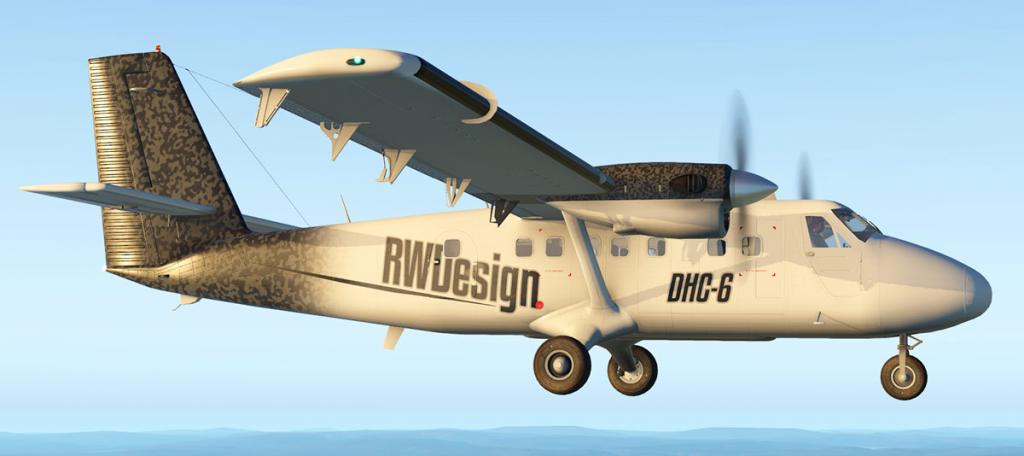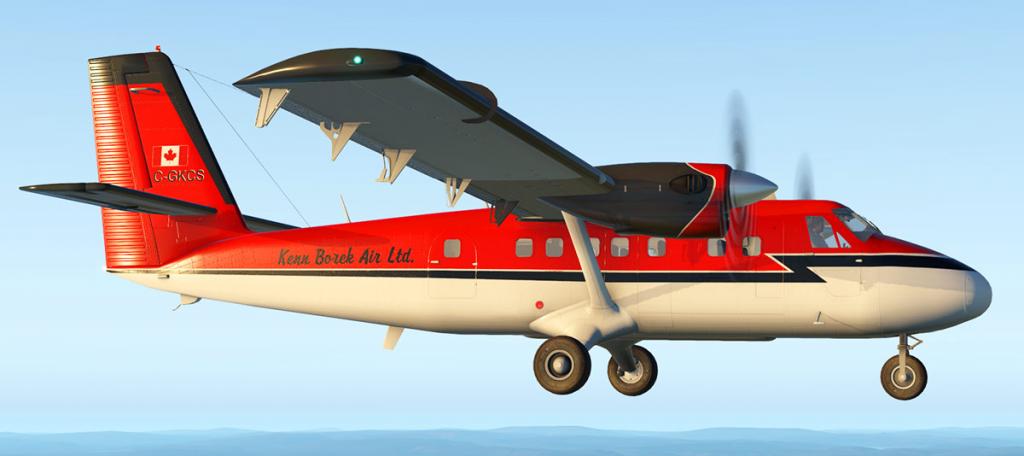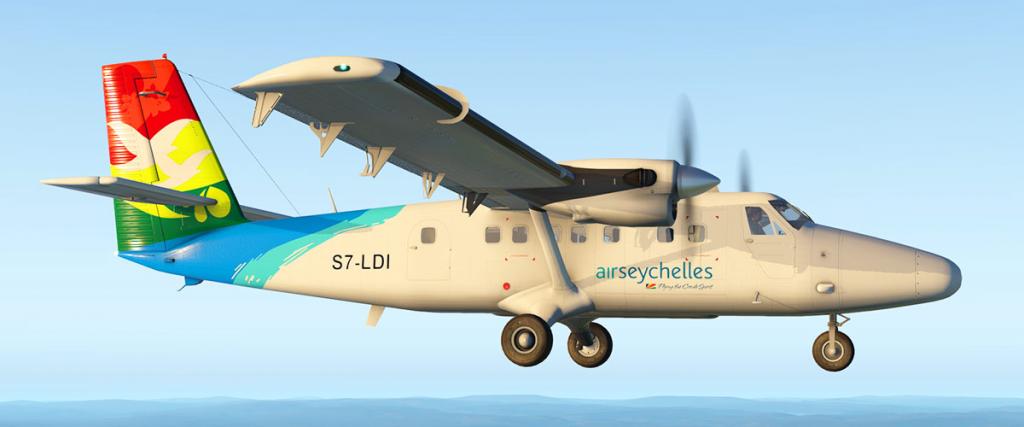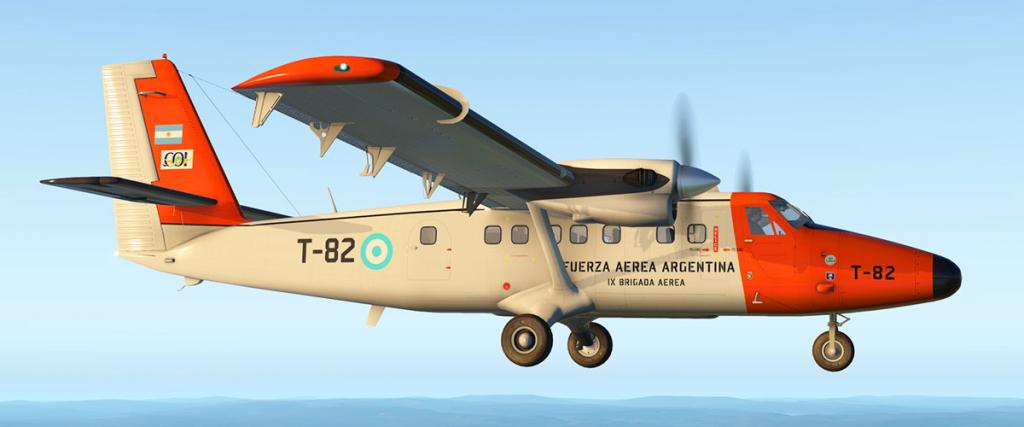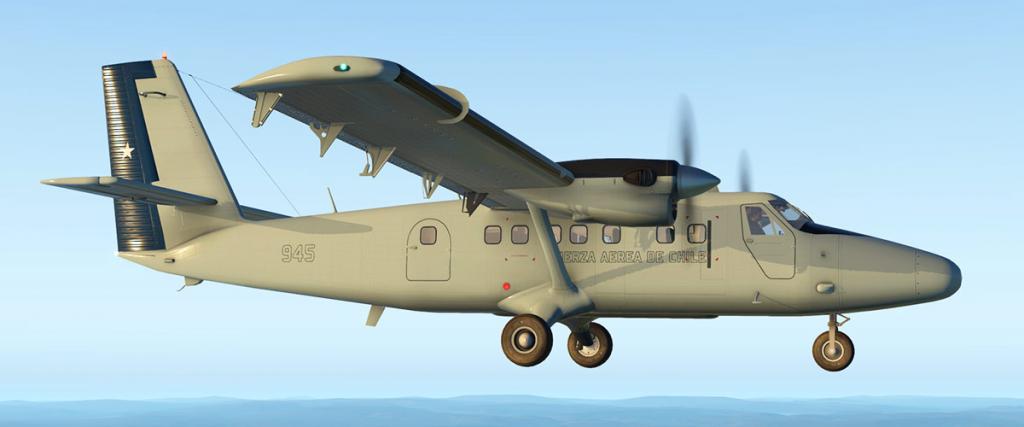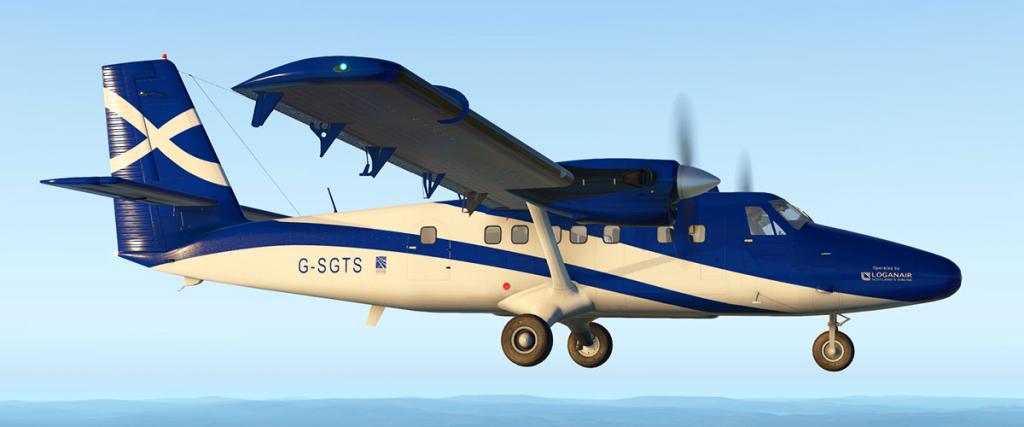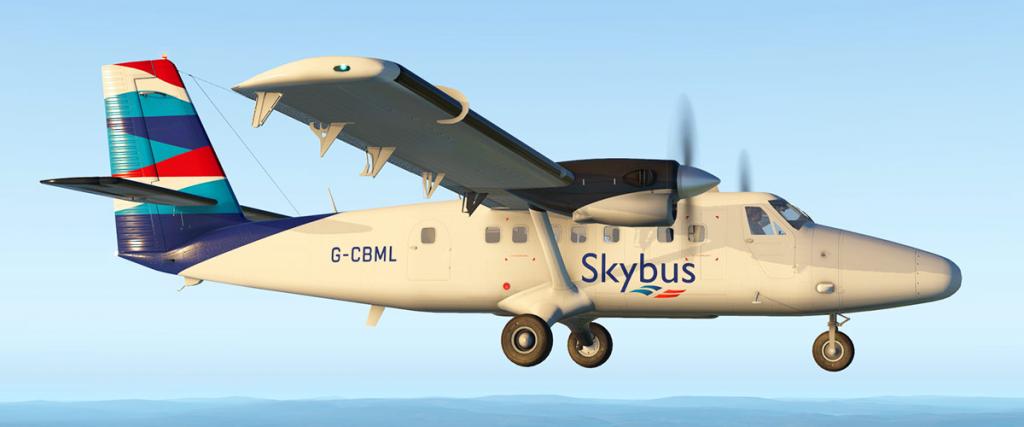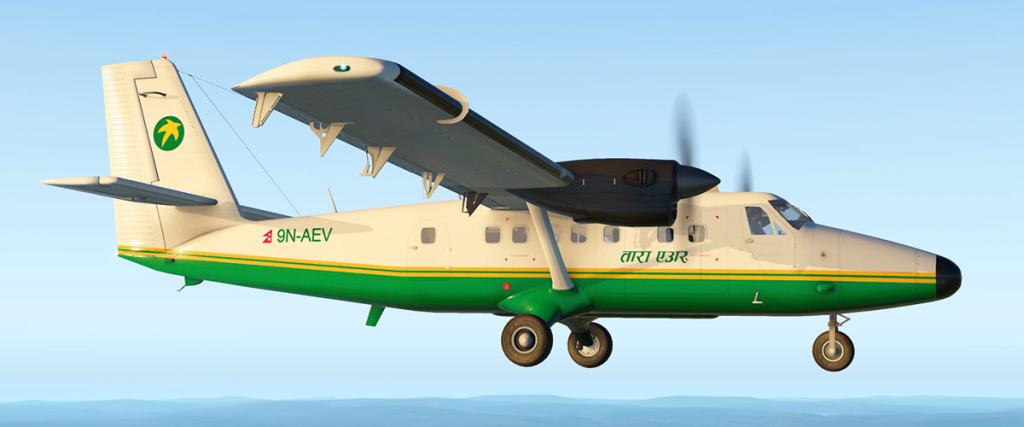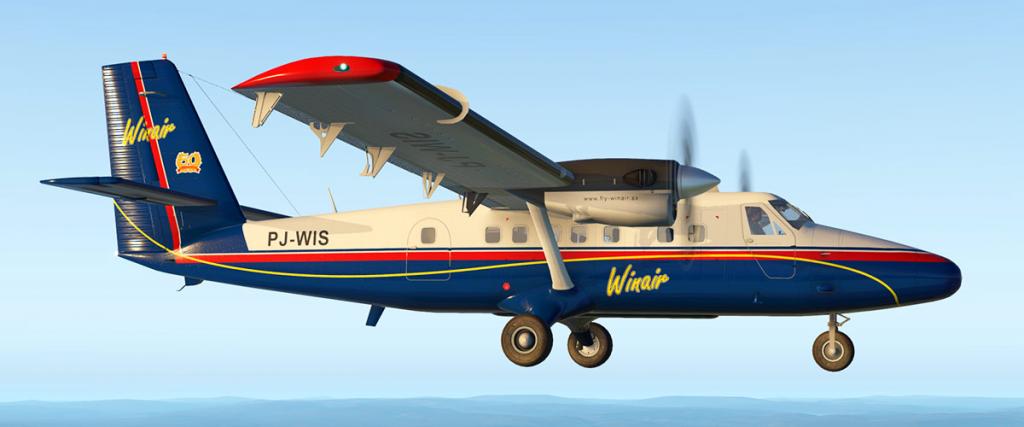Leaderboard
Popular Content
Showing content with the highest reputation since 04/19/24 in Posts
-
Aircraft Review : Embraer E-190 by Flight Procedures Simulation In July 2023, Flight Procedures Simulation released the Embraer E-195 for the X-Plane 12 Simulator. This aircraft although all new for X-Plane 12, also has a historical connection to the SSG Supercritical Simulations Group E-Jets version, but now called under another name in "Flight Procedures Simulation" (FPS), it is in many ways related to the same aircraft that was earlier released by SSG in X-Plane 11. SSG had released both the E195 and the E190 variants of the Embraer E-Jet, so as the E195 is already available, then the smaller E190 was expected to follow... here it is, and in many ways it is the same aircraft as the E195, but with a few new extra features added into the aircraft. Notable is that the same new features released in the E190, will also be cross-updated to the E195 if you own that aircraft. Actually the E190 variant is the pick of the E-Jet Series, E 170 - E 175 - E 190 - E 195. As it has the best of both worlds, it has a high passenger load (114 seats) as in being slightly shorter (36.25 m (118 ft 11 in), but also comes with a longer range in 2,450 nmi (4,537 km; 2,820 mi) and being able to fly an extra 150 nm than the E195 (124 Seats). The E195 feels long, even tube like, but the E190 is the more better and proportioned aircraft. One of the highlights of the E-195 by FPS, was the very good value price to features and quality, in being set in the mid-$50 price range. In other words you get a lot of quality aircraft for your money. The SSG/FPS also had great value to the featured systems provided, even right back to the early days, then there was a authentic FMS (Flight Management System) as part of the price... most deliver the same now, but that is just to highlight the point of the early advanced features from SSG that other developers didn't provide. The FPS E-190 is obviously almost identical to the earlier E-195, just a little shorter airframe. Both aircraft have been totally revised for X-plane 12. It shows in the quality of the modeling and detailing, that X-Plane 12 "shine" or aura is very evident. Same nice tinted glass and reflections.... the detail is nice, landing light surrounds and lovely flared winglets are also well carved and designed. All wings have the more variable Wing Flex animation for more realism. One area I thought on the E-195 that was clunky, were the internal mechanisms for the leading edge, still the same here sadly, so I disappointed it wasn't attended to... it's just feels a generation behind the current formula of detail in these current intricate leading edge, flap and airbrake combos... as which it is from the earlier SSG E-Jet Series. Undercarriage is very well conceived with highly detailed strut body and pistons, all hydraulic lines are well detailed, as are the scissors.... The side strut, although well done, is still left hanging in the wheel bay with no upper connection, as again on the E-195... this connection should have certainly been fixed by now (on both aircraft)... worse it is so highly visible from many visual angles, certainly on the approach/landing. Engines are the GE CF34-10E with 20,000 lbf (89 kN) thrust, compared to the 8E on the lower E-170/175 Series with only 14,200 lbf (63 kN), both engines are equipped with full authority digital engine control (FADEC). Engine pod detail is again excellent, great intake and the exhaust detailing is very well done. External features include all opening doors, Passenger left forward and aft, right Forward Service door, two Baggage holds and rear Service door. There is a nice GPU (Ground Power Unit) and you have wheel chocks on all wheels. Internal Cabin The E-Jet cabin for X-Plane 12 (E-195) was totally redone, or modernised. It's the same cabin here in the E-190, but it is a nice cabin with some really nice detailing. Seats are modern, as is the upper luggage bins are all also the new style with working Seatbelt/No Smoking signs and lit EXIT signs. Only niggle again are the differently set window shades from open to closed, still something I don't like?... same also is you have these excellent seat-back screens with the Airline logo, a highlight is that the seat colours/logo can also change with different liveries. Front and rear galleys are well done, but not overly meticulously detailed, a bonus for framerate. Cockpit In the cockpit, you could be in the E-195... It's exactly the same, great for your type rating! Both pilot chairs were all new on the E-195, they came with better sheepskin covers and hard-back rears, sadly the armrests are still fixed. (another area I thought would be updated for the E-190). The rear bulkhead was also completely different, and so is the entrance/door, and a modeled (non-working) jump seat on the bulkhead. Overall all the cockpit fixtures and textures have been totally redone with the same colour. Note the nice stitching, and netting rear on the pilot seats. EFB Tablet The Tablet EFB (Electronic Flight Bag) is also the same as the one in the E-195. One tablet each side for the Captain and First Officer and both are not changed in their detail. The Tablet menu screen on the left side is a huge step forward and it is easy to use. When turned off you can then use it as an AviTab, via the button top right of the screen. (plugin required) The Tablets can be added or removed on both the pilot's and the First Officer right side, but you have to select (On/Off) EFB or AviTab from only the left side tablet, but once the mode is selected it works on both as the tablets mirror each other. There are ten icon options across the top of the tablet... The first three options cover the GPU, Chocks and Cabin Lighting selections. The Circular arrows icon is the INIT page that has three options; "Unpowered Cold & Dark", "Powered at the Gate" and "Unpowered And Parked". You select the flight state, then press the green button left to activate that state.... it works well. Fifth Icon is the External options page has two options... "Doors" and "Pushback". You can open and close all six doors noted, but only from here in the Tablet and not manually. The Pushback mode is a bit limited... There is only the option shown to pushback in reverse or forward, brakes have to be off to activate and there is a procedure to follow to turn. Sixth icon is the Payload page... here you can add in your Passenger, Cargo weights... It is a single entry (Payload) entered via the keys 1K/100/10 then you load the aircraft (or compute the load)... you can change from Kgs to Lbs in the lower centre icon. Seventh Icon is Fuel. Basically the same as the payload page, you enter your Block Fuel load, then on pressing Fuel/Defuel it will load/unload the aircraft, the page will also display your fuel trip prediction (but only when you have programmed the FMCU. Eighth icon is the Takeoff Speeds. Here you select the Takeoff mode, or derated power setting (T01/T02/T03) then flap position. It will insert the current (airport) outside Temperature º and the set Gross Weight, then compute the V Speeds, CofG (Centre of Gravity) and Trim position ready to insert into the MCDU Takeoff page. All three set up pages (Payload-Fuel-Takeoff Speeds) are extremely easy and fast to do, so setting up the aircraft isn't going to take ages if you just want to fly. Ninth icon is the Sound page. Seven sliders cover three areas of Engines, Flight Deck and Environment, with a Master slider right. Final and tenth icon is the Options page, divided into "View Options"; Hide Yoke Captain side, Hide Yoke First Officers side, Hide Outside Pilot Figures and Show F.O. Side Tablet. "System" Options include; Link Baro Instrument Settings and Pause 10 NM to TD, again the Weights from KG to Lbs can also be changed here. Obviously the Tablet is a huge change from the fiddly X-Plane 11 window idea, far better for access and for setting up the aircraft... it is simple but also well done to use and mirrors the E-195 tablet as well. Systems Power on via the Battery power and the systems show the "Backup Mode". Only when you add in the direct power (GPU/APU/Engines) that you get the fully loaded system. Most of the Systems are a carbon-copy of the E-195 instrument layout and functionality, so a lot is repeated here as described in the E-195 Review. The Embraer E-Jets systems use the Honeywell Primus "Epic", Electronic Flight Instrument System (EFIS) glass cockpit. It is very nicely done, the system CAS (Crew Alert System) messages, Aural warnings, Takeoff configuration warning, Stall protection system, Windshear detection and escape guidance, Non-normal operations are all represented. The SSG/PFP E-Jet basic systems has evolved over many years, improved and is now quite substantial, I was very impressed by the CAS warnings and alerts. Five displays across, with outer main displays PFD (Primary Flight Display), MFD (Multi-Functional Display) and in the middle EICAS (Engine Indicating and Crew Alerting System), they all pop-out via the left corner screw, are scalable, also home cockpit ready. The PFD displays information such as airspeed indicator, altitude indicator, ADI, HSI, vertical speed indicator, radio aids, autopilot, flight director and radio altitude data. In the event of a display failure, information will be automatically presented in the MFD. The display controller portion of the guidance panel allows the selection of PFD HSI formats, navigation sources, weather display, and bearing pointer selection. The MFD presents map and plan navigation formats and various systems synoptic formats that are all selectable. The MFD provides redundancy to display both the PFD and EICAS formats based upon reversion. It also has the ability to display maintenance information. The MFD consists of menu softkeys, on the top and bottom of the screen, which are used to select formats and to control the various systems. Note the lower screen "Vertical Profile Display", SSG was one of the first to include the feature on their aircraft, and it is very good here. There are three option menus; Map, Plan and Systems... And six system displays; Status, Flight Ctrl (Controls), Hydraulics, Fuel, Electrical, ECS and Anti-Ice. The EICAS displays engine and system parameters such as flap, gear, spoilers and trim positions, total fuel quantity, APU and environmental information. The EICAS also displays warning, caution, advisory, and status messages. In case of failure in the EICAS display, its information may be presented in the MFD by appropriately setting the reversionary panel. An automatic mode de-clutters the EICAS after takeoff. De cluttering occurs 30 seconds after landing gear and flap/slat retraction. The Advanced Advisory System CAS logic has more than 100 messages in logic, comprehensive, and I love the block alert system flashing it is very visually authentic. Multifunction Control Display Unit (MCDU) The FPS E-190 uses the same FJCC UFMC by Javier Cortes, again the same as installed in the E-195. Also refined over the years, it is pretty solid now. Based on the EPIC Load 27 FMS it is easy to use and has also quite a lot of functionality built in... both left and right UFMC units are individual and can be used separately by both pilots. The MCDU allows FMS control, radio tuning, PFD radio tuning display setup, manual engine rating selection, engine takeoff data set and avionics display setup and test. There is also a UFMC pop-up, activated by the F8 key, there is no pop-up for the right hand display. If you haven't used the FJCC FMS before, then you have to install the UFMC data (folder). This is stored in the X-Plane12/Custom Data folder... FPS supplies a full AIRAC-2303 set of data, in the "Documentation" folder, and the full contents are all to be put in the said Custom Data folder... notable is that if you use Navigaph or Aerosoft data, then a separate update link is required to this folder to update the monthly AIRAC. Note- If you already have the UFMC installed and updated to the current AIRAC, then there is no need to do this step. Also notable is that the Flightplans for the E-190 are stored here as well, again if you use the Simbrief Downloader, an address link is required to direct the file to the right flightplan folder. The Flightplans also use a unique .ufmc lauguage, so you have to specific with the flightplan. The colourful FMS Flightplan requires THE full insert of TAKEOFF REFERENCE DATA (3 pages). There is a reason for filling in the FMC data to the full extent as we shall see later, and it requires every i dotted and T crossed. PERFORMANCE PLAN pages (5) show fuel predictions for each waypoint, CLIMB/CRUISE/DESENT/LANDING pages show full flight performance and detail, including vRef landing speeds... PROG (Progress) page is highly detailed as well. The flight system provides Full TOGA/VNAV/LNAV/RNAV/LOC/GS/Missed APPR functions. SPEEDS with CLIMB/CRZ/DESC come with a custom Autothrottle system. All speeds thoughout the flight phases can also be changed into the flight plan and on the performance pages. Overhead OHP is the same/identical to the E-195, so there is no need to relearn anything... X-Plane 12 brings a different feel into the cockpit, provides more feel and depth to the controls and instruments... Centre console was also retextured, and still you have those lovely ceramic throttle levers, you can feel them, the smoothness of the surface, and the Auto-Throttle disconnect is built in... works as well. The lovely Ram Horn yokes are also still perfectly nice. They come with built in (working) Trim switches and a working PTT button. Lighting First lighting impressions are excellent. You have a lot of adjustment via five knobs at each end of the glareshield, and three (MAIN PNL/OVHD PNL/PEDESTAL) knobs on the OHP, plus the standard DOME switch. DOME lighting is very effective via two (bright) lights in the roof rear. Each pilot also get a MAP light which is also very good... ... so you can also tone everything down to just the instruments, or just to find a little down-light to see the console switch gear, perfect for night landings or takeoff phases... its all very good, and have a very nice place to fly in at night as well. If you remember the E195 cabin lighting was a bit unfinished, as in being only half way completed... In the E190 it is done, but the light spreads don't match up to the light source on the fixed rear zone? A shame as it looks great. You switch on the cabin lighting via the button on the Tablet, off and you get only the floor light strips. More so is that both galleys are connected to the cabin lighting, so all ON or OFF, they should be separated for better illumination. Another small annoyance is the red beacon still flashes in the cabin like on the E-195? Externally it is very good. All lighting is the X-Plane 12 lighting, so it is more XP12 LED in feel... notable is that the lighting will be updated in the next X-Plane 12.1.0. release by Laminar Research, so what is seen here could be even more refined. Navigation, Strobes and beacons all look good, as does the Tail lighting. There are runway turnoff lights, three landing lights that covers both wing and nosewheel positions. There are very effective Wing/Ice lights (here noted as "Inspection", which are great for cabin views at night. Flying the Flight Procedures Simulation E-190 Yes we are in Brazil... this flight is from SBGL (Galeao-Antonio Carlos Jobim In, Rio) to SBSV (Dep L E Magalhaes Intl, Salvador). Starting the E-Jet 190 is Simple Simon, no bleeds to worry about here, as the start is fully AUTO, once you have turned or selected each engine switch. Then watch the ITT (N2) kick off and start the start procedure, which is very long here and takes around a minute per engine, as you hear all the separate processes come in and the fans starting to twirl, its all very, very good and very authentic in realism, as you see the full authority digital engine control (FADEC) in operation. Startup sounds are excellent, thankfully with those engines sounds with their many startup stages that are recorded from real GE CF34-10E engines. That explains the perfect if long start up procedure, as they are timed into the soundtrack of the real thing, and it is very good aurally to listen into the full startup experience. The adjustment of the sounds is excellent as well with the great sound control (tablet) to get the right external, internal feel. The "Pushback" system is a little tricky until you work it out, devilish simple when you do... Release the brakes activates the Pushback mode, then press the pushback option... the tricky part is having the tiller selection up, to steer the aircraft yaw (Joystick), if not you can't steer. Select to Pushback in reverse, or when you are ready to pull forward, then use the other arrow... centre selection is STOP. Just using the park-brake will disable the pushback... you will soon get to like it. Betterpushback is however not an option here as the plugin does not work with this built in system, and thankfully the old silly stick pushback on the X-Plane 11 version is gone, of which I really didn't like at all. Note that to switch the Tiller back to normal to steer with the Yaw. On the E-195 I wasn't very happy with the touchy yaw steering (joystick), so I adjusted the yaw sensitivity way down to give me more leverage on my yaw axis. Here I found I had more rudder travel in the steering, so I didn't adjust the sensitivity this time around, but you do use a lot of rudder movement in the fine tuning of the centring, but now more evenly than using the sharper joystick (yaw). So what is new compared to the E-195 on the E-190? Well the E-190 has a completely new LNAV/VNAV alghoritm, that is different from the earlier version. So the note made earlier on making sure the FMS input data is completely done and correct is important, as the E-190 will follow this data absolutely, certainly the VNAV profiles that are all shown in the "Vertical Profile Display". Also new to the E-190 are the RNP departures (Required Navigation Performance). RNP is a family of navigation specifications under Performance Based Navigation (PBN) which permit the operation of aircraft along a precise flight path with a high level of accuracy and the ability to determine aircraft position with both accuracy and integrity. It is well worth studying the differences between RNP and RNAV procedures. Before you start the takeoff roll... you set the LNAV and VNAV modes ready. Power up and put the throttles to the full (takeoff) position, now once moving and the PFD will show the system is active... ... it doesn't matter into regulating the thrust power, for as one you have set that in the FMCU, and so two, the FADEC system will keep the engine thrust within the limits or 92.0% (TO.1). The CF-34 wail is nicely heard in the cockpit, a totally different sound as it is in the cabin, but highly realistic, and all sounds are doppler and 3D. There is a full "Custom Fly By Wire" system that provides flight protection limiting and control laws according with the FMS Protection System logic, again all very Airbus. The flight model performance has also been revised from the E-195 to the E-190, and yes it handles even far better and it feels now very good. I found the E-190 more refined, certainly from the earlier E-195 climb, and this time with no engine surging... "Thank you very much, I will take that one". Once in the "Positive Climb", now select the AP (Autopilot) and both the LNAV and VNAV modes become active... note the VNAV now goes into the FLCH (Flight Level Change) mode and then chases to your VNAV set altitude. (LNAV will follow the Flightplan route) Even if you break the profile and level out at say 15,000ft. Just reclick the VNAV button for the aircraft to resume the profile. When in the VNAV mode. The ALT (Altitude) will change from green to magenta, not only will the aircraft follow the vertical profile, but it will also select the Flightplan set speed (m.65) and adjust were required, like say TOC (Top of Climb). But you have to be aware of the Airspeed - Mach switchover point. You need to check the fightplan of the point it changes over from IAS to Mach, and to physically do the switch, or the VNAV speed gets confused on the wrong setting, same going back from Mach to IAS. Note the excellent rate of turn indicator when in the "Bank" mode. In X-Plane 12 the FPS E-190 looks amazing in the right lighting conditions, high in the FL330 cruise level, you are purring along, sounds are really good and authentic... the FPS E-190 looks excellent against the real time cloud formations. Max. speed / Ceiling Mach .82 @ 41,000 ft (12,000 m), Cruise Mach .78 (447 kn; 829 km/h)... It is also a very nice feel on the E-190 flightdeck, and the great thing about flying in the cruise, is that you can just stop sometimes, just look at the world around you. TOD (Top of Descent) and you watching the VNAV (PATH) to see if it will perform the action of going into the descent phase... it does, but I found you still have to control the speed, if not the steep descent will runaway with the speed as the descent vertical speed is steep at around 2600 fpm? The system will also alert you that you will also have to reset to the landing altitude (here 2,000ft), if not the system will recapture the altitude and not descend correctly... so you will need to do this altitude reset before reaching the TOD point. The initial descent angle I found a little too steep, but it levels off around the approach phase... I like a descent speed of around 2200 fpm, but here like noted it is around 2600 fpm, so the cause of the excessive speed. But like I mentioned in controlling that speed, certainly if you have the correct velocity in the final approach turns, it IS important, as you will then have better control in the approach phase... You can now use RNAV approaches (and their charts) with the FPS E-Jet Series, in so making for tighter arrival procedures. Autoland 1 and Autoland 2 and CAT I, CATII approaches are also now all available, but Autoland 2 is only active at FULL flap with the ILS APP selected. Great immersion on the final approach phase, a good simulation is when everything is working together, sound, instruments, control feedback... your in there! The E-190 has a very low final approach speed (Full Flap) of 120 knts, 115 is the absolute minimum, or below the stall speed. Disengage the Auto-Throttle at 500 ft and cruise into a slightly higher final flare. Spoilers activate automatically with pressure on the wheels, then retract again when the wheel speed is below 45 kts for at least 5 seconds. Reverser sounds are really excellent, as you can hear them roar from the cockpit, and they are very effective as well. Autobraking was set to "Low" as I like a lot of foot braking control in the final landing phase, this aspect also worked very well, with a nice braking feel. Note the great view from the cabin of the spoiler rear internal detail. Again rudder steering comes into action on the ground, don't touch the joystick yaw though... it is too touchy. And we are in Salvador. Liveries There are a couple of liveries from the older X-Plane 11 batch, namely the Alitaila and Air France HOP!, KLM and LOT (Polish). Missing again however is the nice Dolomiti. Some new ones provided as well, Azul, British Airways and Breeze all part of the download pack... more have also been added by FPS to the X-Plane.Org, these liveries include JAL, Lufthansa Regional, Alliance (Australia) and two Jet Blues __________________ Summary This E-190 is the follow up aircraft from Flight Procedures Simulation (ex SSG Supercritical Simulations Group) of their released the Embraer E-195 for the X-Plane 12 Simulator in June 2023. SSG released both the E-195 and the E-190, so this release is the shorter, but the more potent in the E-Jet Series of the E-190. The E-190 has a higher passenger load (114 seats) as in being slightly shorter (36.25 m (118 ft 11 in), but also comes with a longer range in 2,450 nmi (4,537 km; 2,820 mi) and being able to fly an extra 150 nm than the E195 (124 Seats). The E195 feels long, even tube like, but the E190 is the more better and proportioned aircraft. In most cases there is not much difference at all between the E-195 release and this E-190. The Systems and cockpit layout is exactly the same between both, so that is great for your cross type rating. Obviously the cabin is shorter with less seats, but the E-195 updated cabin and those lovely (logo) seat back screens are also moved over. The cabin lighting has also been fixed, well sort of. SSG provided one of the first and best E-Jet FMS systems, the same has had consistent updates over the years and is now very good and stable here. Notable is that study and a complete install of flight data is required for the use of the completely new LNAV/VNAV alghoritms behind the systems, it is again very good, but speed control is required on the descent. RNP departures and RNAV approaches are also now possible. Autoland 1 and Autoland 2 CAT I,CATII landings are also available. Externally the modeling was again updated from the SSG version to X-Plane 12, and the aircraft looks and feels very good in X-Plane. But a few areas like the leading edge tracks and gear support are dated or not connected, these niggles were still passed over to the E-190 from the E-195. The Tablet and it's features are very good in not being over complicated, and the in-built pushback tool is really very clever. The biggest benefit of these E-Jets in both the E-195 and this newer E-190 is the value price to the feature and quality ratio. You get a lot of aircraft for you money, and a great E-Jet as well with all the trimmings. If have purchased the E-195, you can also get the E-190 with US$10 off the price... so another saving there. So the Flight Procedures Simulation E-190 like the E-195 are both a great investment all round. __________________ Yes! - the Embraer E-190 X-Plane 12 by Flight Procedures Simulation is NOW available from the X-Plane.Org Store here : FPS Embraer E-190 Price is US$55.00 Requirements X-Plane 12 (not for XP11) Windows or Mac (not compatible with Linux) 8GB + VRAM Minimum Download Size: 626 MB Current version : 1.0 (April 20th 2024) Owners of the E195 by FPS can get the E190 for $10 off. Coupon can be found in the original E190 invoice Designed by Flight Procedures Simulation (ex SSG) Support forum for the FPS 190 Download The FPS E-190 is a 626.00MB download with an installation size of 2.34Gb, in your X-Plane Aircraft folder, this is an X-Plane 12 aircraft only. All updates are via the built-in Skunkcrafts Updater Notable for new users, is you have to install the FJCC FMS data in the Custom Data folder, install instructions are provided and so is a more up to date current 2303 AIRAC data pack. Documentation There is excellent full coverage documentation and installation details for the FPS E-190, including; AIRAC_2303_manual_install.zip Custom_Commands.txt FPS EMB 190_Checklist.txt FPS EMB 190 - Lights and Switches v1.0.pdf Installing the FPS EMB 190.pdf FPSEmbraer_190_Changelog.txt Installing the FPS EMB 190.pdf Normal_Procedures_EMB190.pdf _____________________ Review System Specifications: Windows - 12th Gen IS1700 Core i7 12700K 12 Core 3.60 GHz CPU - 64bit -32 Gb single 1067 Mhz DDR4 2133 - PNY GeForce RTX 3080 10GB XLR8 - Samsung 970 EVO+ 2TB SSD Software: - Windows 11 Pro - X-Plane Version 12.05r1 Plugins: JustFlight-Traffic (X-Plane.OrgStore) US$52.99 : Global SFD plugin US$30.00 : RK Apps XPRealistic v2 - US$34.99 Scenery or Aircraft - SBGL- Rio de Janeiro International v2 by Globallart (X-Plane.OrgStore) - US$29.95 - SBSV - Salvador/Bahia International Airport by Globallart (X-Plane.OrgStore) - US$19.95 Review by Stephen Dutton 24th April 2024 Copyright©2024: X-Plane Reviews (Disclaimer. All images and text in this review are the work and property of X-PlaneReviews, no sharing or copy of the content is allowed without consent from the author as per copyright conditions) All Rights Reserved3 points
-
Sound Addon Review : Rotate McDonnell Douglas MD80 Series sound package by Mango Studios As noted in the review/tutorial of the modification of the Rotate MD-80 Series to use the IAE V2500 Series engines. That coming soon from Mango Studios would be a sound package to modify the original P&W JT8D-200 sounds to the IAE V2500 engine sounds. This is that sound pack, and both JT8D-200 and IAE V2500 sounds are included, plus both new bonus external and custom internal sounds are also provided in the package. The feature list is extensive as noted here... Exterior: Custom Sounds for Exterior Aircraft Systems -APU, Hydraulic Pumps, Fuel Pumps, Packs, etc External Environmental sounds, including light and hard rain Custom Engine Sounds for the Pratt & Whitney JT8D Engines -Exterior start-up/shut-down sound effects -Exterior spool-up/spool-down sound effects -Exterior backblast, surround sound, and flyby sound effects Custom Engine Sounds for the IAE V2500 Engines -Exterior start-up/shut-down sound effects -Exterior spool-up/spool-down sound effects -Exterior backblast, surround sound, and flyby sound effects Interior: Custom Sounds for cockpit switches, buttons, covers, knobs, and handles -Overhead Panel, Pedestal Panel, Autopilot Panel, and Eicas Panel all reworked Custom Cockpit System Sounds Including -Higher Quality GPWS Sounds, all the way from 2500ft to 10ft aural warnings. -Higher Quality McDonnell Douglas Warning Sounds -Higher quality and realistic Battery, packs, wipers, and avionics generator effects Custom, and ultra-realistic cockpit environmental effects -High-quality landing gear roll, cockpit rattle effect, gear retraction, gear extension, gear drag, and cockpit wind. New cabin effects include -New Air conditioning effect, Fuel pump, Hydraulic Pump, Flaps, Slats Custom Interior sounds for the Pratt & Whitney JT8D Engines, which include: -New custom, interior startup/shutdown sound effects -New custom, interior spool-up/spool-down sound effects -New custom, interior backblast, surround sound, and flyby sound effects Custom Interior sounds for the IAE V2500 Engines, which include: -New custom, interior startup/shutdown sound effects -New custom, interior spool-up/spool-down sound effects -New custom, interior backblast, surround sound, and flyby sound effects Downloaded the Sound Pack looks like this... how to install. First there are two options in "Engine Volume 1" and "Engine Volume 2"... the choice is that Eng Vol 1 has "Realistic" normal volume sounds in the cockpit. Eng Vol 2 has a "loud" (or higher level) engine noise in the cockpit... it's your choice? Note; If you created a separate aircraft for the modification of the "IAE" engines, then you would need to install this Sound Pack in Both of the aircraft files. Then just select the optional FMOD set you have selected and move it to the Rotate Aircraft root folder. Next to be installed is the "Plugins", select both "MangoStudio MD80" and "MD-80 Core" folders and install them in the (MD-80) Plugin folder... It will ask you to replace 102 files in the MD-80 Core plugin folder, select to overwrite the files. Last install item is the "Sounds". Open the MD-80 Sounds folder, and now replace the "Alert" folder, again you will be asked to overwrite 25 alert sounds.... ... now the Mango Studios Sound installation is completed. Starting the Simulation, I loaded the IAE V2500 Engine aircraft. In the X-Plane Plugin Menu, there is now under the "MD-80 Soundpack", a settings menu "MD-80 Sound Preferences". This is a selection and sound adjustment panel. There are Options on the left, and a "Volume Control" panel on the right... In the options we will look at the most important one first. This is the "Engine Select Option", or the selection of either the IAE V2500 or the JT8D-200 Engine sounds. Selecting either will allocate (save) those engine sounds to that aircraft. Here I have selected the IAE V2500 engine. Other selection options include; "Speedbrake Deploy Sounds", or the sound the Speedbrakes make on landing, "Rotation Noise" the noise when the nosewheel lifts off the runway, here you can also set the point of the rotation degreeº point of when this effect comes into play (5º is default), and finally you can have "Passenger Noise" in the cabin. There are seven Volume 0%-100% adjust selections; Master, External, Interior, Radio, Environment, User Interface and CoPilot volume adjustments. Aural feedback Obviously I want to hear the sounds of the IAE V2500 engine... It's actually really "weird", but not in a negative way. You are always used to to the lower raw compressor sounds of the P&W JT8D, however here it is the high whine of a Airbus A320, on a McDonnell Douglas MD80? It sounds like the Airbus in every way, even in the reverse thrust mode. I like it because it is what I wanted, a differential feel and environment to the standard MD-80 Series aircraft. The sound is "doppler" in the source, and there is also different source sounds in the rotation from front to back (180º) and so you are highly spatially aware of all the different changes of direction. Externally the sounds are VERY loud, and my External percentage was finally set as low as 60%, (but I don't like large volume changes from the Internal to the External)... Start up and spool down sounds are excellent (great spaced timing), however so different in the engine being a more modern installation than the 60's based Pratt & Whitney. In the cabin, the rear is aurally loud, with the set passenger noise coming in on top, and the engines are set only in the idle mode.... move to along to the front of the cabin and the distance to engines make a difference to the lower sound levels, very good. But oddly so does the noise level of the passengers also decrease, which feels very odd? I am sure they talk as much at the front of cabin, as they do in the rear. The Rotate MD-88 cockpit was always a very "clickity clackity" cockpit, and one of the main reasons why I love it.... the Mango Studios cockpit sounds are certainly not as loud, or as noisy as the default sounds, even hard to hear. So you have to put the volume up (a lot) if you want to hear them as you do in the Rotate MD-80? So it is very noticeable in the far lower Speedbrake arm and the trim setting noises, and you can barely hear the usual noisy landing and taxi light switches? This is with the "User Interface" settings set at 100%? They are definitely good sounds, but they are simply not loud enough, or you also don't have enough adjustment to find your own personal level of acceptable switch noise. In the taxi, the IAE MD-80 sounds great, nice roll sounds and engine noise... .... power up the throttles (N1) and you get this lovely high IAE whine rising from the rear, runway rumble is also very good, but those engines sound so excellent as the power gets to the takeoff throttle speeds, this is the point of difference... I absolutely really love the aural feedback you get here as those IAEs reach full thrust power. Externally the takeoff noise is really good. Once off the ground you get that nosewheel gear custom wind sound, it is good, but to be noted as far too loud on a quiet cockpit to be realistic? Yes you can turn it off, but that is in creating the opposite effect, volume just needs to be turned down a little to be authentic. Climb-out and altitude climb sounds are very good, then cockpit settles down into a background rumble in the cruise, that I also like. Once at cruise altitude I run a flypass of the IAE MD-80... It is very good, but the rear exhaust sounds when in view are very loud, and stay loud even as the aircraft retreats well and long into the distance... doesn't feel very realistic to be honest. At each step of the approach, first with the flap extension in that the sounds are extremely realistic, and the engine note also changes with any extra drag applied, then say the lowering of the gear, in it then adds on another heavier layer. Yes this is what should happen on the approach phase, but the point here is in how well you can differentiate between the different wind or drag sounds, as the layers are very well done for a feel of the spatial direction of that particular sound. Get it right as it does here, and it sounds all very realistic. The real action starts when you touch the runway, up go the spoilers, and then the reverse thrust powers up. Again the spoilers feel a little loud (like the front wheels on takeoff), but the IAE engine reverse blast is excellent, again very A320 IAE in reflection. Aurally the landing noise (touch), drag and thrust noise is excellent from the cockpit, but extremely loud if you are anywhere near the engines in the rear. I think the idea here is to make the engine package "dynamic" special sounds in being heightened (i.e. nosewheel on rotation and airbrakes), but in other areas the sounds are quieter, in say the cockpit switchgear and in the various sound directions. So you need a bit more of a balance for it to be perfect. So there is a case for some sounds need to be more reduced, and others more heightened to find a better balance... otherwise the overall dynamics here are very good, even extremely good. ' JT8D-200 Now you select the JT8D-200 selection on the MD-80 Sound Preferences panel. Externally the JT8D-200 version sounds better? The rotation of the sound (rear to front) is far better, and feels more authentic. There isn't that blast of consistent rear engine exhaust noise like you get with the IAE, until you push up the throttles, then it sounds excellent. Again the rear cabin is also extremely loud, even with the interior sounds set at 40% and the throttles set at idle? but the aural reduction to the front of the cabin is excellent, but also set higher level than the IAE, same with the cockpit sound level in the front, higher volume than the IAE. This aspect is to be realistic, the noisy 60's era engine compared to the 80's higher bypass era. Switchgear noise is the same as the IAE, as you can't again hear them working? unless you increase the volume (a lot). I again miss this interaction with the aircraft. Power up and the JT8D goes LOUD, okay I can live with that, and you feel the louder noise in the cockpit. Rotate and the nosewheel drag is highlighted, again I feel it is too loud... but the climbout and the doppler sounds are really, really good... ... certainly the JT8D is more balanced all round than the IAE. You however get the same high exhaust note when past the camera position, as the loud thrust is still very audible as far or as long as this last image shows, and so again rumbling too far into the distance from the viewer to be realistic. But don't get me wrong, in flight the JT8D sounds brilliant, in the cockpit, on the flypast and in the air from most directions. Rear cabin passengers would however ask for their fare back with the consistent high noise level? Notable here is that the high rear cabin sound level stays the same at engine idle, and the same in flight (increases though on a full throttle setting), and so why does this annoy me... because I do a lot of replays sitting in the rear cabin, so to use I would have to turn the volume right down to be seated back here in comfort. On LEBL (Barcelona) approach, with the gear down and full flap, the wind and drag sounds are again really good, yes in context very similar to the IAE in the audio experience, but certainly not in engine tone, so it is very good expression between both of these aircraft and their different powerplants. Good sound, or an all round high aural experience can certainly give any simulation a more credible immersion to the user/pilot. It is Simulation's ongoing advances that seeks to create the real environment in your own world. Sound is as important as the visuals, so these sound-packages are a very important addition to your flying, and one of the best options to heighten the simulation... as I go over the fence at LEBL's Rwy 02, I am totally in there, eyeballing the runway, but also in needing the feedback aurally from the aircraft, that is the important statement, it is what is being signaled to you or is reverberating around you can be the difference between the best experience, or just an average one. On touch down and into reverse mode, the aural sensation is excellent, yes you get the extra noise from the speedbrakes, but you can turn that off in the options. Gotta Love the Maddog! _____________________ Summary Mango Studios released a modification for the Rotate MD-80 aircraft to add on the IAE V2500 engine to the already installed Pratt & Whitney JT8D-200. Here is a sound package to deliver custom sounds for both those engines IAE V2500 and JT8D-200 and aircraft interaction. The package is most effective when you have both engine types installed, as you get both custom sound packs for both engine types. So the IAE V2500 Engine Addon from Mango Studios is highly recommended here. This is a very good high quality sound pack, that can differentiate the unique sounds of both the IAE V2500 and JT8D-200 engines, the IAE is of course the more modern engine and is mostly associated with the Airbus A320 Series. The range of custom sounds here are excellent on both engine type installations. Great doppler effects, different source sounds in the rotation from front to back (180º) and so you are highly spatially aware of the different changes. Both engines have excellent spool up/spool down sounds and the excellent reverse thrust activity. Flap, gear and wind noise is also very good and engine thrust realism is excellent. With options that cover custom "Speedbrake Deploy Sounds", "Rotation Noise" the noise when the nosewheel lifts off the runway, and "Passenger Noise" in the cabin. Option for "Loud" or louder engine noise in the cockpit. However there are few consistencies highlighted the same on each pack. Switchgear/Interaction sound levels are very low compared to the excellent default Rotate MD-80 sounds... rear engine exhaust is also too (extremely) high and remains too long after the aircraft has passed your point of view. Rear cabin sounds even at throttle idle are not realistic, passenger chatter also disappears as you move forward in the cabin, optional custom sounds (nosewheel & speedbrake) are set higher to be "dynamic" when selected, are not very realistic. The attraction here with this package is the sounds for the IAE V2500, the tone and feel is completely more modern than the 60's inspired feel of the JT8D low-by pass engine, effectively an Airbus engine on a McDonnell Douglas MD80 aircraft. In this aspect the package is excellent and a great companion to the MOD pack for the IAE V2500, the JT8D-200 is as good, with extra features over the original Rotate sound pack. Overall I totally love the idea and the choice of the two different engine types for the MD-80. It gives you a very and more flexible choice in flying this unique McDonnell Douglas aircraft, not just in appearance, but also here with a unique aural experience for both types... well worth the investment! _____________________ Yes! the Mango Studios MD-80 Sound Pack is currently available from the X-Plane.Org Store here : Mango Studios MD-80 Sound Pack Price is US$14.99 The Rotate MD-88 Pro X-Plane 12 is required for this add-on. The Mango Studios MD-80 IAE V2500 Engine Add-on is highly recommended. Requirements This is a Sound pack. The Rotate MD-80 is required for this sound pack. Will not work with any other MD-80 Download Size: 52 MB Current version 1.0 (April 16th 2024) Documentation Manual provided by Mango Studios is a bit basic, hence the Tutorial here in this review Rotate MD-80 Soundpack Manual.rtf _____________________ Aircraft Sound Addon Review by Stephen Dutton 19th April 2024 Copyright©2024: X-Plane Reviews Review System Specifications: Windows - 12th Gen IS1700 Core i7 12700K 12 Core 3.60 GHz CPU - 64bit -32 Gb single 1067 Mhz DDR4 2133 - PNY GeForce RTX 3080 10GB XLR8 - Samsung 970 EVO+ 2TB SSD Software: - Windows 11 Pro - X-Plane Version 12.09rc5 Plugins: JustFlight-Traffic (X-Plane.OrgStore) US$52.99 : Global SFD plugin US$30.00 : RK Apps XPRealistic v2 - US$34.99 Scenery or Aircraft - LIRF - Airport Rome XP by Aerosoft (X-Plane.OrgStore) - US$25.99 - LMML- Malta International Airport by JustSim (X-Plane.OrgStore) - US$22.30 - LEBL - Barcelona XP by Aerosoft (X-Plane.OrgStore) - US$27.99 (Disclaimer. All images and text in this review are the work and property of X-PlaneReviews, no sharing or copy of the content is allowed without consent from the author as per copyright conditions) All Rights Reserved3 points
-

Scenery Review: LFKF - Figari, Corsica XP12 by FSX3D
skytitude and one other reacted to Dominic Smith for a topic
Scenery Review: LFKF - Figari, Corsica XP12 by FSX3D By Dominic Smith Introduction Welcome to another scenery review, this time set in the beautiful surroundings of Corsica. Unlike most youngsters, my initial curiosity about Corsica was sparked by an unlikely source, the comic book "Asterix in Corsica". While the story mainly highlighted the island as a unique spot off the coast of Italy and focused on the adventures of Asterix and Obelix, it greatly captured my interest. Since that initial discovery as a child, and despite numerous "unfortunate" geography lessons (my teacher just didn’t have Asterix’s appeal), I have come to appreciate Corsica as a place of considerable natural beauty and historical depth. This appeal extends to both the casual visitor and the avid explorer, although I have yet to visit the island outside of X-Plane. Figari South Corsica Airport, located just 3 km northwest of Figari in the scenic Corse-du-Sud département, serves as a vital hub for accessing this enchanting Mediterranean island. Since opening in 1975, the airport has become Corsica’s third-largest, facilitating connections to major cities via airlines such as Air France, British Airways, easyJet, and Ryanair. Conveniently situated 25 km southwest of Porto-Vecchio, it handles upwards of 639,916 passengers annually. More than just an airport, it serves as a gateway to exploring Corsica’s stunning coasts and ancient mountain villages. Installation & Options The main airport download size is 815MB, with an option to install additional photographic scenery tiles of the area, totaling just under 9GB. Although this might seem large at first, the tiles have been created using a reasonably high zoom level, making them a worthwhile addition, especially for users of simHeaven. Alternatively, you can choose to create your own photographic tiles with Ortho4XP. For this purpose, the developer has included patches to ensure the airport aligns correctly, applicable to users of AutoOrtho as well. There's no online activation or third-party wrappers involved, so while the installation process might differ slightly from the norm, it remains relatively straightforward. Documentation The provided documentation is quite comprehensive; it includes text documents detailing the various installation options and a full-colour chart of the main airport along with its layout. Given the relatively low cost of the scenery package, I was quite impressed with what was provided, especially considering that more expensive sceneries often offer less. Initial Impressions Upon opting to install the additional photographic tile of the area, I was immediately struck by its quality. The documentation reveals that this imagery was created using zoom level 17 (ZL17) with custom elevations. From the views provided, it was evident that this enhancement significantly surpasses the default textures and mesh included with X-Plane 12. Beyond the undulating hills, the Mediterranean Sea stretches into the distance, presenting a captivating sight even in this virtual setting. Ground Details As you descend closer to the ground, the custom orthos remains sharp and clear. This level of detail is particularly beneficial for those who enjoy flying low in general aviation (GA) aircraft. Indeed, if you’re exploring Corsica by air, there really is no better way. However, while the runway textures were sharp and clear, they appeared somewhat clinical. The asphalt's colour was overly intense and seemed unbalanced. Additionally, the transition from asphalt to grass was too abrupt, lacking a smooth blend which could potentially be refined with further development. Taxiway & Apron Textures On the flip side, the textures of the taxiways and apron were far more aesthetically pleasing. Here, the asphalt and concrete had a more subdued appearance, which seemed more fitting with their environment. The edges where the asphalt met the grass were well-executed, featuring realistic cracks and wear. Moreover, the presence of rubber marks and oil or chemical stains enhanced the authenticity, contributing significantly to the overall visual appeal. Airport Signage One of the features of the scenery I was most impressed with was the custom airport signage, particularly noticeable on the taxiways and apron. The detailed guides for taxiing aircraft are well represented. A comparison with its real-life counterpart on Google Maps shows that the layout is almost identical, which greatly enhances the authenticity of the scenery. Parking areas for both general aviation and business aircraft, as well as helicopter zones, are clearly marked. Closer to the main terminal, the stands are accurately laid out with all the correct markings. Overall, I was very impressed with the signage accuracy and detail. Airport Foliage The airport is bordered by several wooded areas that extend right up to the boundaries of the scenery before stopping abruptly. It’s worth noting that with Global Trees installed, this coverage might continue beyond the scenery’s limits; however, I haven't tested this add-on as I do not own the product. However, I did have X-World Europe installed, which might have accounted for the slight increase in tree variations. Situated around the airport buildings, particularly the terminal and control tower, are small shrubs, flowers, and a few mature palm trees. Main Terminal Building & Surroundings The main terminal at LFKF, while lacking an interior, is well-modelled and effectively represents its real-life counterpart. Along the length of the terminal, bollards and benches contribute to the overall visual appeal, and the texturing on the concrete walls shows a realistic degree of weathering. However, the terminal area lacks airport signs or posters and feels somewhat lifeless, particularly in what should be the busiest part of the airport. There are a few cars lined up for passenger drop-off and collection, but the noticeable absence of passengers diminishes the overall effect. Hopefully, future updates will address this issue, but as it stands, the terminal building, whilst impressively modelled, requires a bit more liveliness to truly come to life. Directly across from the main terminal entrance is the main airport car park, which features a variety of custom-made vehicles. These vehicles are a significant and highly welcomed improvement over the stock models typically included with X-Plane. I don’t know about you, but I get tired of seeing the same old models all the time! The vehicles, all European makes, fit the Corsican setting perfectly and add a touch of authenticity to the scenery. Close to the car park, you'll find several car rental facilities, including Ada, Hertz, Avis, National, and Europcar. These buildings are modest in size but effectively serve their purpose. Given Corsica’s expansive landscapes, renting a car is almost essential for visitors. Additional Airport Structures Adjacent to the terminal lies the control tower, which I found to be modelled to a slightly higher standard than the terminal. The control tower's numerous angles and curves lend it a quite unique appearance, and the central staircase is a welcome touch. Next to the control tower is the Terminal Aviation d’Affaires, catering exclusively to business travel. The modelling here matches the high standard of the control tower, with notably good texturing that includes realistic weathering effects. The large glass areas are particularly impressive, although it's a pity there isn’t an interior modelled. A few metres away from the main buildings, there is a small maintenance building, and next to it, a fire station. The fire truck is positioned further up on the apron, perhaps there was some emergency I missed. Nearby, several smaller buildings of various types and a fuel service area contribute to the functional diversity of the airport. Completing the scene is an animated radar dome, faithfully watching over the airport. Night Lighting The night lighting at the airport is primarily provided by dynamic lighting from street and airport lamps, which stands in stark contrast to the complete absence of lighting effects from the buildings themselves. This omission is rather disappointing, as it contributes to a rather lifeless atmosphere during nighttime hours. Much like the notable absence of 3D people, I really do hope that the developer will address this issue in future updates. Performance Overall, I found the performance at LFKF to be pretty impressive, allowing for all settings to be maxed out, apart from anti-aliasing, while running at 1440p. At this resolution, I managed to maintain roughly sixty frames per second during the day. However, during nighttime hours, there is a noticeable drop, with frame rates dipping to the mid to high thirties. This significant reduction may be more reflective of X-Plane's general performance quirks during certain times of the day, nighttime in particular, rather than a specific issue with the scenery itself. Nonetheless, it's an important consideration for those using lower-end systems, as these performance shifts could impact your experience. Conclusion Reflecting on my time at LFKF, it’s clear that the experience was, on the whole, rather enjoyable. The airport features some well-modelled buildings, especially considering its low price point, and an authentic layout which closely matches its real-life counterpart. The addition of the optional ortho tiles significantly enhances the value of this scenery package, offering a level of detail not commonly found in more expensive counterparts. However, it’s not without its shortcomings. The absence of 3D people and the inadequate night lighting stand out as the most notable flaws. Addressing these issues in future updates could transform this from a good to an exceptional scenery package. As it stands, I am happy to recommend LFKF to those who have a fondness for Corsica, and perhaps an affinity for adventure reminiscent of our beloved two Gauls. Just as Asterix and his companions would conclude their adventures with a grand feast, albeit always without the bard, this scenery too promises a delightful exploration, if not a perfect one. ________________________ LFKF -Figari, Corsica XP12 by FSX3D is now available from the X-Plane.Org Store here: LFKF -Figari, Corsica XP12 Priced at $14.99 Features Ultra detailed car parks, taxiways and track PBR on all objects Ambient occlusion (Objects and ground) Wet track effects Dynamic lighting Animated Radar Pylon Altimeter patch for Ortho4XP Compatibility AutoOrtho Requirements X-Plane 12 Windows, Mac, or Linux 8 GB VRAM Minimum Download Size: 815 MB Review System Specifications Intel i5 12400 – 32GB RAM - Nvidia Asus RTX 4070 – Windows 10 Home 64 Bit __________________________________ Scenery Review by Dominic Smith 19 April 2024 Copyright©2024: X-Plane Reviews (Disclaimer. All images and text in this review are the work and property of X-PlaneReviews, no sharing or copying of the content is allowed without consent from the author as per copyright conditions).2 points -
Hi guys, just have to notify that I did an update 1.20 for Tallahassee, it will be uploaded at the upcoming weekend. So the update itself include's many improvements and fixes of issues described above. Attaching you a few images. Also a lot of ktlh store images will be remaked as well since I did too many changes in ground poly's and some other stuff.. Changelog - Significantly improved airport pavement textures and their specular pbr effects - Increased quality of grass and soil textures within the airport area - Added more custom apron mast's models - Added night light textures for terminal and tower windows, cargo facility logo's - Added missing rooftop attributes on general aviation terminal - Better ground traffic and airplane routes - Added some moving ground vehicles - Fixed bunch of minor mistakes Thanks1 point
-
NEWS! - Aircraft Announcement : Toliss notes the Airbus A330 as next project At the developers conference in early February 24 in Toronto... ToLiSS put up a chart in the session to note the already released fleet from the developer, but of also which aircraft could come up for development next... Candidates included the A318, A330ceo, A330neo, A340-200/300 and of course the Airbus A380. The A350 (v2) has already been announced as a joint project with FlightFactor (same arrangement as the current FF A350) at the same conference. The choice is now between the A330ceo (Current Engine Option), and the A330neo (New Engine Option)... image depicted here is the default Laminar A330-300, so it is a not a signal of the coming ToLiSS A330 type. The question "But Which One?", will keep you guessing, but on past record ToLiSS has usually kept away from competing directly with already released products, also they usually always do the NEO versions of the same aircraft (hint A320neo, A321neo). So the A330neo is probably the pick of the two versions. And into also not competing directly with the same A330-300 Laminar offering. The A330neo has two variants, the -800 based on the older ceo -200 and -300 variants, that has a range of 8,150 nmi (15,090 km; 9,380 mi) with 257 passengers. The second variant is the -900, it covers a range of 7,200 nmi (13,330 km; 8,290 mi) with 287 passengers. Both variants are powered by the Rolls-Royce Trent 7000 which has double the bypass ratio of its predecessor. ToLiss Features include... Accurate Systems ToLiss Fly-by-wire and autopilot module, with support for Alternate and Direct Law Unique feature: Control Surface hinge moment modelling allows the surfaces to float to the appropriate position after loss of all actuators on a surface or to not reach full deflection if running on a single actuator. fault injection interface allowing to inject custom selected failures, or randomly selected failure based on fault probabilities with over 210 failure modes available. Custom TCAS with resolution advisory function. Terrain on ND and Weather radar available (WX radar works with default X-plane weather engine) Brake temperature model based on the detailed physics of heat transfer between the individual brake components Hydraulics model with proper hydraulic flow computation as function of surface motion, flap/slat motion, gear extension etc. You will see this by the pressure dropping when flying on RAT Custom engine model for accurate thrust and fuel flow modelling including oil pressure and temperature model as well as many engine failure modes. Thrust and fuel flow modelled for each engine type. Special engine logics, such as dual cooling on the PW1127G engine, are also modelled. Detailed model of each ADIRU including alignment, small pressure sensor differences between the units, switching of sources for PFDs and Aps Quantitative bleed system modelling affecting engine fuel flow Electrical system simulation with correct bus reconfiguration and load distribution, simulated electrical transients as well as emergency generation from the blue hydraulic system. Fire detection simulation for engines and APU Custom radio navigation computations including ability to perform backup RADNAV tuning through the RMPs Custom air conditioning model supporting high altitude operations at airports like Cusco in Peru or La Paz in Bolivia without spurious warnings Flight warning system with ECAM actions supporting numerous system failure scenarios, e.g. engine failures, generator failures, hydraulic failures. Custom indicating system including DMC and SDAC simulation. Choice between Multifunctional runway lights or the classic landing light configuration Useability features Situation loading and saving. It is possible to save the flight at any point in time and resume it another day. This can also be used, e.g., to save the position just before approach and practice just the approach many times. This feature reinstates the complete aircraft state (except communications with ATC, such as AOC and CPDLC messages or ground service states.) Autosaving allows recovering where you left off, should the X-Plane session end unexpectedly. Jumping waypoint-to-waypoint through the cruise phase: Shorten your flight to focus on the more interesting parts as you like. Integrated takeoff performance calculator supporting the use of flex temperature. 4 different start-up configurations from Cold and Dark to engines running and ready to go In-screen popup displays or use of x-plane windows for popups Interactive audio control panel to change ground services, fuel, loading, passengers etc. without breaking immersion Electronic flight bag on both sides with Avitab integration, weight and balance computation, take-off and landing performance calculator as well as a user customizable interactive checklist. Print function for AOC messages, CPDLC messages and selected FMGS functions Release would be around October, as this is also a ToLiSS release period with the other time in being March... ToLiSS notes that the new A330 is obviously compatible with X-Plane 12, but will also support X-Plane 11 backwards compatibility, but without the X-Plane 12 effects. Start saving now, price should be around US$89.99! ___________________________ News! by Stephen Dutton 16th April 2024 Copyright©2024: X-Plane Reviews (Disclaimer. All images and text in this review are the work and property of X-PlaneReviews, no sharing or copy of the content is allowed without consent from the author as per copyright conditions) All Rights Reserved1 point
-
Aircraft Review : de Havilland Canada DHC-6 Twin Otter -300 Series v2 by RW Designs It is just under three years ago in Feb 2015 was when RW Designs first released their version of the DHC-6-300 or the Twin Otter. It was a competent design as we saw in the review : Aircraft Review : de Havilland Canada DHC-6 Twin Otter -300 Series by RW Designs. The aircraft did however have some traits that divided the purchasers into the "very much like" and the "missing something" divisions, I personally didn't mind it as it was at least a decent Twin Otter to fly. And here now is v2 or the X-Plane11 version of the aircraft and at first glance it looks like the the next update for X-Plane11 for the aircraft. But to think that and you would be wrong, and in fact completely wrong as this Twin Otter is a completely new design from the ground up, and only a few elements have been passed over from the original design. Everything has been completely remodeled, from the actual aircraft, its systems and its features and it is also X-Plane11 tuned and uses X-Plane11 features in its design. So this DHC-6-300 is a full upgrade, not an update. And what you are purchasing here is a completely new aircraft, but there is also a discount for users to update from the original version to this all new v2 aircraft that allows access without the full cost of the purchase price. The overall external design of the original was very good with great detailing of rivets and paneling from the X-Plane "draw per pixel lighting" shading effects and the aircraft body fittings, but there was also a few clunky areas of like the thick rear doors and the average cabin, but overall in the right lighting conditions the original DHC-6 did look very nice. But that was three years ago, and an eon of ages in X-Plane terms and with all the changes to X-Plane11. It was a smart decision to not to try to and simply adjust the design to this new era, but to create a completely new version directly for the changes. Yes that does create a lot of work, extra work, but it also puts you in a far better position because you will have raised the quality standard at the same time and also the intimate quality of your own work. Yes starting afresh allows you do it better and with a better design and a far better approach than just trying to fix up those poor kinks that would be hard to fix anyway. So looking closely at the v2 aircraft the distinct quality is certainly far better, and the aircraft more far more detailed. Certainly the X-Plane11 PBR features help any developer, but to use them effectively still takes skill, and you see that here on the excellent external area and flying surfaces, and also where it counts and this new aircraft can look spectacular in the right lighting conditions. Here is the original design... ... and the new v2 design. The quality and detailing is quite significantly modeled far better with the specular lighting effects bringing out the quality. Baggage areas (front and rear) are now lined, but we have lost the bags in transit? The cabin window detailing is now excellent and they are a huge difference from the original bulky frame idea. And were as the cabin in the original felt like an after thought, the v2 cabin is now excellent. For the insanely beautiful steel floor and the exquisite leather seats. Now this Twin Otter feels like a complete aircraft. Menus The aircraft also now has menus... The menus are located in a flight book down in the pilot's door pocket. The main menu also opens up three more menus in Radios, Checklist and Weight/Balance The main contents include a flashlight (X-Plane native) opening the front and rear baggage doors, external power supply and GTN 750 Support... but no menu options to open the main cockpit and cabin doors, of with which with the rear doors being hard to move to every time you want to open/close them is a bit of a side head scratching moment. Lower menu is four cockpit colour options... In Green, Blue, White and Black. Green is green, but the Blue feels like very light Grey, White feels Grey and Black feels light brown. Only the cockpit colours change and not the cabin textures including the seats, which would have been a nice touch. The Checklist is excellent and covers all aspects of operation from start up to shut down, and the binder is moveable and scalable for ease of use. There is a very good "Weights&Balances" menu as well. You can set the fuel in kg's and the weights of baggage and passengers (Payload). Your aim is to keep the CoG (Centre of Gravity) around 30% of MAC. The full Empty Weight and Total Weights are all shown. Nose versions There are both the "Long" and "Short" nose versions available. They are switched via the liveries with "LN" denoting the Long Nose and "SN" denoting the Short Nose. Besides the Standard wheel version there are three other variants in Float, Ski and Tundra tyres. Float The float version is well done and the undercarriage can be raised up into the float via the undercarriage lever, but there are no rear float rudders for water steering to raise or lower... ... the aircraft handles nicely on the water (without a high swell) and with the opening rear doors, they both open out and not down for exit and entrance. Ski The ski's are fastened on tight, as some developers make them raise or lower below the wheels. Overall the quality is very good. Tundra The huge balloon Tundra tyres are very well done here, and you don't get that bouncy floaty movement on landing but a nice grounded feel. Flying the DHC-6 Twin Otter v2 The early morning service today is the from EGPH (Edinburgh) to EGPD (Aberdeen) a simple hop of 93nm. Aircraft was set up with 611kg of fuel and 1380kg of payload (passengers and baggage), for a gross weight of 6147kg. You need a bit of thrust to get the aircraft mobile, but once moving you can mostly keep it back in the idle position, and contain any speed with the brakes. Flaps are set at 10º and the indicator is on the centre windscreen bar. A final check and it is power up or power forward with the twin overhead drop down levers. Rotation is around 95kt to 100kts depending on the wind direction, but the aircraft is nice in the pitch and then the bank... .... The differences with the X-Plane11 performance is quite considerable. The original was not in performance as close as it should have been, certainly in the handling as this Twin Otter feels far much better as of the simulator changes. As with a lot of moving over to XP11 style flying, you need a short time to adjust to different feel and reaction, so any first flights won't give you the feeling you would expect from the aircraft straight away, but it does come in time and then and only you start to really love what you then have to fly, and after a few flights you will really understand what I mean. In the original DHC-6 we were a little confused by the Collins AP106 system and as you will notice there is no V/S (Vertical Speed) button or V/S climb or descend knob? Only an Altitude (ALT) and Heading (HDG) buttons. As the Collins system does not use that type of system to climb or descend. The AP106 is tricky to still use, but as the actual aircraft performance is better, then it works better in here now as well. The trick is to find the right speed in your throttle position and then lock that speed in via the IAS button. The system works by then adjusting the throttle to climb or descend. You aim or goal is for a speed of around 105kts to 110knts and a climb rate of around 1000fpm as noted here for the best of both worlds, and the specified climb rate is around 1600fpm. To descend you do the reverse in reducing and locking in the speed around 80knts and descend around the same 1000fpm. This is a big change over the original version as the aircraft wouldn't descend at all unless you went to extreme measures like even setting the throttle to idle and then even feathering the propellers to go down, which was ludicrous. ALT ALERT button is really the altitude hold button for the selected required altitude, and it works in both modes of ALT and IAS disconnect when the set altitude is attained, but it can be tricky to set sometimes. A note on to have the trim correctly set is now important, not only for the initial takeoff but for the AP106 interaction... if the trim is out, then the AP106 will do silly things like climb or descend too quickly. so a set trim and a level aircraft helps in AP106 transition. An item to note is that you have to manually disconnect the AP106 by both the buttons and the switch. If you use a key or in my case a joystick button to disconnect the autopilot then here it doesn't deactivate the AP. Debatable is the sound package on the aircraft. It is a FMOD setup and has 3d surround sounds and good variation in sound. The package uses a professional PT6A soundpack, which is noted as one of the best for the Twin Otter. And in most areas like start up, idle and takeoff power the sound is very good, but the in flight internally sounds are very buzzy, light and don't have much depth or even drone and the sound pitches don't change much with any throttle changes. The sounds do come well regarded and so I am going to put the aural question out there as some aircraft like the Twin Otter do have a particular feel and sound, so feedback is welcome, but they did grow on me. Another point to make is that the RW Design's Twin Otter doesn't like the xEnviro weather plugin very much in the visual stakes, the view from the cockpit is fine, but if you look at the propellers at any time they show the real scenery through the movement. This of course an X-Plane/xEnviro issue and not the developer's issue, but it is currently not the best external view with xEnviro active and the normal X-Plane weather is used here in this review. Although a few of the original elements like instruments have been moved over and updated, in context this is a completely new cockpit and instrument panel. The main panel does feel slightly duller and flat, than the lighter smoother approach on the original, but the quality is far, far higher and detailed. We are used now to excellent metal style instrument panels, but here it is authentic to the flat grey used on the aircraft. The excellent glareshield is really well modeled and textured, so overall it works very well. The classic dual yoke is well reproduced, but it can't be hidden. The iconic Twin Otter overhead panel (OHP) is excellent, fully featured and really well produced. The OHP was good before, but this complete redesign is now even more authentic and realistic, but you do have to set a key "quickview" to get a quick upside down view of the rear of the panel if you want to access the switchgear, overall it is all really well done. Under the panel and floor is also very well completed and realistic, with lovely crafted DHC rudder pedals, centre upright fuse panel with built in fuel gauges. And note the great Brake Temperature display panel. Cockpit quality and seats are as good as the cabin, and the only noticeable point is the cockpit/cabin divider is not a clean arch. The excellent trim controls on the pilot's right seat arm, are however beautifully created and authentic and very nice to use.. The Instrument panel layout has had a few changes. First up is the completely new BendixKing electronic Artificial Horizon, replacing the flat (awful) design of the original on both sides is a huge improvement there. The Collins AP106 system's button panel has been moved from the right-centre instrument panel to the pilot's side for easier use, and there is now both a VOR(2) and ADF dial bottom left (only a single ADF dial before). The Course Deviation Indicator (OBS) looks like it was moved, but in fact it is still in the same place, as the Radar altitude has been moved below it to allow the fitting of the AP106 button panel above. The equipment avionics stack is different as well. The KMA 28 audio panel is top, with the GNS 530 below. The radios are more basic, but also more realistic with two KX 155As for COMM1/VOR1 and COMM2/VOR2 receivers. A KR 87 is your ADF and centre below is a KT 70 BenedixKing Transponder. You can if you have purchased the (expensive) RealityXP GTN 750 or GTN 530, use them in the aircraft and replacing the native GNS 530. The GNS 530 and the radio panels all pop-out for ease of use. All instrument and radio panels have nice reflections, real, but not overly done. Panel lighting is indirect, but looks great even in the daytime. On the lighting theme, the cockpit is very good, in a black and white way. But the dials are very clear and concise for night landings. All instrument lighting is adjustable and the cockpit is lit by only one light above your head. The cabin is sensational with pairs of spot lights for each set of seats... ... The seatbelt and no-smoking sign is nice touch. External lighting is very good, with a single front strut taxi light and two wing mounted landing lights, standard tail-beacon and navigation lights and excellent strobes. Landing light throw is very good as is the powerful single centre taxi light. Aberdeen is waking up as we arrive at Dyce. After doing the controlled descent, with the IAS set at 80knts and around 1000fpm to 1500ft. You set the approach speed with 20º flap and just in the green zone at 90knts. Remember this is a STOL (Short TakeOff and Landing) machine, so those flaps act like barn doors when lowered, but give you super slow control. Full flap at 40º will give you a slow speed of around 70knts, but if the sea breeze is strong you have to work the rudders hard to keep the runway alignment as that large DHC tail works for you and against you at the same time. I took me a few landings to get the feel just right... ... it is an aircraft to get into the right groove with, but once there you are really into the aircraft and it comes to you. Landing speeds can border on the 60knt stall, but you seem to hold it fine to gently touch down, the speed is so slow you can just roll the speed off more, but if you need it then there is reserve prop thrust by setting the "Full reverse thrust" setting, but I never did. As the propellers wind down, you notice the animated feathering of the blades, they are really well done... ... but is quickly time to load up and return to Edinburgh, not a bad way to make a living is it... Liveries There are nine liveries with two as the short nose version with a very nice RWDesign logo (default) and a Kenn Borek Air The rest of the liveries are all long nose and every livery works with every variant in Float, Ski and Tundra. All are excellent Hi-Def quality with the lovely Air Seychelles a highlight. Summary First glance is that the Twin Otter from RW Design's is just an update, but this aircraft is very, very different from that fact. This is a complete rebuild of the aircraft and only a few of the original elements are actually present. This comprehensive upgrade is really an all new aircraft and with the excellent quality to match the better detailing. Highlights are many with an excellent cabin with lovely well done textures and realistic metal flooring, and luminescent lighting. A menu system that can change the cockpit colours and an easy to use Weights&Balance page, Checklists and pop-up radios. The depth of the quality grows with every flight. X-Plane11 features have made the aircraft far more dynamic, not only in the way the aircraft uses the PBR, but with the better X-Plane11 performance dynamics, something in performance was missing on the original release aircraft, but fully restored here and the images here in this review don't lie as the aircraft looks brilliant in great lighting. Four variants with the Standard Wheels, Float, Ski's and Tundra tyres is a value four aircraft, with also Short and Long Nose versions available. Overall this is an outstanding upgrade, but I question the sounds, and they are FMOD great, and they do actually grow on you, but can be tiring over long distances. More menu options would be a nice option and certainly for opening all the doors (the rears can be hard to reach), hiding the Yoke, static elements and making the change of the colour scheme to cover the cabin as well as the cockpit. A cargo version with that metal floor would be nice as well. Currently if you own the original version v1 then you can get an upgrade to this excellent v2 for 50% off, which is great deal, so be quick. Overall this is a comprehensive upgrade to a classic aircraft, in reality it is completely different design in every area, but a very good one. It is also a significant upgrade of quality and design from RW Designs, who was good before, but design is now at that much more a higher level... It was a brave thing to do to completely redesign an aircraft in time and dedication, but that has paid off in spades here... and that is in making this DHC-6 Twin Otter -300 v2 an excellent aircraft to own, fly and use. ______________________________________________________________________ Yes! the de Havilland Canada DHC-6 Twin Otter -300 Series v2 by RW Designs is NOW available from the X-Plane.Org Store here : DHC-6 Twin Otter 300 Series v2 Price is US$29.95 Note - If you have already purchased the DHC-6 Twin Otter v1 you can purchase this new v2 Twin Otter for 50% off. Find your coupon code under your DHC-6 Twin Otter invoice at the store (doesn't apply to Twin Otters from other designers). Features Four versions included in the package ! Standard Tundra Floats (with the ability to remove gear entirely) Skis All of which work with both short and long nose variants! High Resolution 3D Model Brand new model built from scratch for X-Plane 11 X-Plane 11 specular lighting Detailed exterior model New high resolution 4K textures Interactive night-lighting Choose interior color Rain effects Superior Interaction New scroll manipulators for finer tuning of interaction New menu's allowing extended interaction and choice of aircraft parameters Radio pop-up with improved 3D input methods. Mutli-phase checklist Real-time weight and balance manager Improved Sounds FMOD Powered 3D sound High quality source files recorded from the real Twin Otters High fidelity flight model Custom airfoils Developed in conjunction with Twin Otter pilots Custom Systems Custom electrical and anti-ice systems Programmed radios RealityXP Compatible GNS 530 GTN 750 AutoUpdater Always fly the recent aircraft version! AutoUpdater Licensed from STMA Requirements X-Plane 11+ Windows, Mac Linux 2Gb VRAM Minimum - 4Gb+ VRAM Recommended Current version: 2.0 (January 20th 2018) Installation Download of the DHC-6 Twin Otter -300 Series v2 is a huge 547mb and it is installed in your Aircraft Folder as a 671mb folder. There are four different aircraft files in the aircraft menu to access depending on the variant that you want to fly in : Standard Wheels, Float, Ski's and Tundra Documents Documentation is excellent with a AOM (Aircraft Operating Manual), Aircraft performance charts and Flight Tutorial included: AOM.pdf Charts.pdf Flight Tutorial.pdf _____________________________________________________________________________________ Review by Stephen Dutton 20th January 2018 Copyright©2018: X-PlaneReviews (Disclaimer. All images and text in this review are the work and property of X-PlaneReviews, no sharing or copy of the content is allowed without consent from the author as per copyright conditions) Review System Specifications: Computer System: Windows - Intel Core i7 6700K CPU 4.00GHz / 64bit - 16 Gb single 1067 Mhz DDR4 2133 - ASUS GeForce GTX 1080 8Gb - Samsung Evo 512gb SSD Software: - Windows 10 - X-Plane 11.05 Addons: Saitek x56 Rhino Pro system Joystick and Throttle : Sound - Bose Soundlink Mini Plugins: XPRealistic Pro v1.0.9 effects US$19.95 Scenery or Aircraft - EGPH - Edinburgh Airport UK 1.0.1 by tdg (X-Plane.Org) - Free - EGPD - Aberdeen Dyce for XP10 4.1 by anthony_d (X-Plane.Org) - Free - Forth River Crossings 1.2.2 by John M D (X-Plane.Org) - Free1 point




